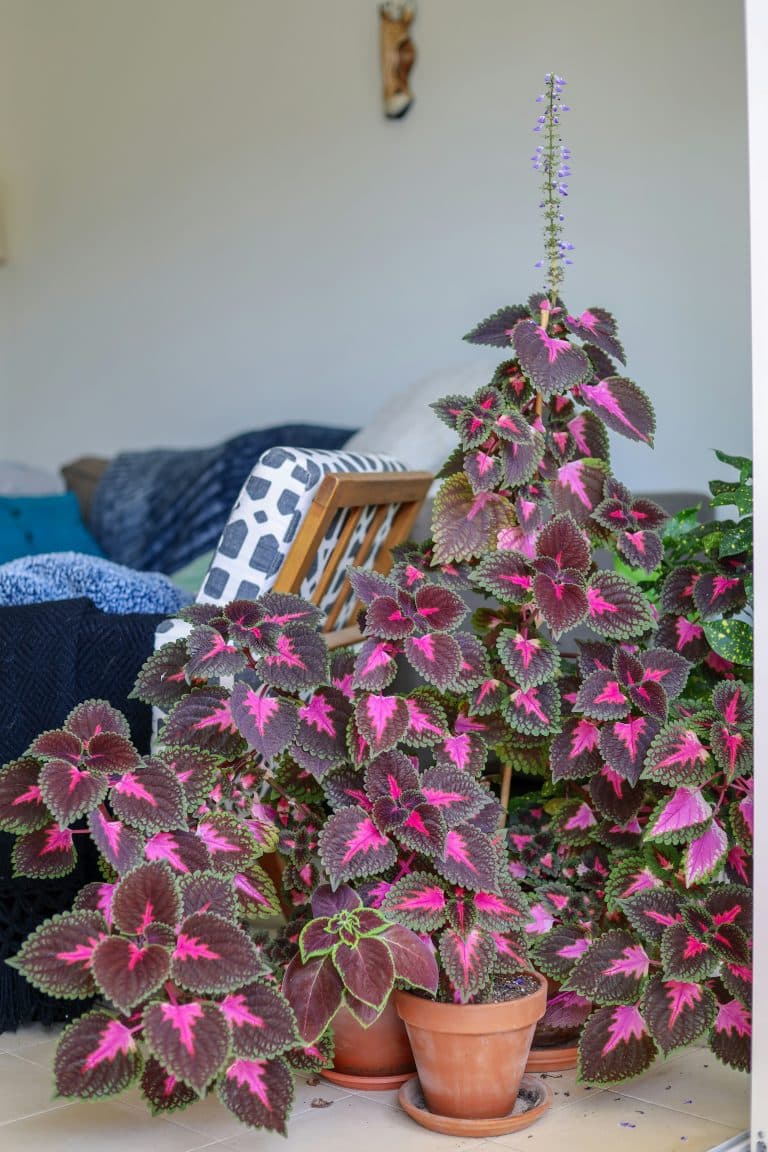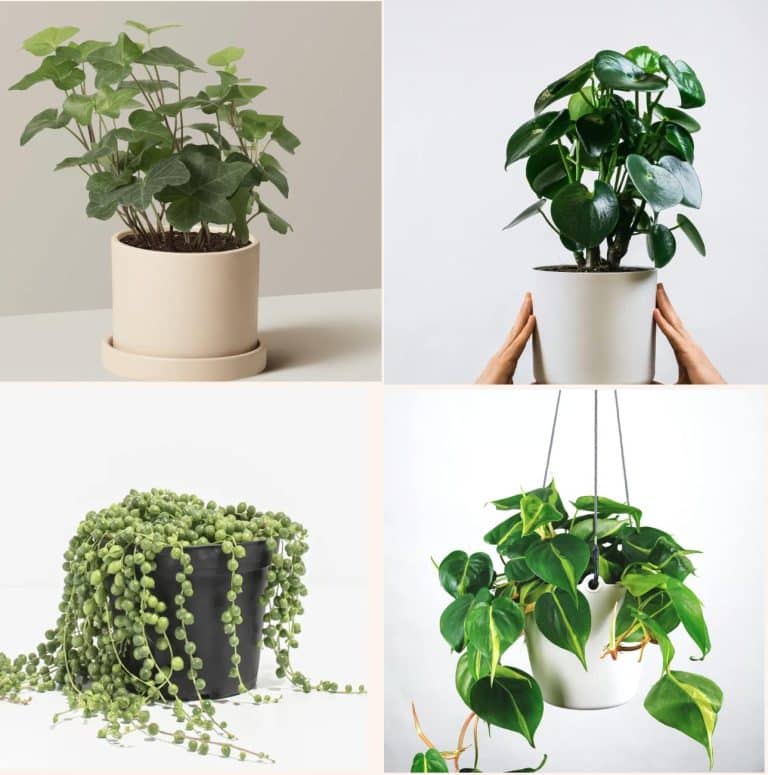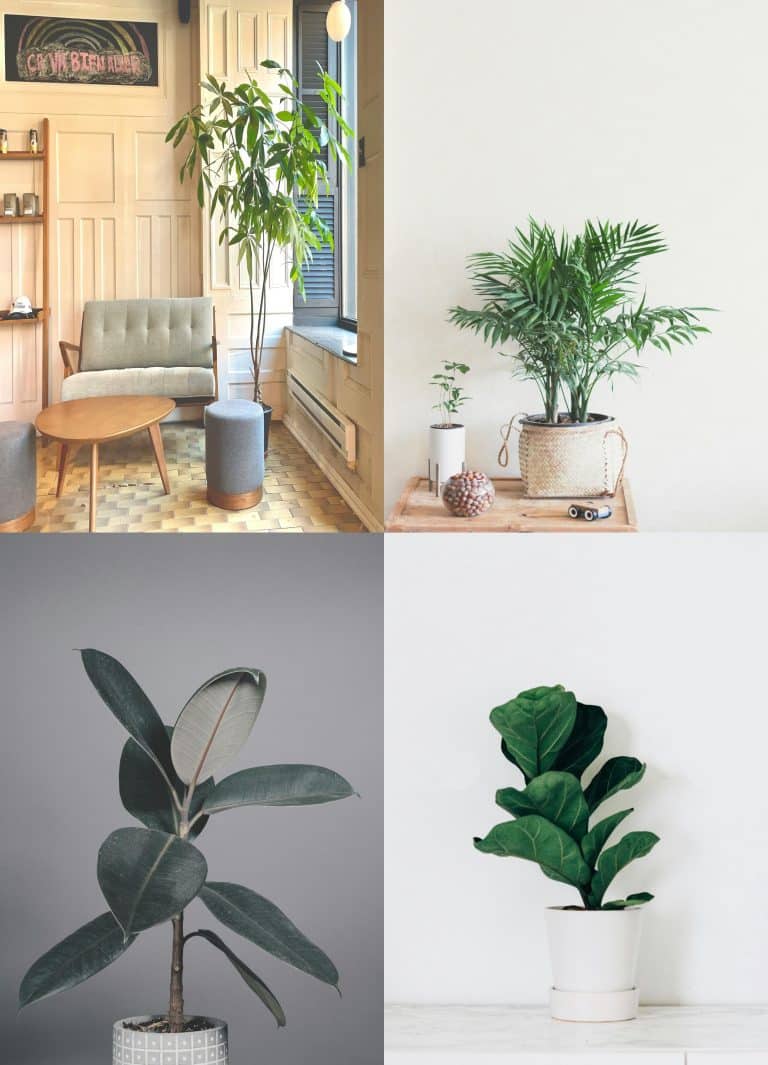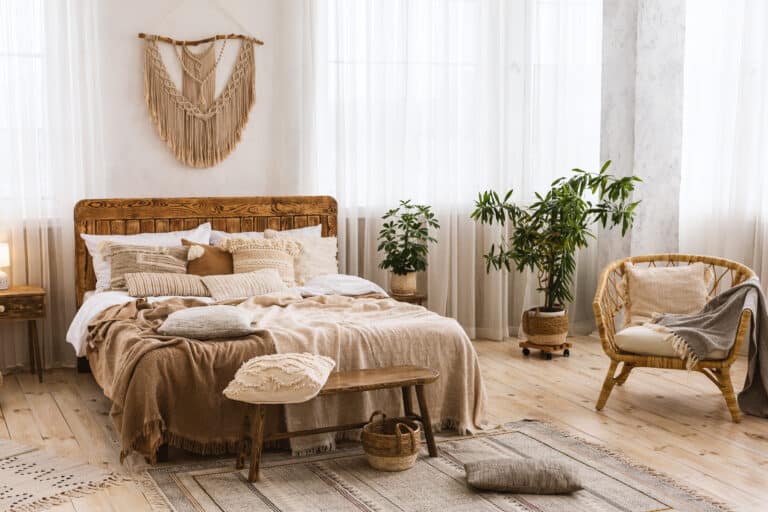Ultimate guide to 50 easy care indoor plants
Look no further—this definitive list of 50 easy care houseplants has everything you need. Discover low-maintenance indoor plants perfect for beginners and busy plant lovers alike
When you purchase through links on our site, we may earn an affiliate commission, which helps sustain our blog!
If you’re a beginner or someone who has often struggled to keep plants alive, don’t worry – this guide of easy care indoor plants is designed for you. Along with the pink indoor plants and purple indoor plants that anyone can care, this is a comprehensive guide for all other indoor plants that are hardy.
Drawing from our experience of living in our Brooklyn community home, where we have dozens of plants among humans that are not all well versed in caring for plants, we’ve curated this below list and some care and propagation tips that have worked for us!
Read also: Our handy maintenance chart for 50 popular houseplants
Summary:
What are the top easy care indoor plants?
Top Easy care indoor plants are: Jade plant, Cactus varieties, Fiddle leaf fig, ZZ plant, Snake plant. These thrive with minimal watering and care efforts, and in typical home conditions!
Snapshot of our Top 5 picks (Swipe Left)
1. Jade plant
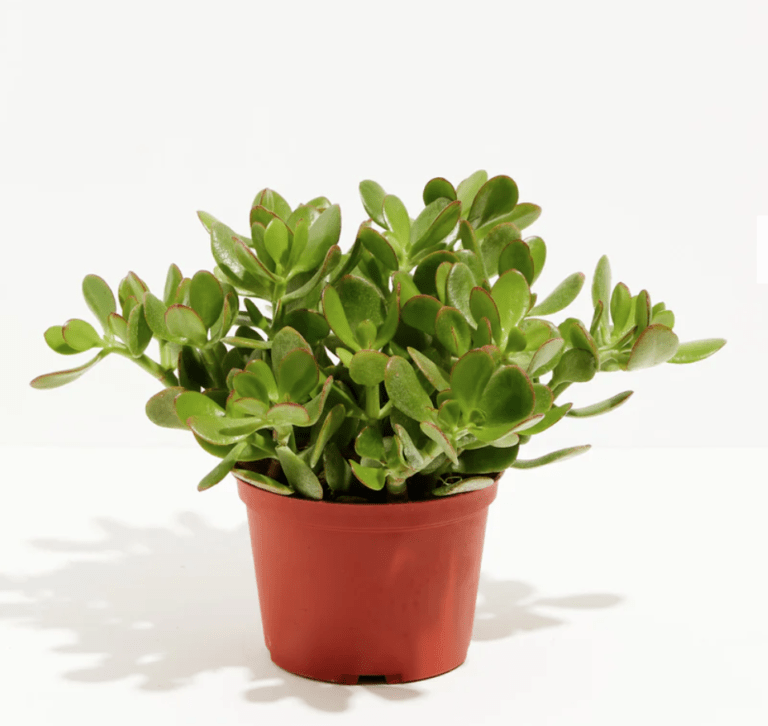
2. Cactus

3. Fiddle leaf fig

4. ZZ plant

5. Snake Plant

Here are our 19 Easy care indoor plants
1. Cast iron plant
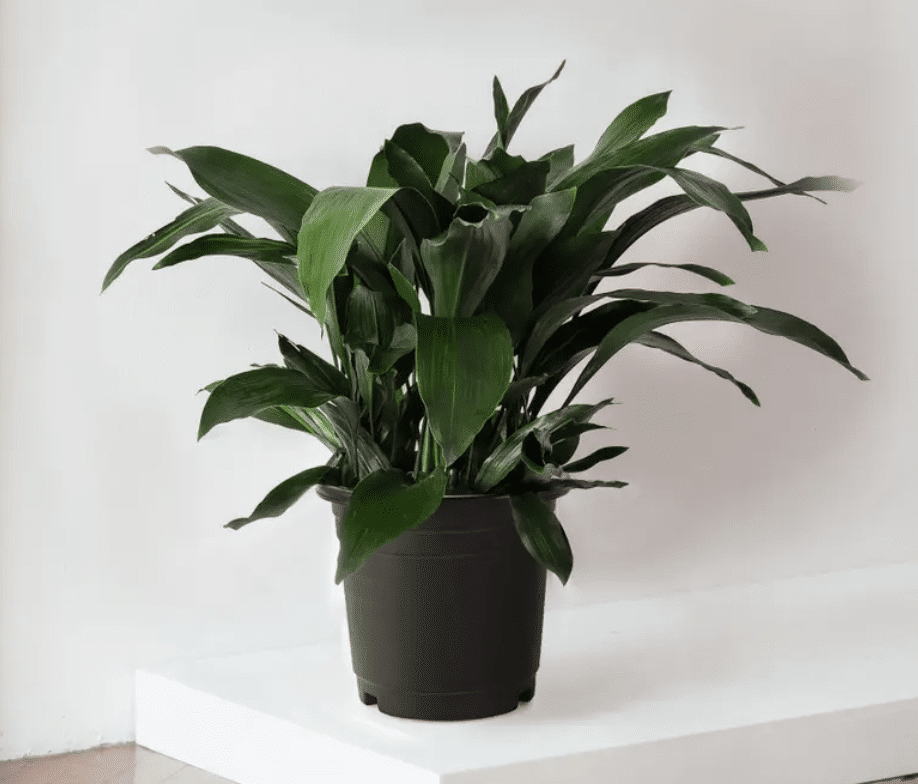
Pet safe
Low light
Grows upto 2 feet
North facing windows
Pet safe
low light
grows to 2 feet
North facing windows
The Cast Iron Plant (aka Aspidistra elatior): This easy care indoor plant, from the Asparagaceae family has long, glossy, dark green leaves. This one is incredibly tolerant and thrives in low light, surviving infrequent watering as well.
We’ve placed ours in the dining room on the first floor where it handles the low light beautifully. Styled in a classic terracotta pot, it brings a warm and rustic feel to our eating nook. The Best thing is that this beautiful plant is non-toxic to pets! When it grows, it can reach up to 2-3 feet tall and wide — a perfect hardy and attractive plant that creates a sense of sanctuary with little to no effort.
Care tip:
- It prefers the soil to be slightly dry between waterings—usually every 1-2 weeks, depending on your home’s humidity.
- Keep an eye out for brown leaf tips, which could indicate overwatering or too much fluoride in the water.
- Use distilled or non-fluoridated water to avoid this common issue or when this issue shows.
Propagation tip:
- Cut a 4-6 inch section from a healthy, mature stem just below the leaf node.
- Remove the lower leaves and place the cutting in a glass or jar filled with water – no leaves are to be submerged.
- Place it in a spot with bright, indirect light and change the water weekly to prevent bacterial growth. Roots typically begin to form in 4-6 weeks
Symbolism and zodiac signs:
- Symbolizes endurance and perseverance due to its hardy nature. Virgos, for their meticulous and nurturing qualities, are well-suited to care for this one.
Pros and cons
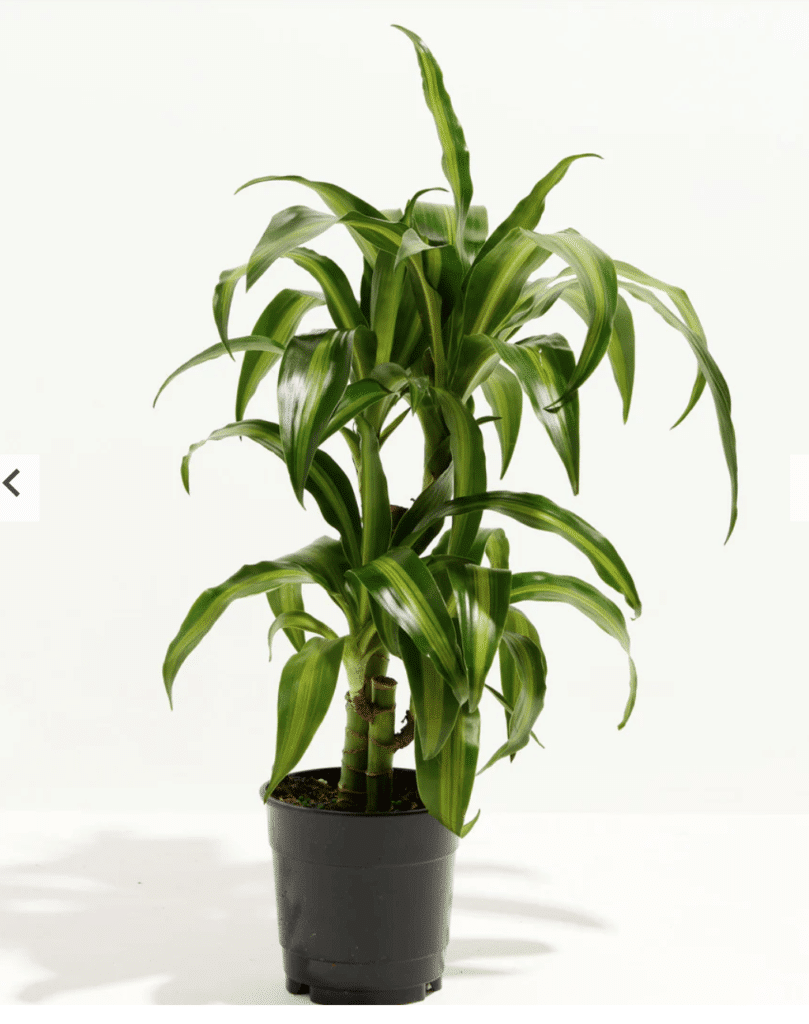
($43)
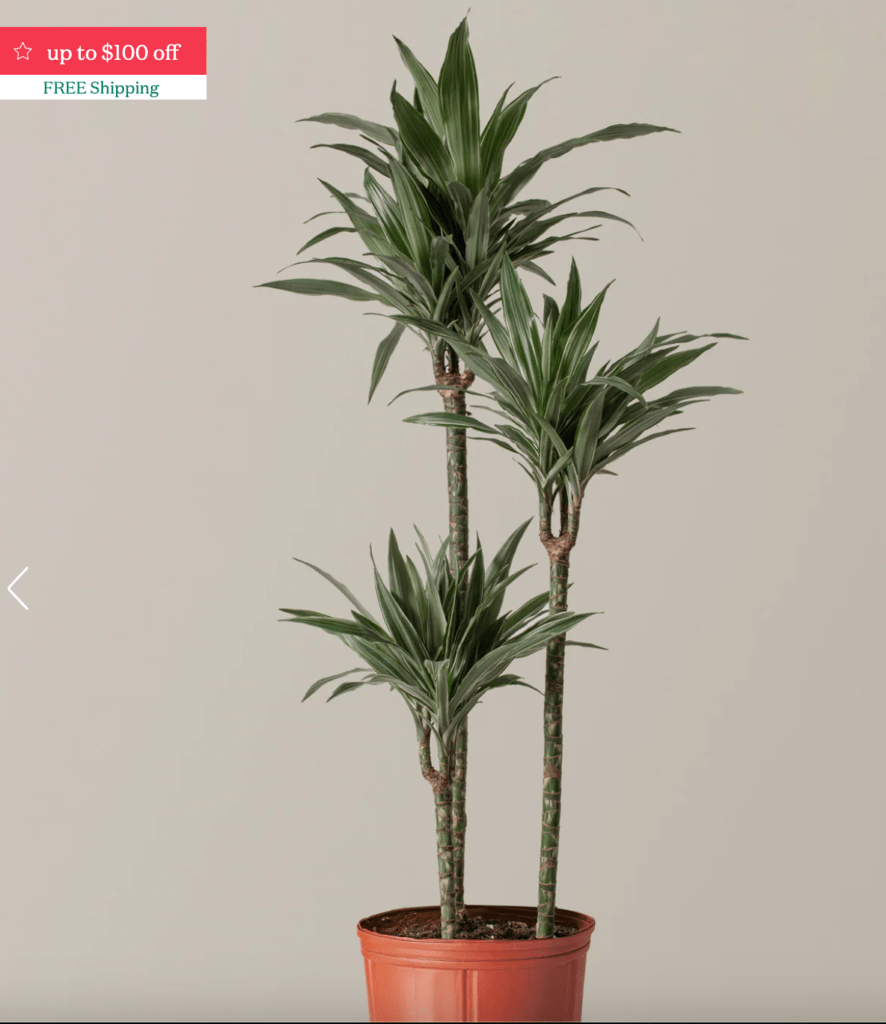
($99)
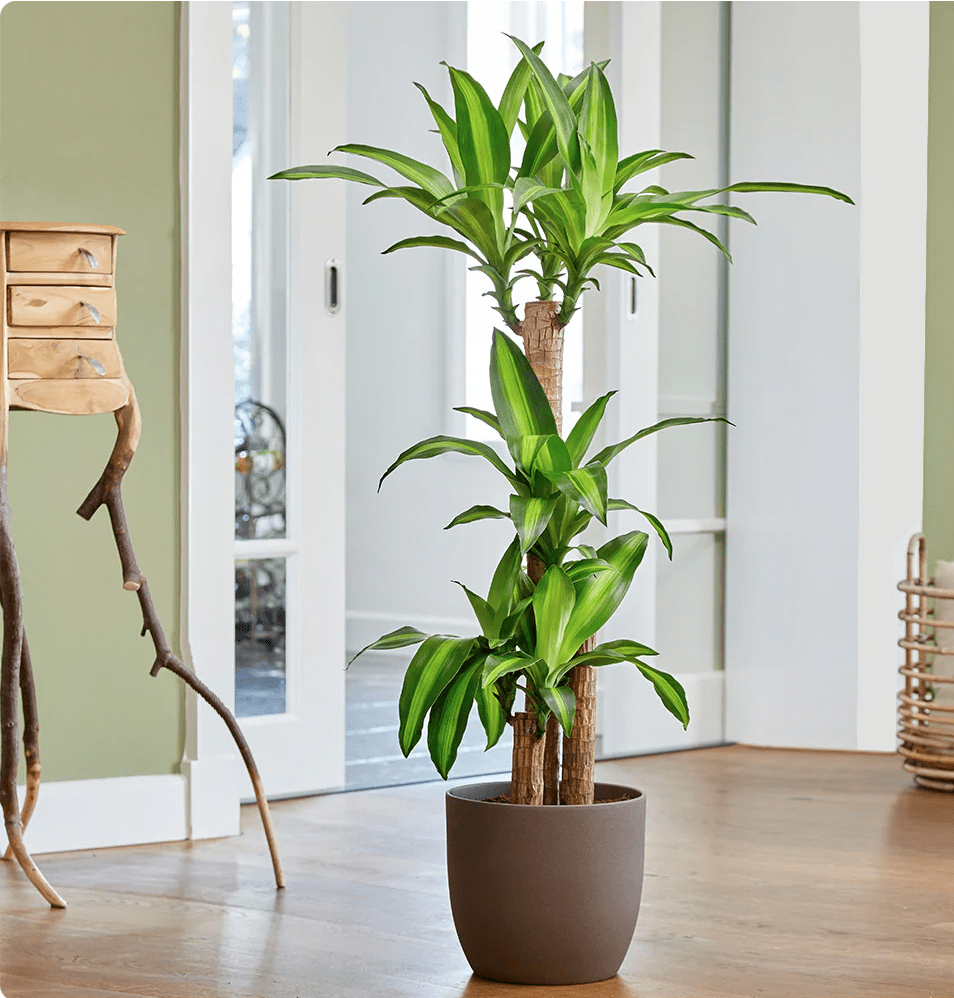
($70)
$30
“For over five years, this plant has been such a resilient and forgiving addition to my living room”
2. Snake plant

Toxic
Low light
Grows upto 4 feet
East/west facing windows
Toxic
low light
grows to 4 feet
East/west facing windows
The The snake plant (aka Sansevieria trifasciata): This easy care indoor plant, from the Asparagaceae family, is a stunning and sturdy addition to any home. It has long, upright leaves with yellow edges and green banding. We have placed ours in one of the east-facing bedrooms on the top floor where it enjoys bright, indirect light. These plants are also a breeze to care for – but they are mildly toxic to pets in that they can cause irritation and digestive issues, so it’s best to keep them out of reach of cats and dogs.
We don’t allow our furry animals to the top floor at all. These plants thrive on infrequent watering and low attention. We have styled this plant in a sleek, white ceramic pot that has lines and is matte finish and is positioned near the window. When fully grown, it can reach up to four feet tall, and though it rarely flowers, when it does, it produces small but fragrant greenish-white blooms that are a an absolute treasure to watch.
Read also: Whale fin snake plant and Cylindrical snake plant care
Care tip:
- Water every 2-3 weeks, and allow the soil to dry out completely between waterings.
- It thrives in bright, indirect light but can also tolerate low light conditions.
- Watch for drooping or yellowing leaves, which can indicate overwatering.
Propagation tip:
- Cut a leaf into sections about 3-4 inches long, making sure each piece has at least one horizontal stripe – the node.
- Place the cut ends into a container filled with about an inch of water.
- No leaves should be submerged. Change the water weekly and roots will appear in about 3-4 weeks. When they are a few inches long plant in well-draining potting soil.
Symbolism and zodiac signs:
- Symbolizes good luck, purity, and positivity. It’s often associated with the zodiac sign Taurus, reflecting their steadfast and resilient nature.
Pros and cons
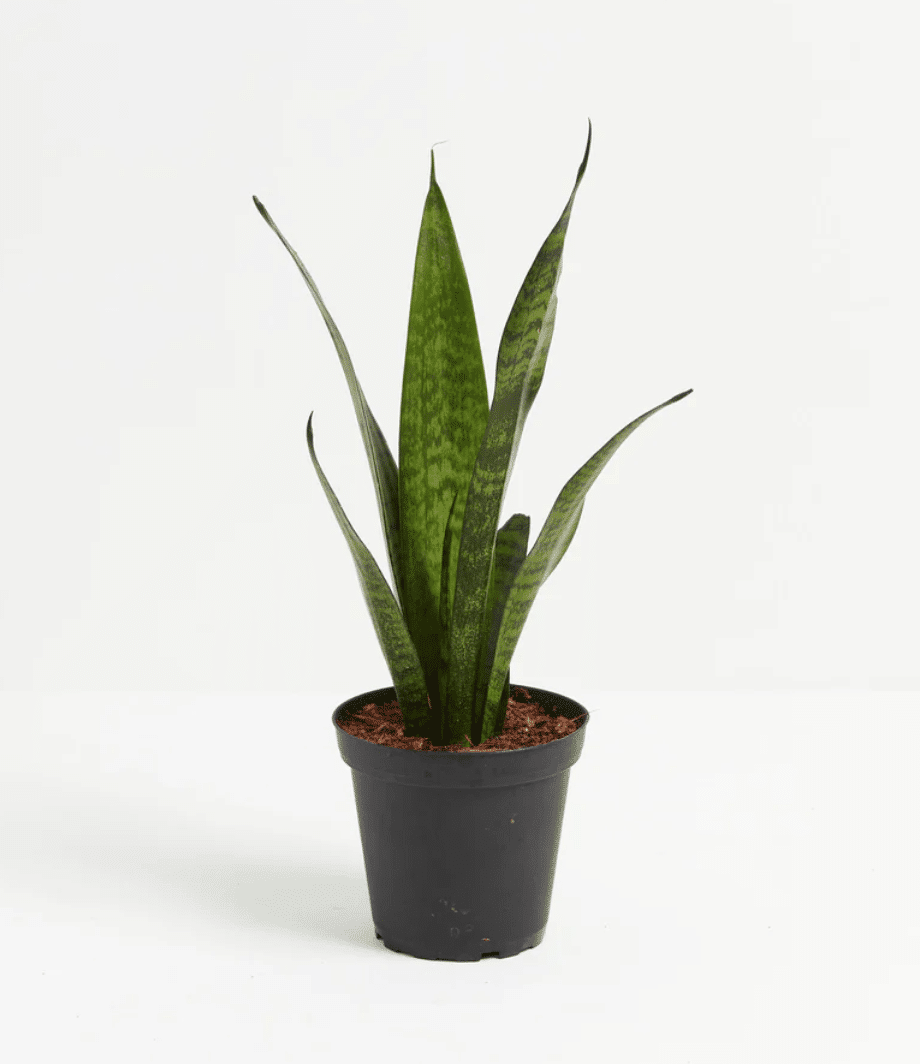
($43)
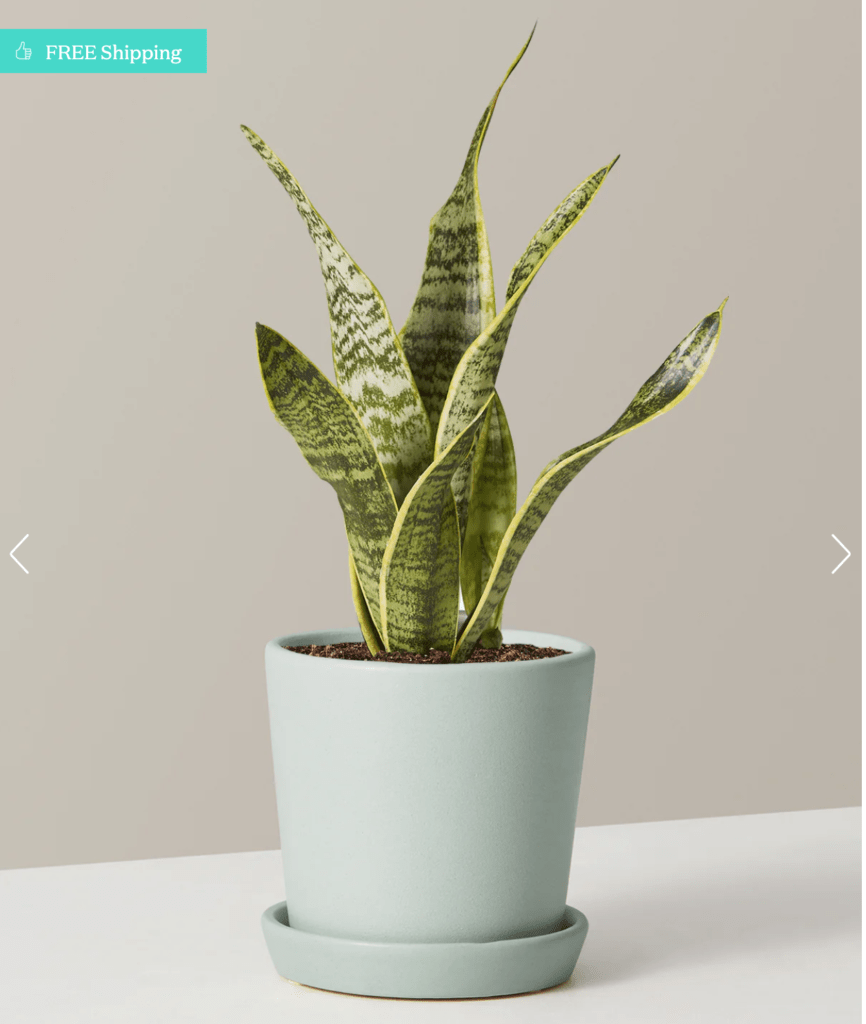
($58))

($28)
$17
“This plant is almost indestructible! Perfect for beginners and looks great”
3. Pothos plant

Mildly Toxic
Low light
Grows upto 10 feet
East/west facing windows
mildly Toxic
low light
grows to 10 feet
East/west facing windows
The Pothos (aka Epipremnum aureum): This easy care houseplant, a member of the Araceae family, has stunning heart-shaped leaves, often variegated with beautiful shades of green, white, or yellow. We have placed our Pothos in one of our east-facing rooms where it thrives in bright, indirect light. Styled in a hanging planter, its trailing vines cascade beautifully.
This one is incredibly low-maintenance, needing only occasional watering when the soil feels dry — ideal for less sunny spots as well. However, be aware that Pothos is toxic to pets if ingested — so keep it out of reach of curious animals — we recommend putting it high above and tying the vines to the walls where cats can’t reach.
When mature, its vines can reach lengths of up to 10 feet, bringing a jungle into your cozy space! (Also — this may look like philodendron, but the main difference is the leaves texture — this one has thicker waxier leaves that come in many colors, while philodendrons come in shades of green and are smooth and thin!)
Care tip:
- Water it every 1-2 weeks, allowing the soil to dry out between waterings.
- Watch for yellowing leaves — a sign of overwatering, or brown tips that indicate too much direct sunlight
Propagation tip:
- Cut a 4-6 inch stem just below a node with 4-5 leaves.
- Place it in a jar of water, ensuring the node is submerged, and then place in bright, indirect light.
- Roots will develop in 2-4 weeks
Symbolism and zodiac signs:
- The Pothos plant symbolizes perseverance and prosperity — ideal for Scorpios!
Pros and cons
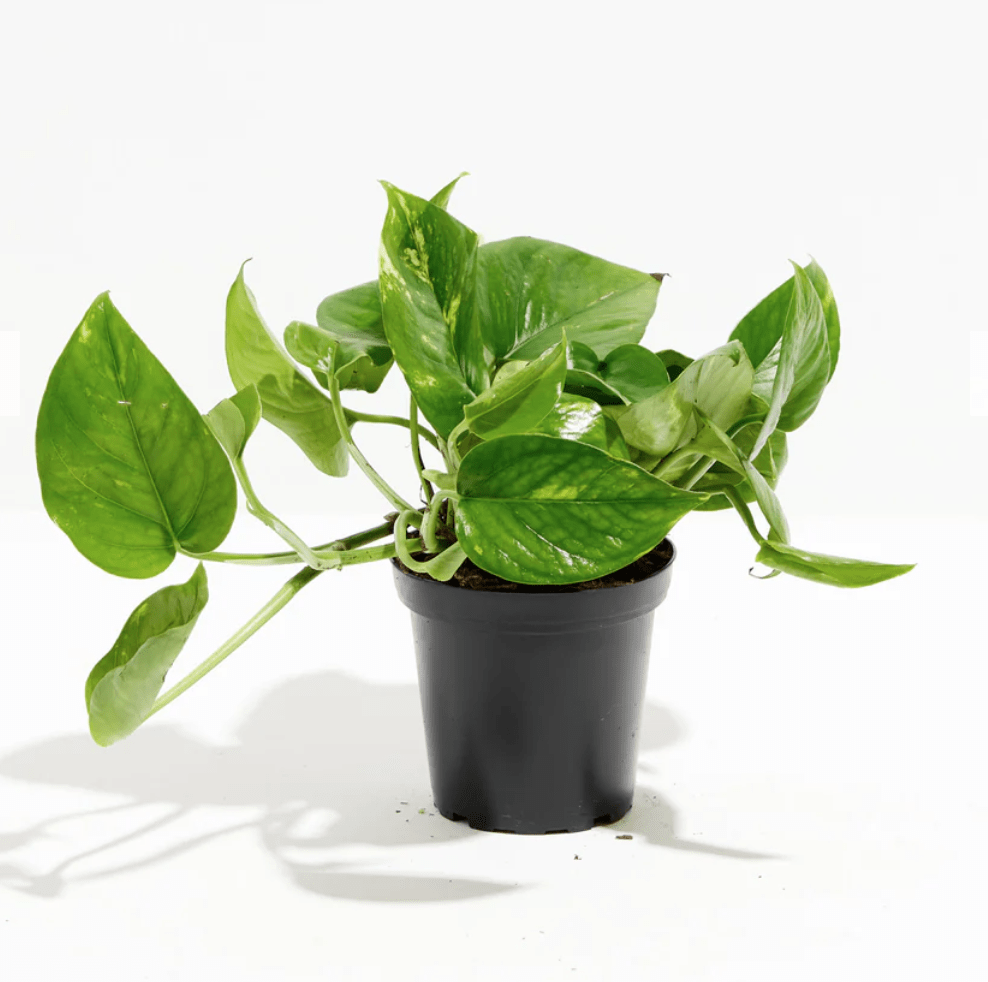
($43)
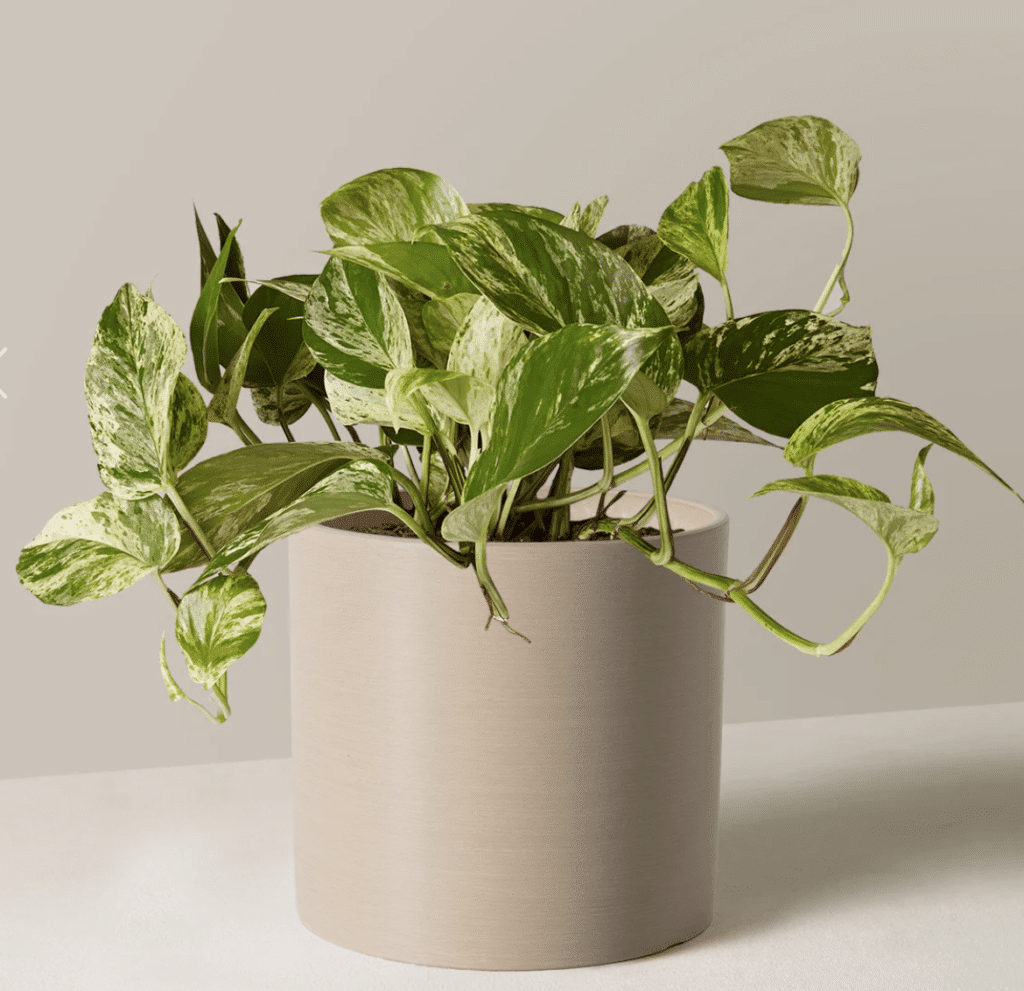
($48)
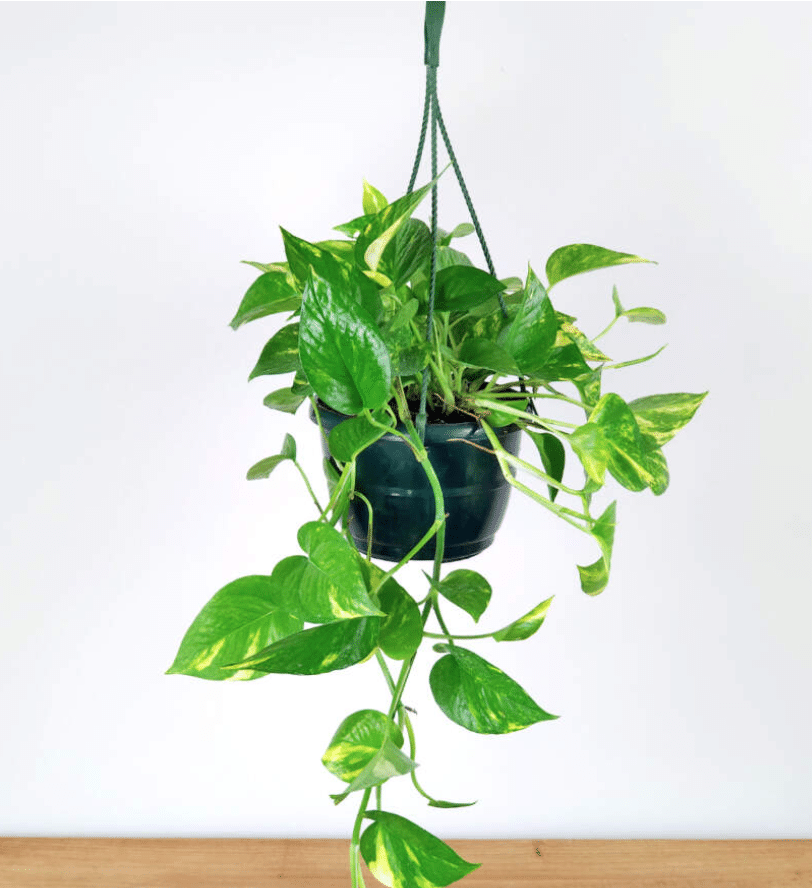
($35)
$44
“My Golden Pothos has grown so quickly! It’s perfect for hanging baskets and requires minimal maintenance”
4. ZZ plant
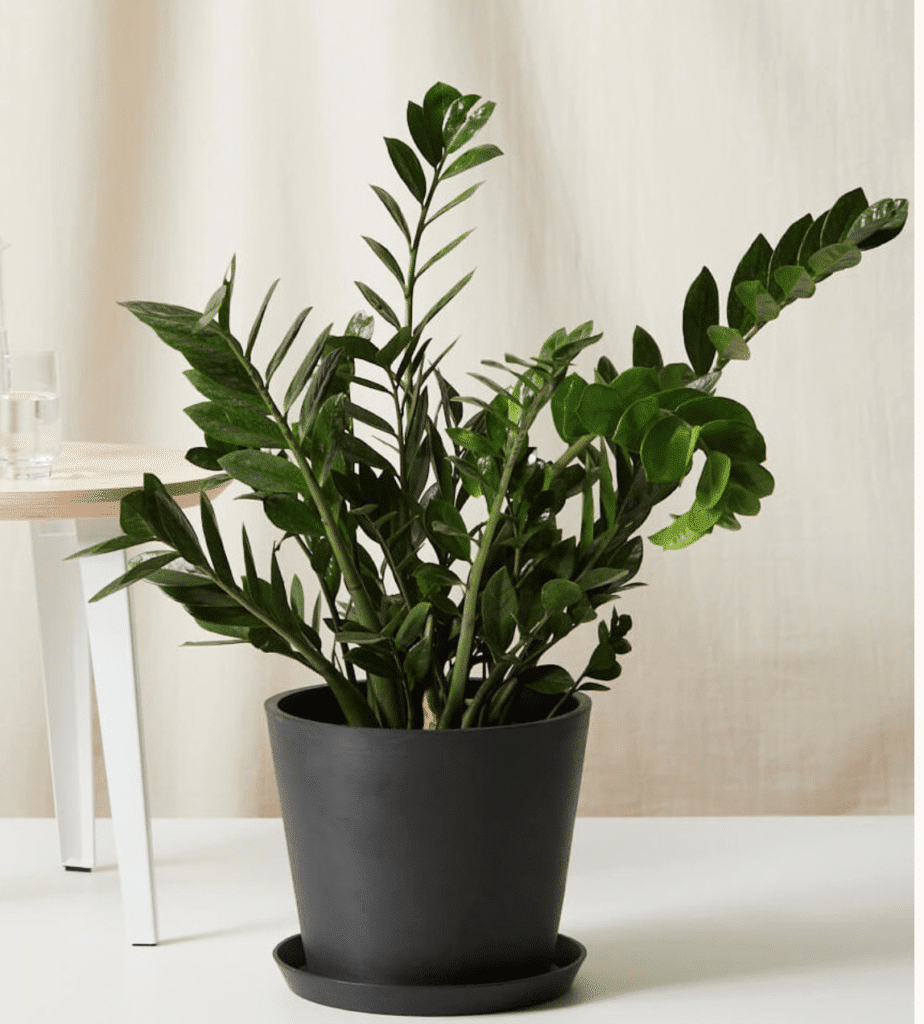
mildly Toxic
Low light
Grows upto 3 feet
East/west facing windows
mildly toxic
low light
grows to 13 feet
East/west facing windows
The ZZ plant (aka Zamioculcas zamiifolia): This easy care indoor plant, a member of the Araceae family, has waxy, lush leaves that cascade elegantly. Known for its resilience, this one thrives in low to medium light conditions.
We’ve found the perfect spot for ours in the north-facing bedrooms on the top floor, where the light is low but sufficient for this plant. The sleek, matte black planter we have styled it in complements its lush waxy leaves. Care for the ZZ plant is super easy —water sparingly and watch it thrive — best for those who forget to water plants. At its tallest it is about 3 feet high. Note, however, that it is toxic to pets, so it’s best kept out of reach of curious cats and dogs.
Care tip:
- Water it every 2-3 weeks. Allow the soil to dry out completely between waterings.
- Watch for yellowing leaves that indicate overwatering.
Propagation tip:
- Cut a healthy leaf with an inch of stem . Place it in a glass of water with only the stem submerged, not the leaf.
- Place the glass in bright, indirect light and change the water every week.
- Roots will develop in 3-4 weeks, then plant the cutting in well-draining potting soil
Symbolism and zodiac signs:
- Often seen as a symbol of prosperity and endurance, this plant is best suited for taurus and capricorn!
Pros and cons
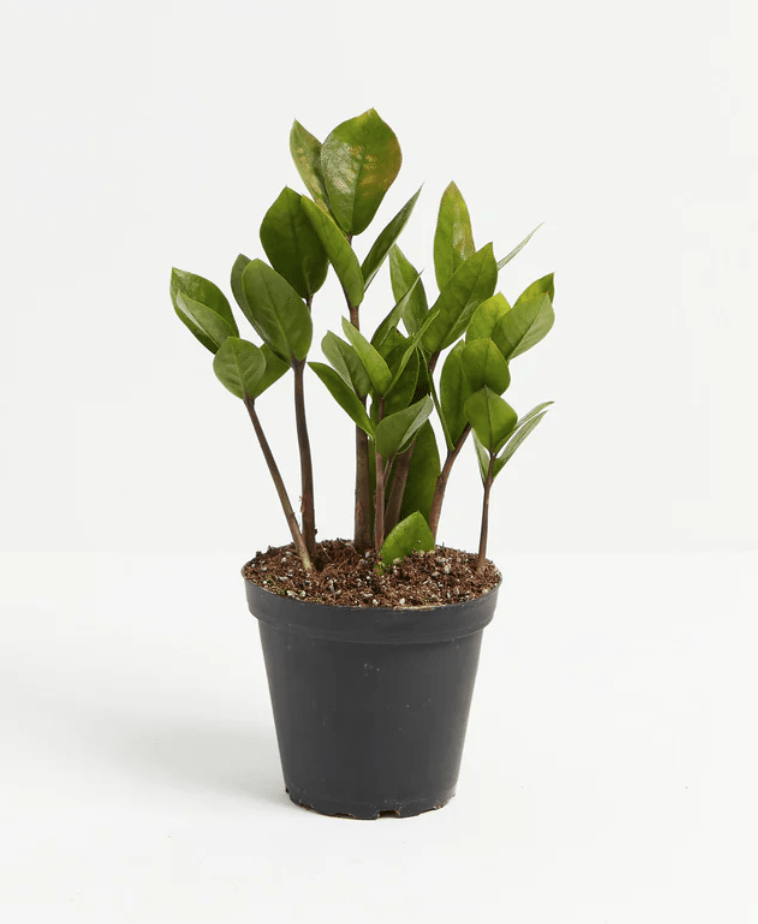
($43)
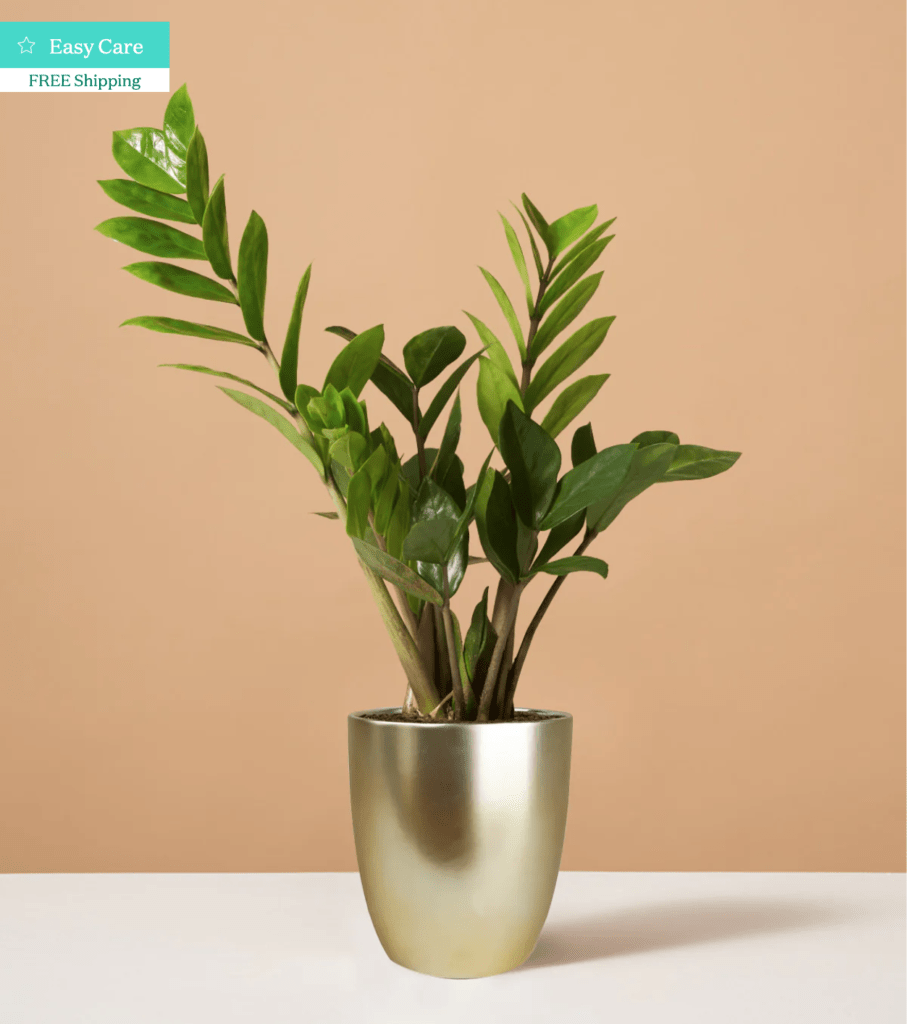
($41)

($18)
$24
“ZZ is a favorite in your house.. it sits in our bedroom next to lamp. We haven’t killed it in 3 years!”
5. Spider plant
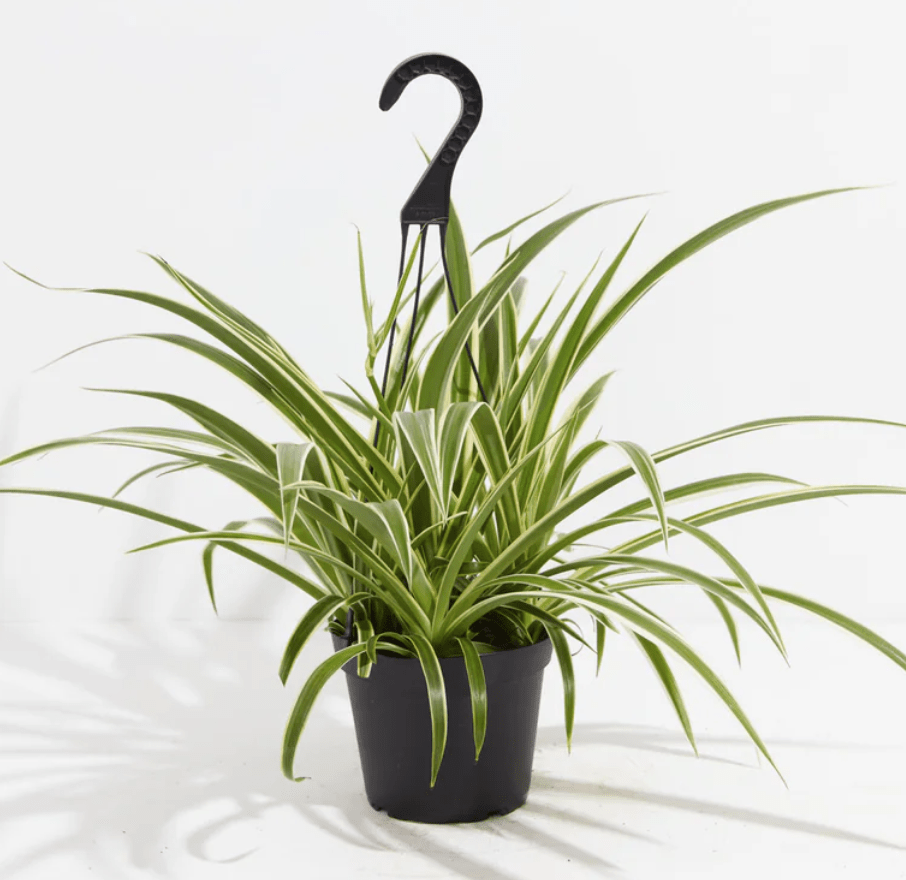
Pet safe
Medium light
Grows upto 3 feet
East/west facing windows
pet safe
Medium light
grows to 3 feet
East/west facing windows
The Spider Plant (aka Chlorophytum comosum): This easy care indoor plant is a member of the Asparagaceae family. It is super slender, has arching leaves, and boasts a bursting green with a distinctive creamy white stripe running down the center. This plant doesn’t just sit pretty—its cascading foliage can look stunning in hanging baskets or even in high shelves where you don’t get much sunlight.
We have placed our Spider Plant in the east-facing reading room, where it benefits from a lot of indirect light. This spot makes its bushy, grass-like leaves a cozy focal point in the r6om. It’s extremely easy to care for, btw. They love to be neglected, and they are also non-toxic to pets and humans.
Occasionally, the Spider Plant produces small white flowers and spawns mini “spiderettes” that can be propagated easily. At its full length it comes upto about 2 feet which is a great balance between small and large plants. Personally, we’ve styled it in a maroon ceramic pot that complements both the plant and the decor of our rustic reading room
Care tip:
- Water weekly, allowing the top inch of soil to dry out between waterings.
- Place in bright, indirect light and avoid direct sunlight to prevent leaf scorch.
- Browning leaf tips can indicate fluoride sensitivity – try using distilled or rainwater.
Propagation tip:
- Place a spiderette in a glass jar filled with room temperature distilled water. Only roots are submerged, not the leaves.
- Place the jar in bright, indirect light and change the water every week or so to prevent stagnation.
- Roots should start to appear within a week or two. Once they are 2-3 inches long, transfer to soil.
Symbolism and zodiac signs:
- The Spider Plant symbolizes abundance, and purity, and good luck because of its prolific nature in producing offshoots. Perfectly suited for Virgo’s who are known for their attention to health and cleanliness, and are most apt to care for this plant.
Pros and cons

($43)
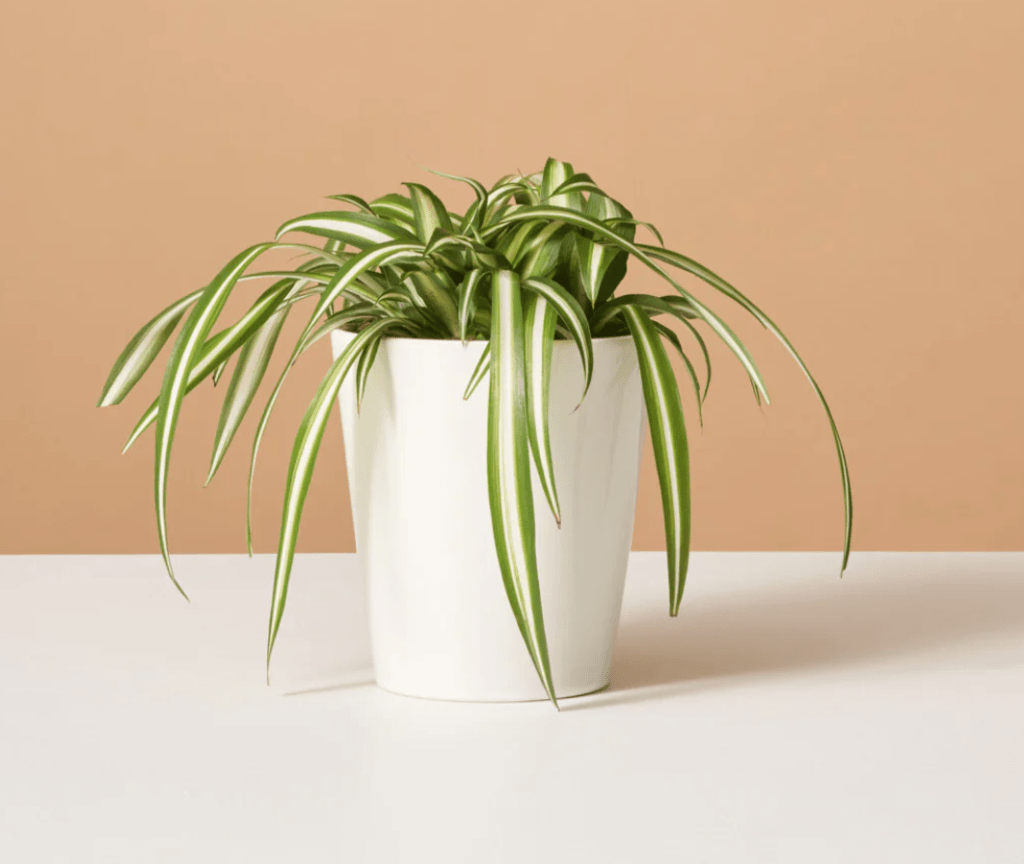
($69)
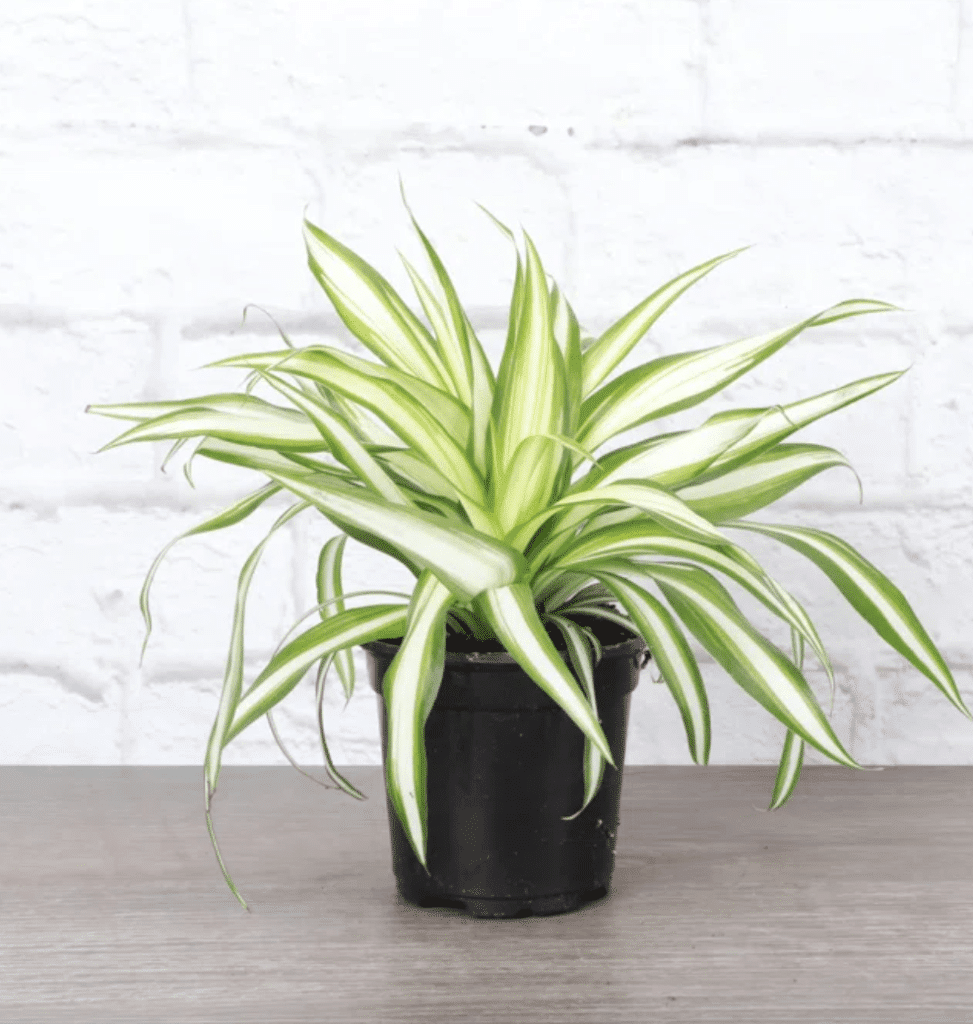
($37)
$15
“This plant is very forgiving and easy to propagate. Great for plant beginners”
6. Bromeliad
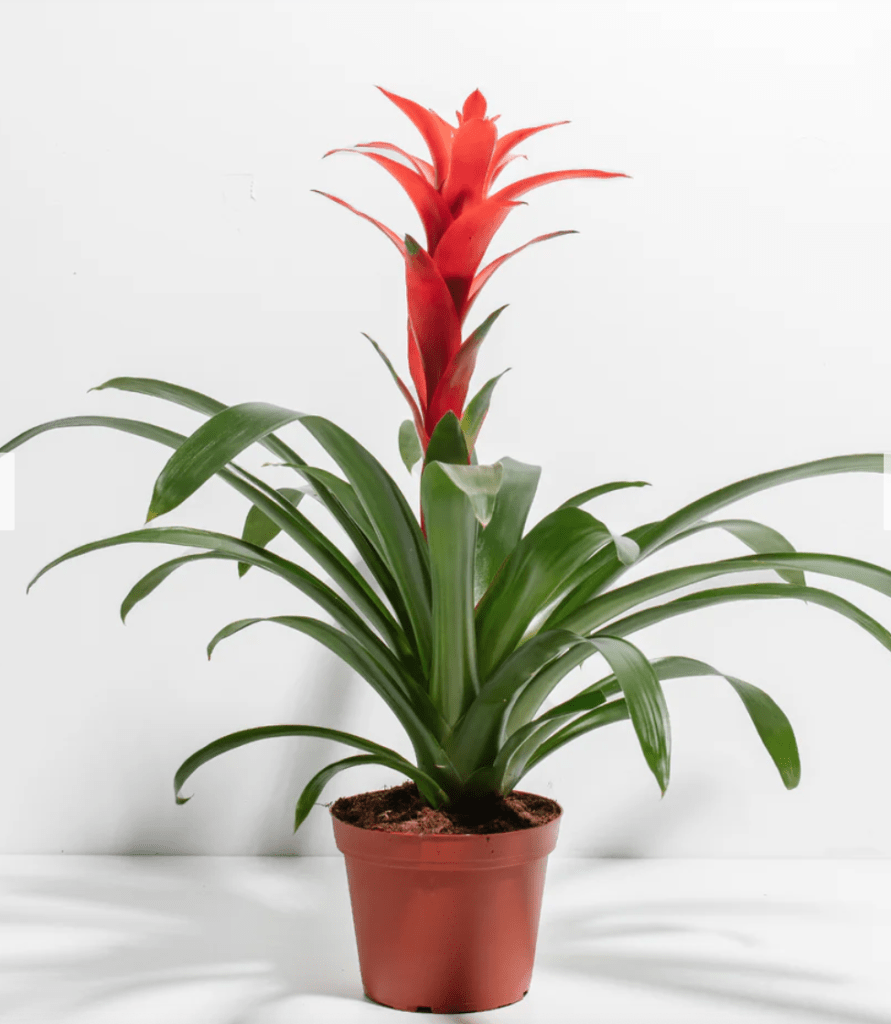
Pet safe
Medium light
Grows upto 3 feet
East/west windows
pet safe
low light
grows to 3 feet
East/west facing windows
The Bromeliad (aka Bromeliaceae) is a striking easy care Indoor plant that belongs to the Bromeliaceae family. This plant boasts rosettes of stiff, spiny-edged leaves that form a central cup that is often filled with water. The foliage can vary in color from deep green to vibrant red, pink, or purple, adding a bold touch to any room. One of its most captivating features is its flower that emerges from the center and can last several 7onths!! They are usually bright red, pink, or yellow.
We have placed it in our east-facing reading room where it receives indirect light and have styled in a ceramic planter. The plant is low-maintenance and requires only occasional watering. Importantly, most Bromeliads are non-toxic to pets! When mature, Bromeliads can reach up to 3 feet tall and wide.
Care tip:
- Water your Bromeliad every 1-2 weeks: central cup should be filled but not stagnant.
- Place it in indirect light – an east-facing room.
- Watch for signs of dryness, like browning leaf tips, and ensure good air circulation to prevent rot.
- Bromeliads thrive on high humidity, so mist occasionally
Propagation tip:
- Wait until the “pups” (offsets) are at least one-third the size of the parent plant, then carefully cut them off with a sterilized knife.
- Place the pups in a well-draining mix of half orchid bark and half potting soil.
- It typically takes 2-3 months for the pups to establish roots.
- Propagation in water is not recommended for this one!
Symbolism and zodiac signs:
- Symbolizes resilience and uniqueness, making it a great match for the determined and resourceful Scorpio
Pros and cons
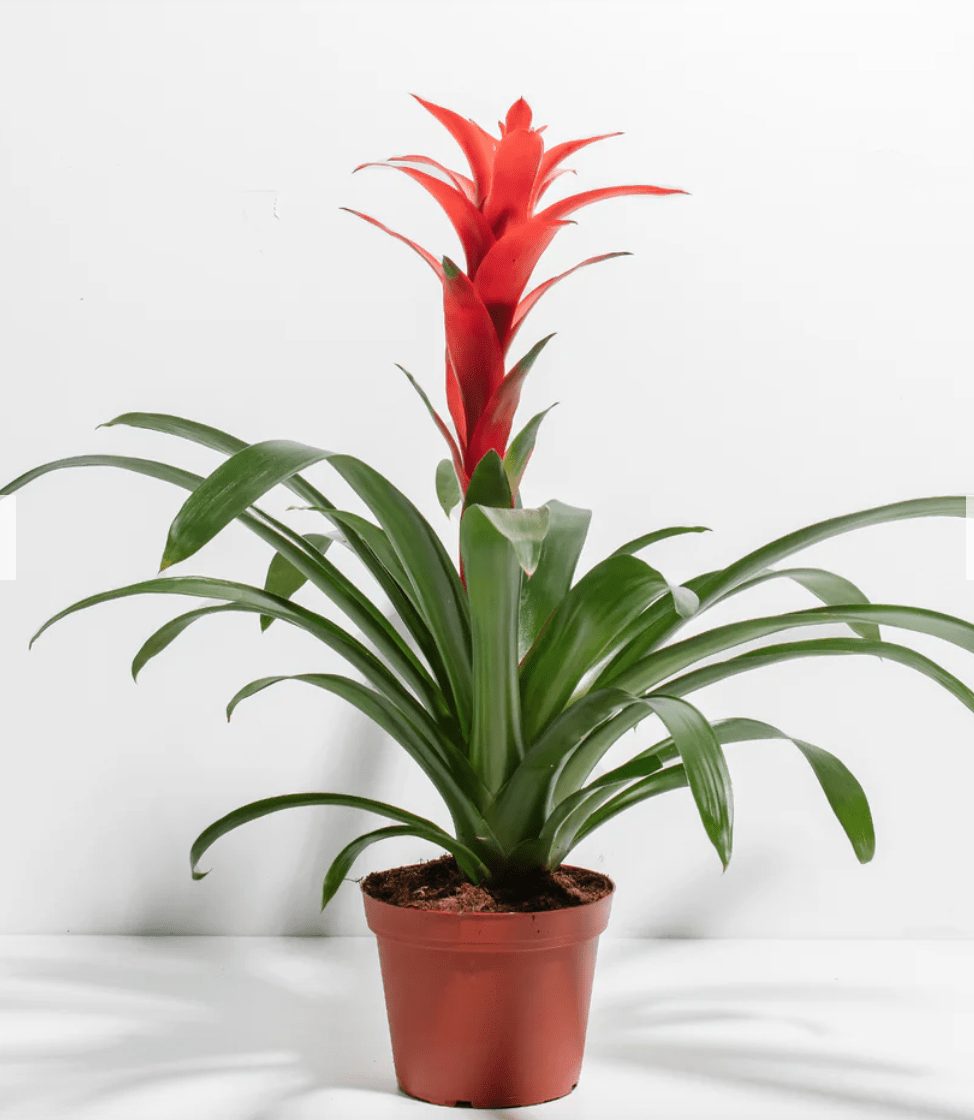
($46)
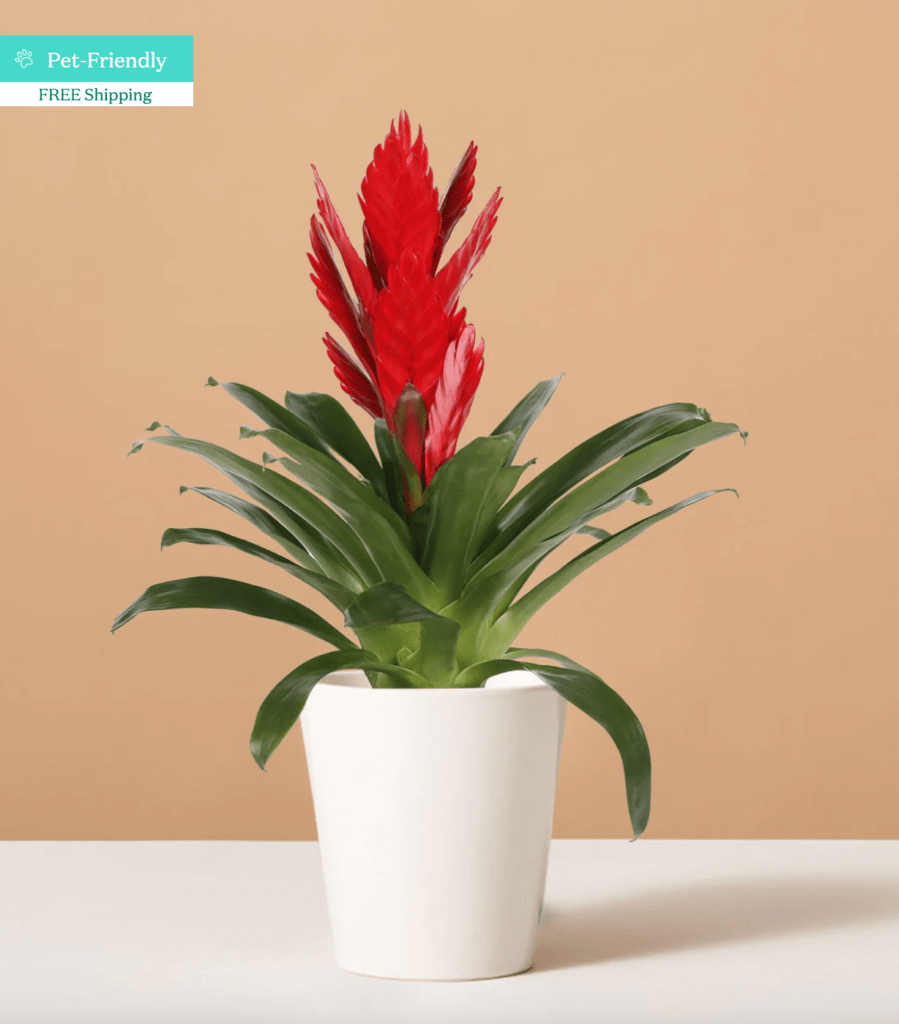
($78)

($49)
$20
“These vibrant colors in the flowers are like having bouquets all year long!” – Amazon Customer
7. Peace lily
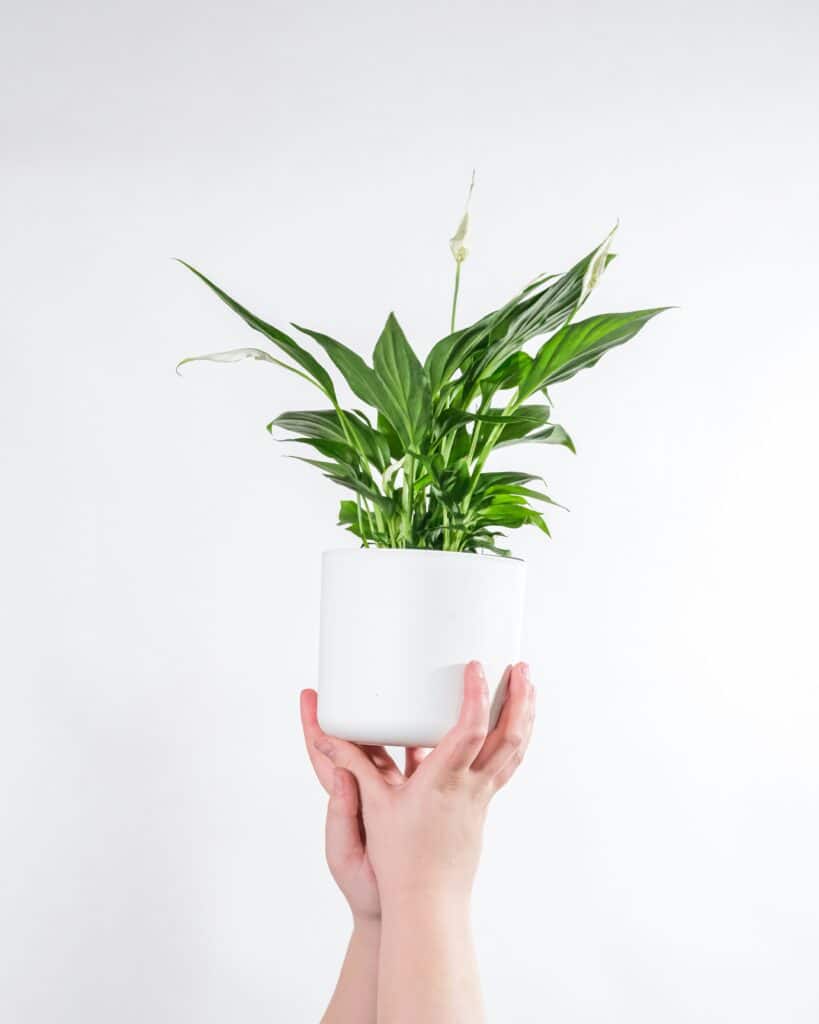
Toxic
Low/Medium light
Grows upto 3 feet
East/west facing windows
Toxic
low light
grows to 3 feet
East/west facing windows
The Peace Lily (aka Spathiphyllum): this easy care indoor plant, from the Araceae family, has glossy, deep green leaves and beautiful white spathes that bloom around the spadix. This one thrives in medium to low light, so it fits perfectly in our the west-facing room on the top floor. Peace Lilies are also easy to care for – moderate watering when the soil feels dry. They are HIGHLY toxic to pets, however, your pets could literally die when ingesting any part of this plant, so keep them out of reach of cats and dogs. T
Their highlight is the beautiful white flowers they produce, with a gentle, refreshing fragrance that lasts for weeks. These blooms typically appear in spring and can reappear throughout the year with proper care. We have styled ours in a black ceramic pot to complement its lush foliage and clean lines. They will grow up to 3 feet tall
Read also: Variegated peace lily care
Care tip:
- Water about once a week. Keep the soil moist but not soggy.
- It enjoys higher humidity, and will droop to signal it’s thirsty but perks up quickly after watering.
- Watch for yellow leaves – they indicate overwatering.
Propagation tip:
- They are best propagated through division rather than in water.
- Remove the plant from its pot, and separate the root clumps into sections with at least 3 leaves each.
- Plant these sections in well-draining potting soil in bright, indirect light.
- Maintain moist soil. Wait 4-6 weeks for the roots to flourish!
Symbolism and zodiac signs:
- Symbolizes purity, tranquility, and rebirth. Ideal for Libras, who are known for their love of harmony and balance
Pros and cons
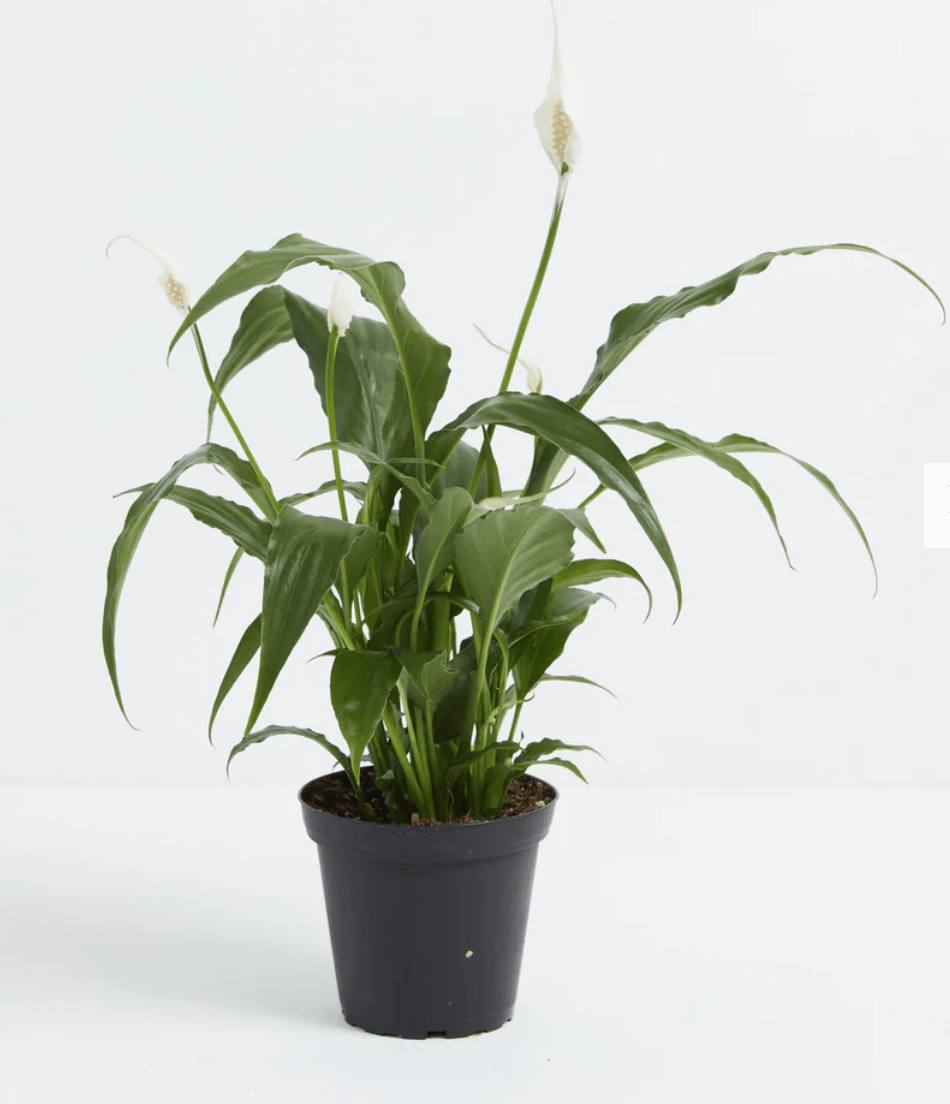
($43)
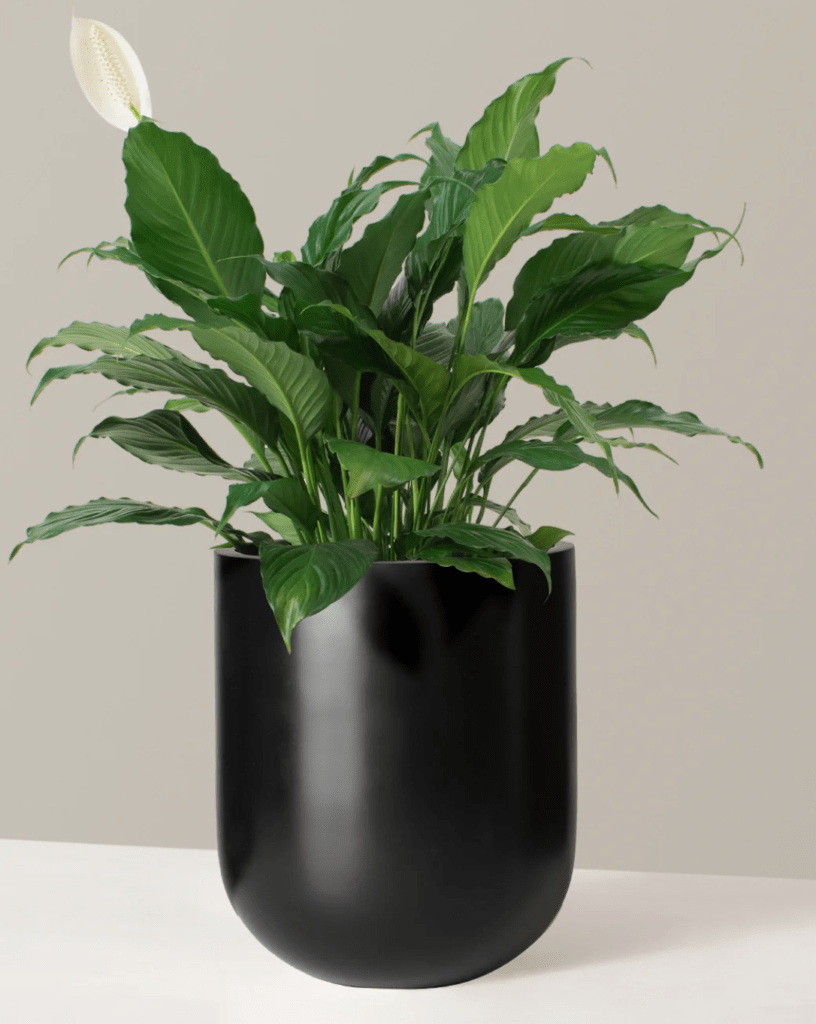
($98)

($71)
$31
“Love the white blooms. It’s been doing great in my living room” – Amazon customer
8. Aloe vera

Toxic
Bright light
Grows upto 3 feet
South facing windows
Toxic
Bright light
grows to 3 feet
East/west facing windows
Aloe Vera (aka Aloe barbadensis miller): This easy care indoor plant, from the Asphodelaceae family, has thick, fleshy, green leaves edged with small teeth. This hardy one thrives in bright, indirect light and requires minimal watering. We have placed ours in the top floor south-facing room windowsill to soak up plenty of sunlight.
Aloe Vera is great for treating minor burns and skin irritations – but consult your doctor before using it. It’s toxic to pets, ingesting in large quantities can cause stomach upset. Ours is styled in a small terracotta pot, as it can grow only upto 20-24 inches tall. Expect tubular yellow flowers in the summer!
Care tip:
- Needs water every 3 weeks or when the top 2 inches of soil are dry.
- Avoid overwatering—look for soft, mushy leaves as a sign of excess moisture.
- It prefers well-draining soil and can handle low humidity.
Propagation tip:
- Cut a healthy aloe vera leaf, let it dry for 1-2 days until the cut end calluses, then place it in well-draining soil with the cut end buried 1-2 inches deep.
- Water lightly every few days. Roots should form in 3-4 weeks.
Symbolism and zodiac signs:
- Symbolizes healing and protection, and it’s well-suited for Virgo, known for their nurturing and practical nature
Pros and cons
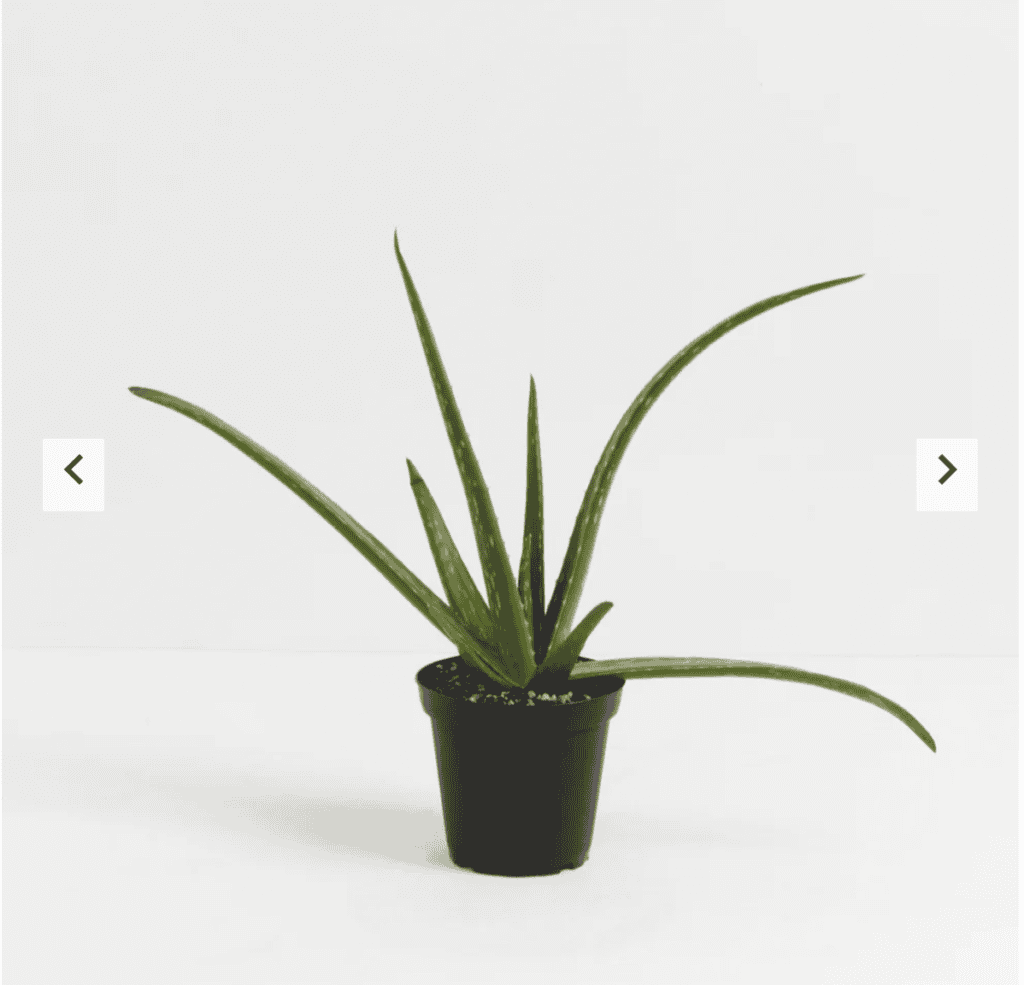
($43)
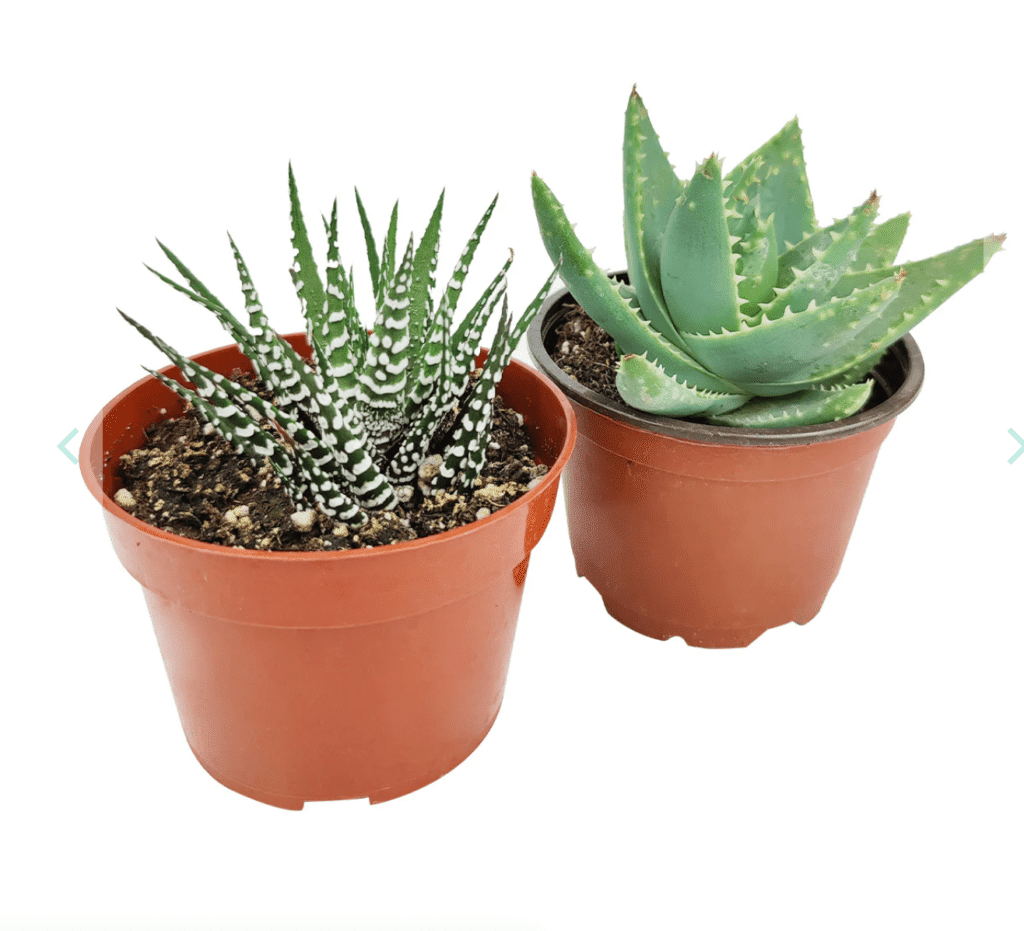
($19)
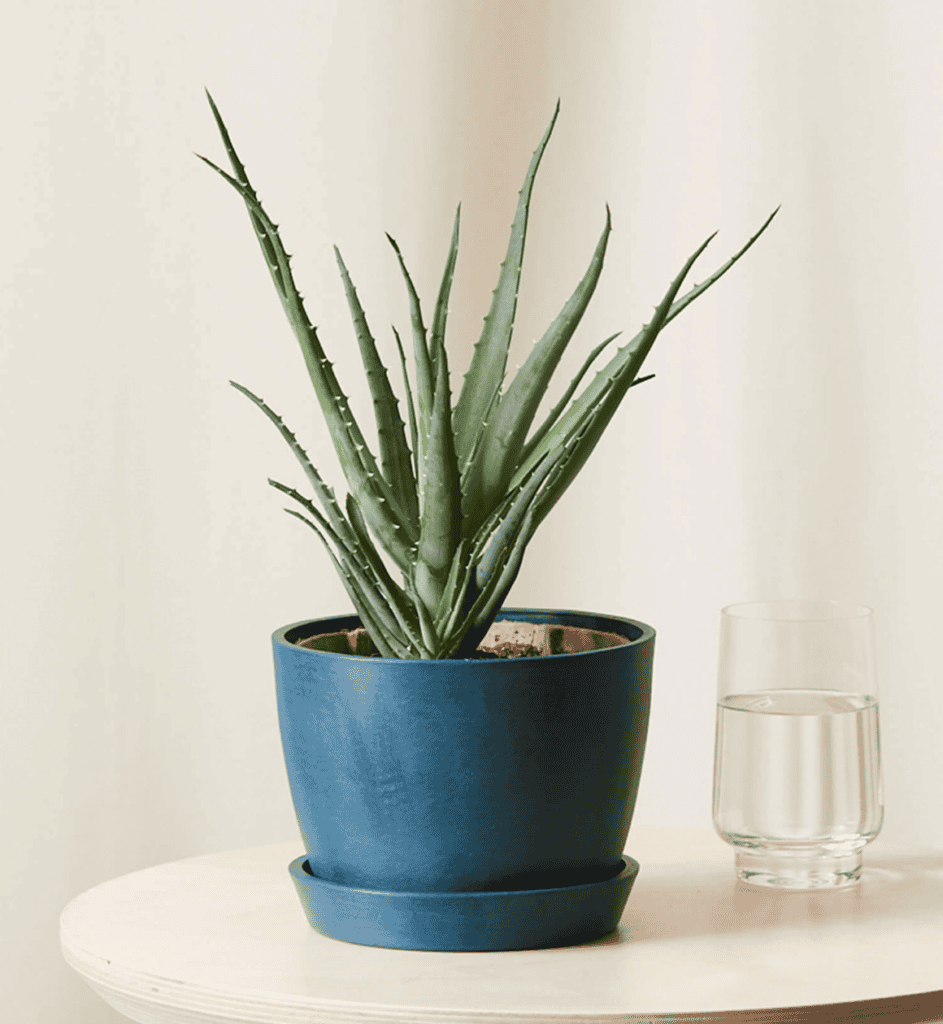
($33)
$34
“This plant is perfect for dry conditions. It’s doing great in my sunny window”
9. Boston fern

Safe
Low light
Grows upto 3 feet
North facing windows
Safe
Low light
grows to 3 feet
North facing windows
The Boston Fern (aka Nephrolepis exaltata): This easy care indoor plant, part of the Nephrolepidaceae family, has lush, arching fronds with feather-like leaflets. We have placed ours in one of our North-facing room.
This one thrive in low to medium light and prefer high humidity – so a bit more demanding, but worth it for their aesthetic appeal. These could also work great in bathroom as hanging plants! They are non-toxic to pets, and their vibrant green foliage can grow up to 2-3 feet long. Keep the soil consistently moist and mist regularly to maintain its lush appearance. We recommend styling them in hanging baskets.
Care tip:
- Place it in indirect light and keep the soil consistently moist, watering when the top inch feels dry.
- Mist regularly to maintain high humidity.
- When fronds turning yellow, it indicates low humidity or under-watering.
Propagation tip:
- Divide a healthy plant into sections which has fronds and roots.
- Plant them in well-draining potting soil.
- Keep the soil moist and place in bright, indirect light. Roots should establish in 4-6 weeks.
Symbolism and zodiac signs:
- Symbolizes sincerity and shelter. Ideal for Pisces known for their nurturing and empathetic nature
Pros and cons
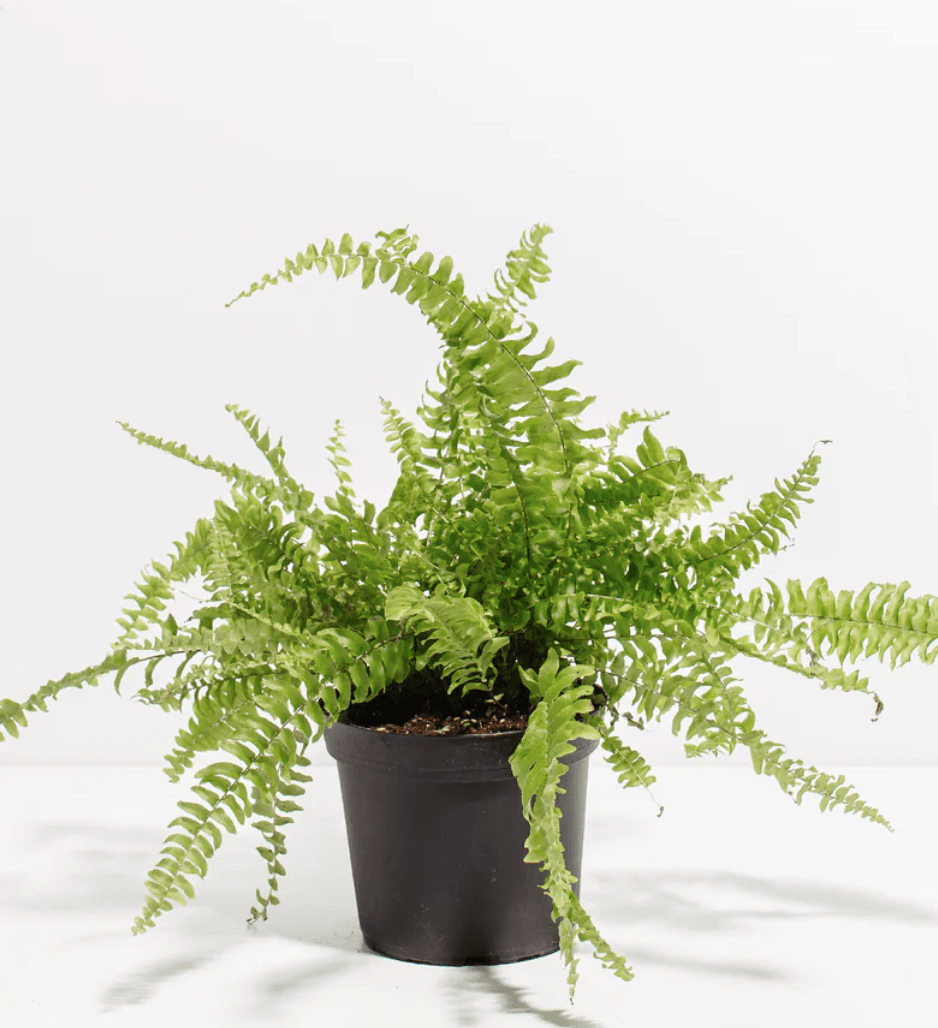
($58)
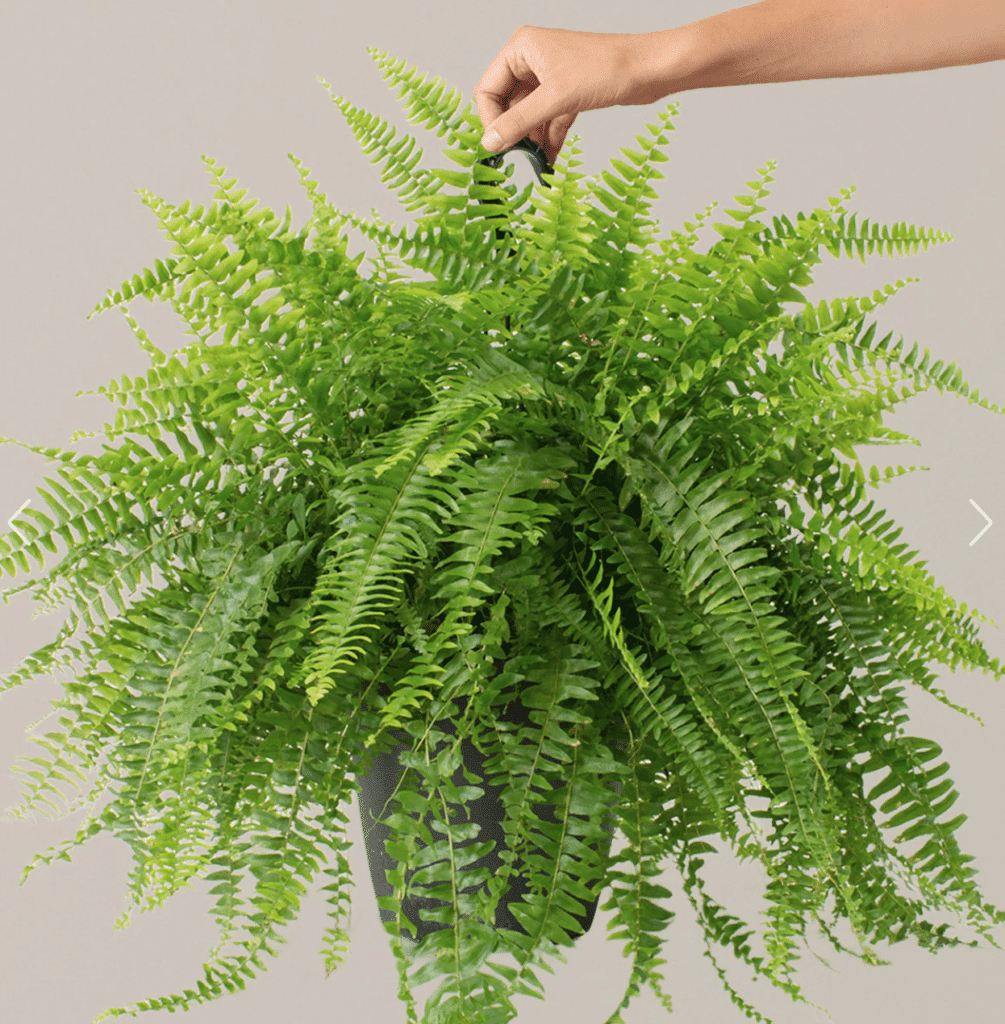
($50)
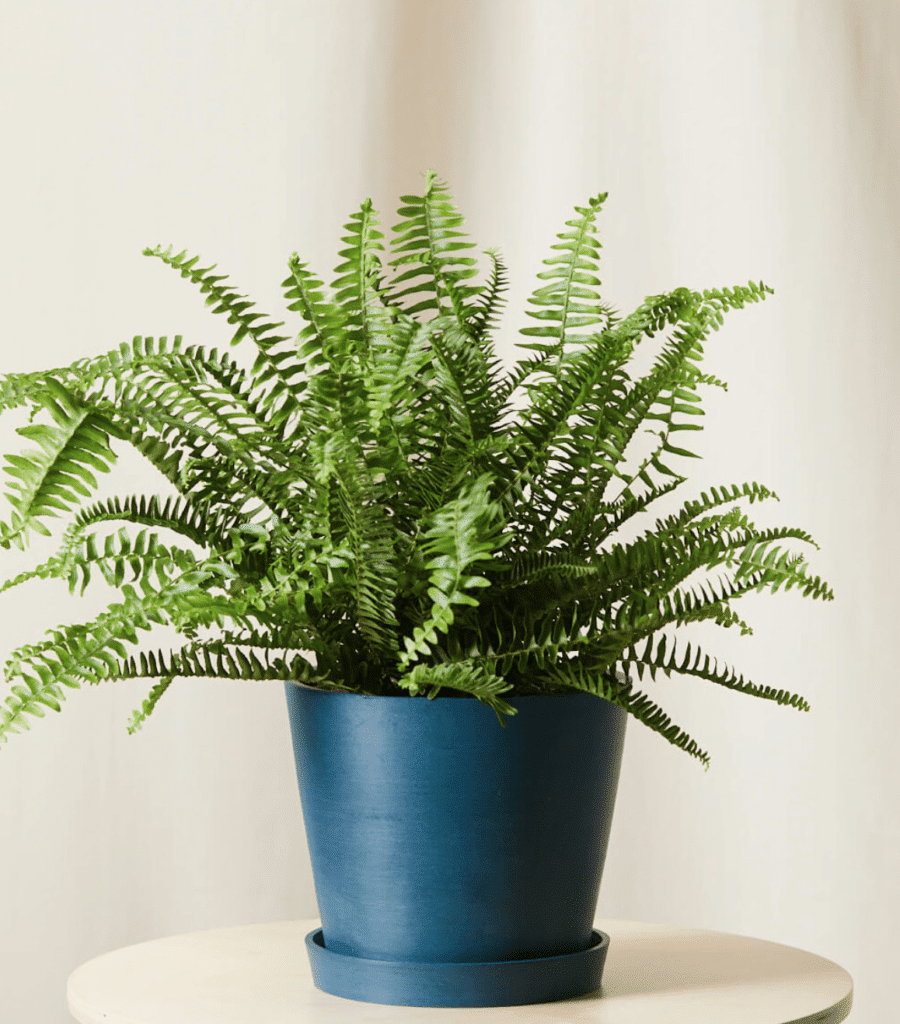
($31)
$24
“Beautiful, lush plant that adds a lot of greenery to my home. Needs regular watering”
10. Bamboo Palm

Safe
low/Medium light
Grows upto 12 feet
East/west facing windows
Safe
Low light
grows to 12 feet
East/west facing windows
The Bamboo Palm (aka Chamaedorea seifrizii): This easy care indoor plant, from the Arecaceae family, has graceful, arching fronds and feathery green leaves. Our living room at once feels tropical with this large plant in it! It is currently placed ours in the west-facing living room in second floor where pets are welcome to roam around. Bamboo Palms are also easy to care for. They don’t really have a notable fragrance, but they do occasionally produce small, yellow flowers. We have styled the Bamboo Palm in a tall, cream pot that complements its height. This one is a big plant – it can reach up to 12 feet tall – making it a stunning focal point.
Care tip:
- Water when the top inch of soil feels dry, usually every 1-2 weeks.
- Soil should drain well to prevent root rot. Yellowing leaves indicate overwatering.
Propagation tip:
- Remove a clump with 2-3 stems and roots.
- Plant it in well-draining soil mixed with (ideally) perlite.
- Keep the soil moist, and place it in bright, indirect light. Roots come in 4-6 weeks!
Symbolism and zodiac signs:
- Symbolizes good luck, prosperity, and resilience. Ideal for Capricorns who appreciate its hardworking and enduring nature
Pros and cons
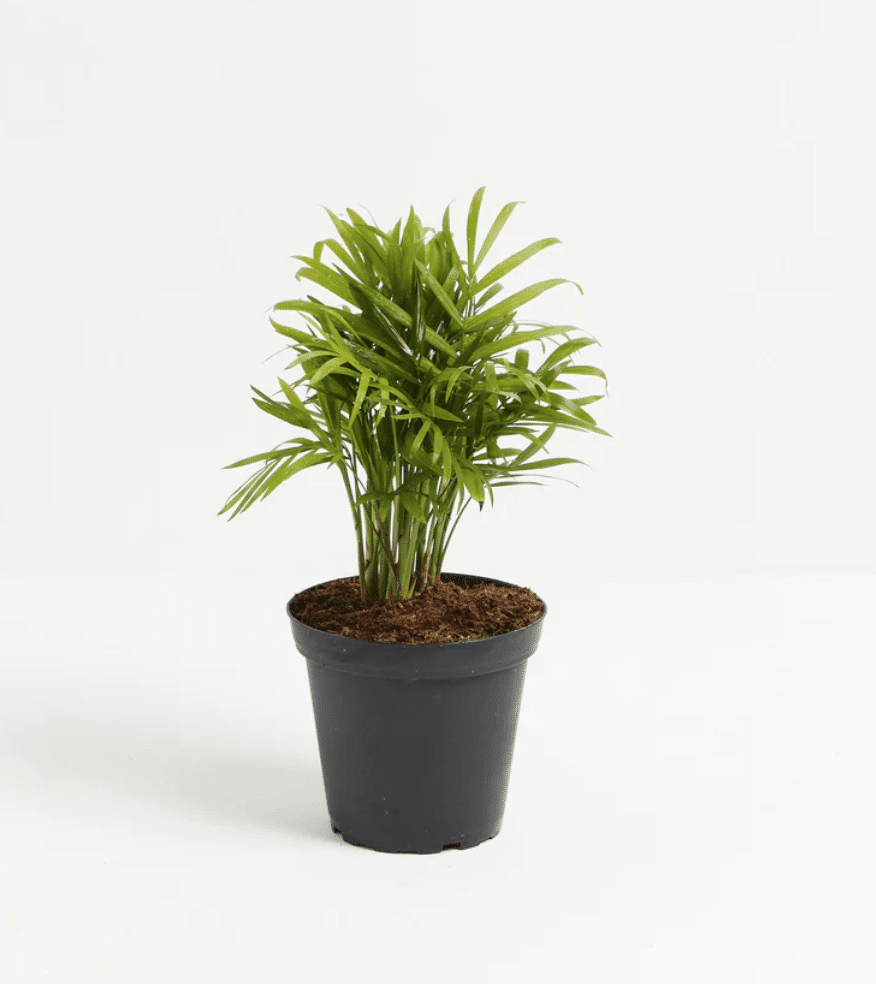
($43)
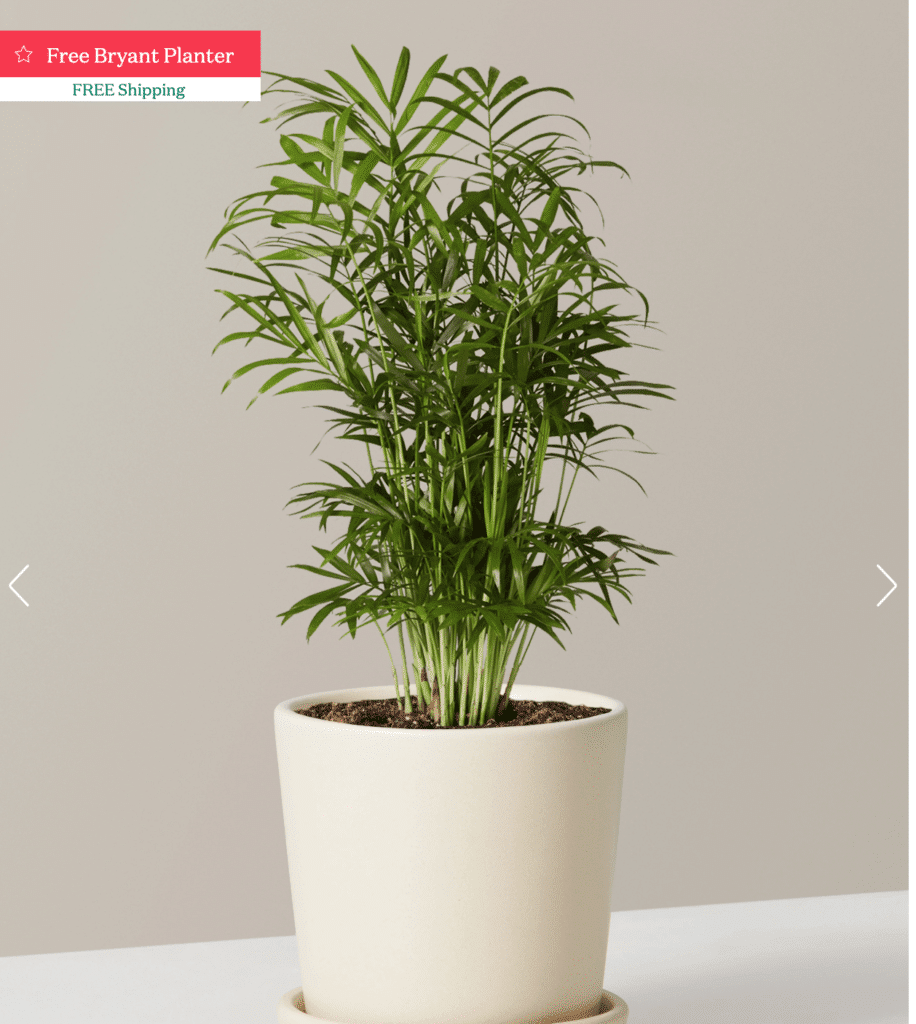
($38)

($35
$28
“This plant is a bit finicky but looks stunning when healthy. It’s definitely a statement piece”
11. Parlor Palm
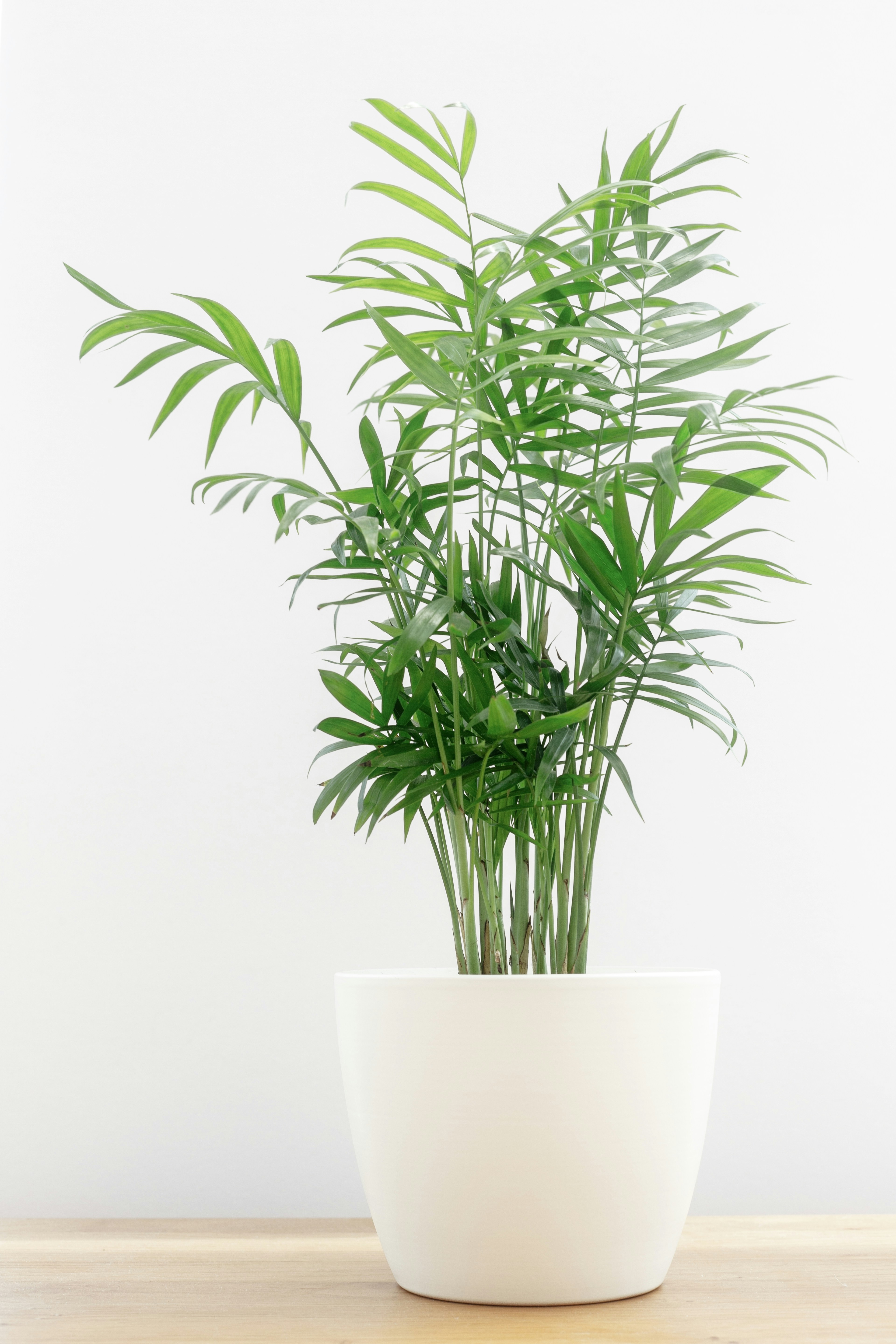
Safe
iow light
Grows upto 6 feet
East/west facing windows
Safe
Low light
grows to 6 feet
East/west facing windows
The Parlor Palm (aka Chamaedorea elegans) is a easy care houseplant from the Arecaceae family. It is a classic favorite for indoor plant enthusiasts, known for its lush, green fronds that arch from delicate stems. We have styled ours in a terracotta pot.
Its completely non-toxic to pets. It’s a low-maintenance plant, requiring only occasional watering, and as it grows, the Parlor Palm can reach up to 6 feet in height. While it doesn’t typically flower indoors, we have heard it might surprise you with small, inconspicuous flowers! It brings in a bit of tropics into our home.
Care tip:
- Water it moderately—allow the topsoil to dry out between waterings.
- It’s important to avoid overwatering to prevent root rot
- Keep an eye out for drooping or yellowing leaves which can indicate that the plant is either too dry or too wet
Propagation tip:
- Sow the seeds in a well-draining potting mix, barely covering them with soil.
- Keep the soil consistently moist and in a warm environment: germination can take several months.
Symbolism and zodiac signs:
- Symbolizes peace and tranquility, making it an excellent plant for creating a serene environment. Taurus, a zodiac sign known for its love of stability and natural beauty
Pros and cons

($43)

($38)
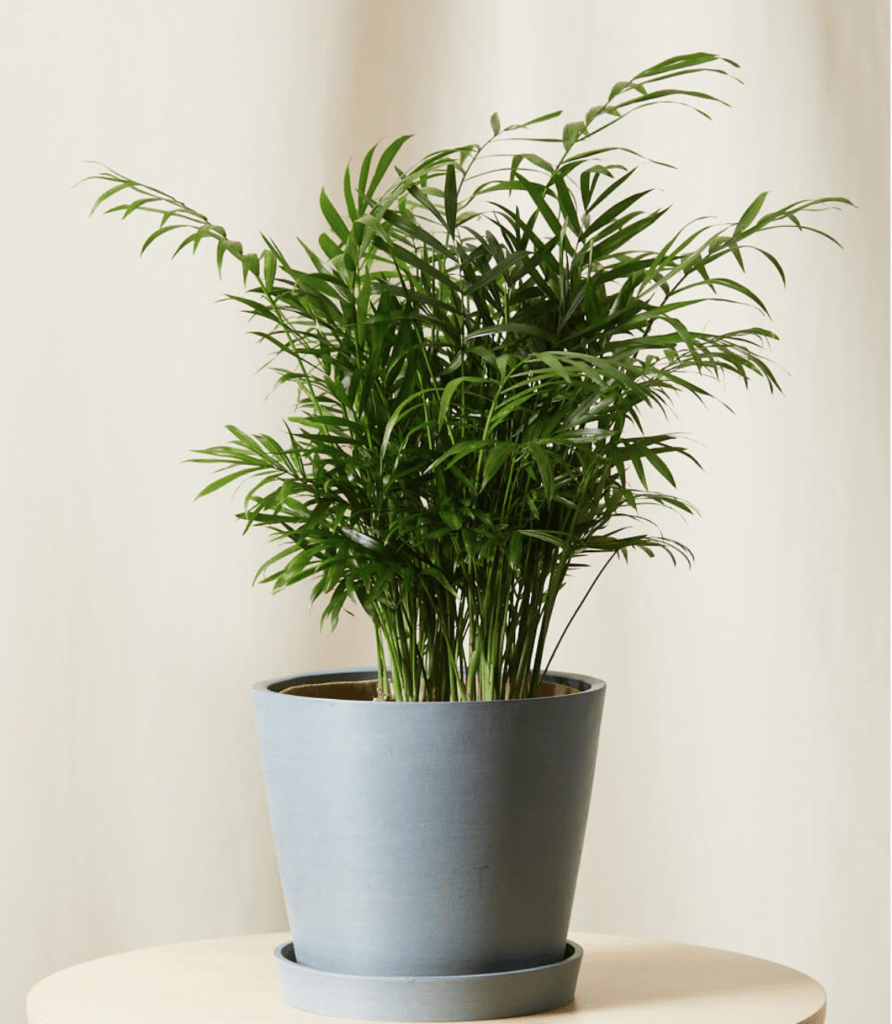
($35)
$28
“For over five years, this plant has been such a resilient and forgiving addition to my living room” – TheSill customer
12. Jade plant
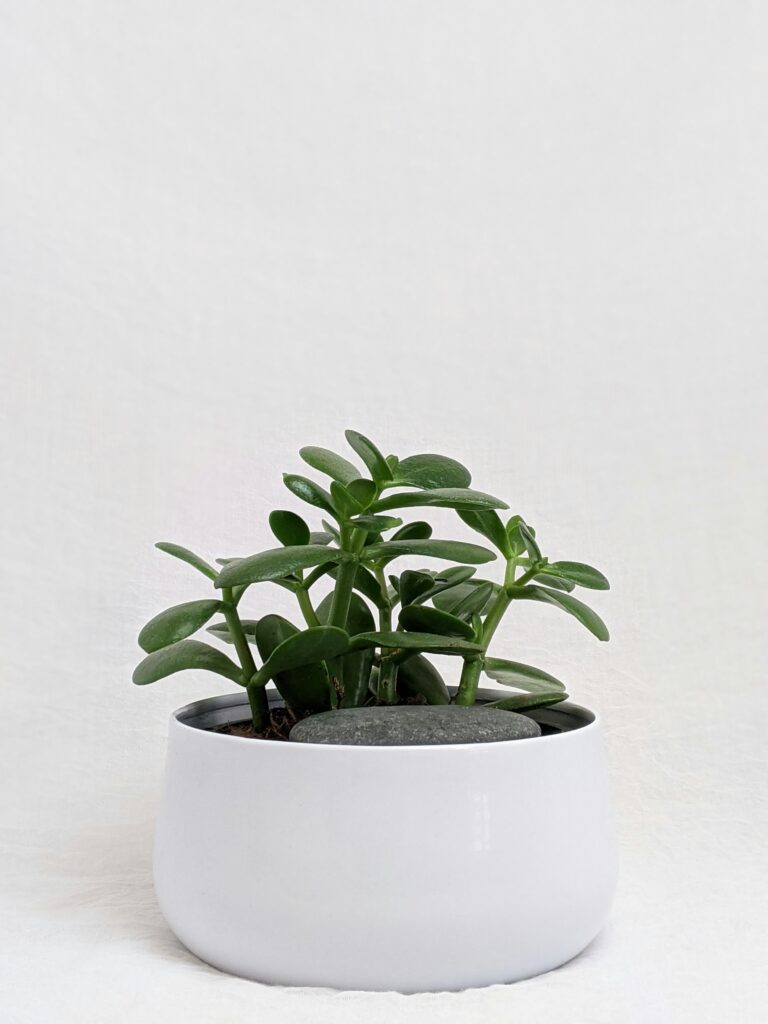
Safe
Medium light
Grows upto 3-4 feet
East/west facing windows
Safe
Medium light
grows to 3-4 feet
East/west facing windows
Jade plant is from the Crassulaceae family, is a delightful easy care indoor plant. Its thick, oval-shaped leaves are a vibrant green with a glossy finish. We’ve placed our jade plant in a ceramic planter on a sunny windowsill in our west-facing living room. Jade plants are low-maintenance, thriving on minimal watering—just a deep drink every few weeks when the soil dries out.
They aren’t toxic! With a slow growth rate, this plant can reach up to 3 feet tall and just as wide as well. Jade plants can surprise you with clusters of small, star-shaped white or pink flowers that bloom in the winter – yes you heard that right!
Care tip:
- Water it thoroughly once the soil is completely dry, about every 2-3 weeks.
- Look out for wrinkling leaves, which indicate it’s thirsty.
- Avoid overwatering to prevent root rot
Propagation tip:
- cut a 3-4 inch healthy stem, let it dry for a few days until the cut end calluses,
- then plant in a well-draining cactus mix; roots will develop in 2-3 weeks
Symbolism and zodiac signs: what does the plant symbolize and what zodiac sign are most apt to care for it. Make it accurate, cross referenced, and in one line.
Pros and cons
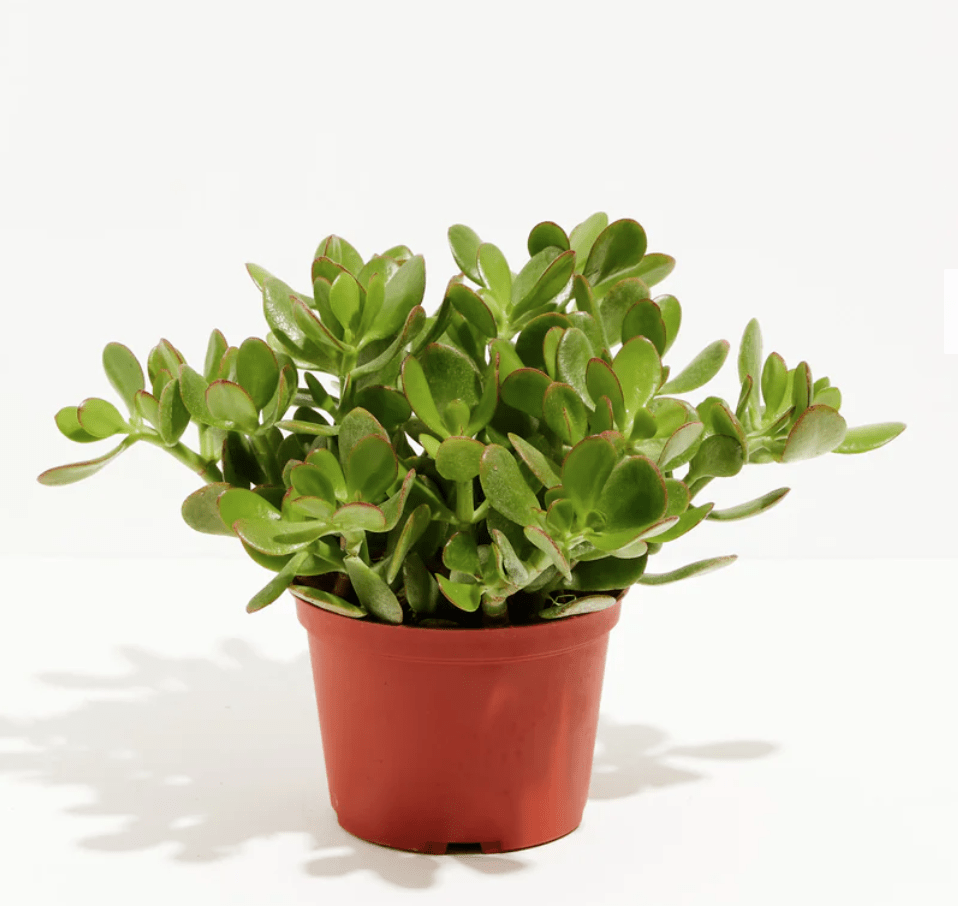
($58)
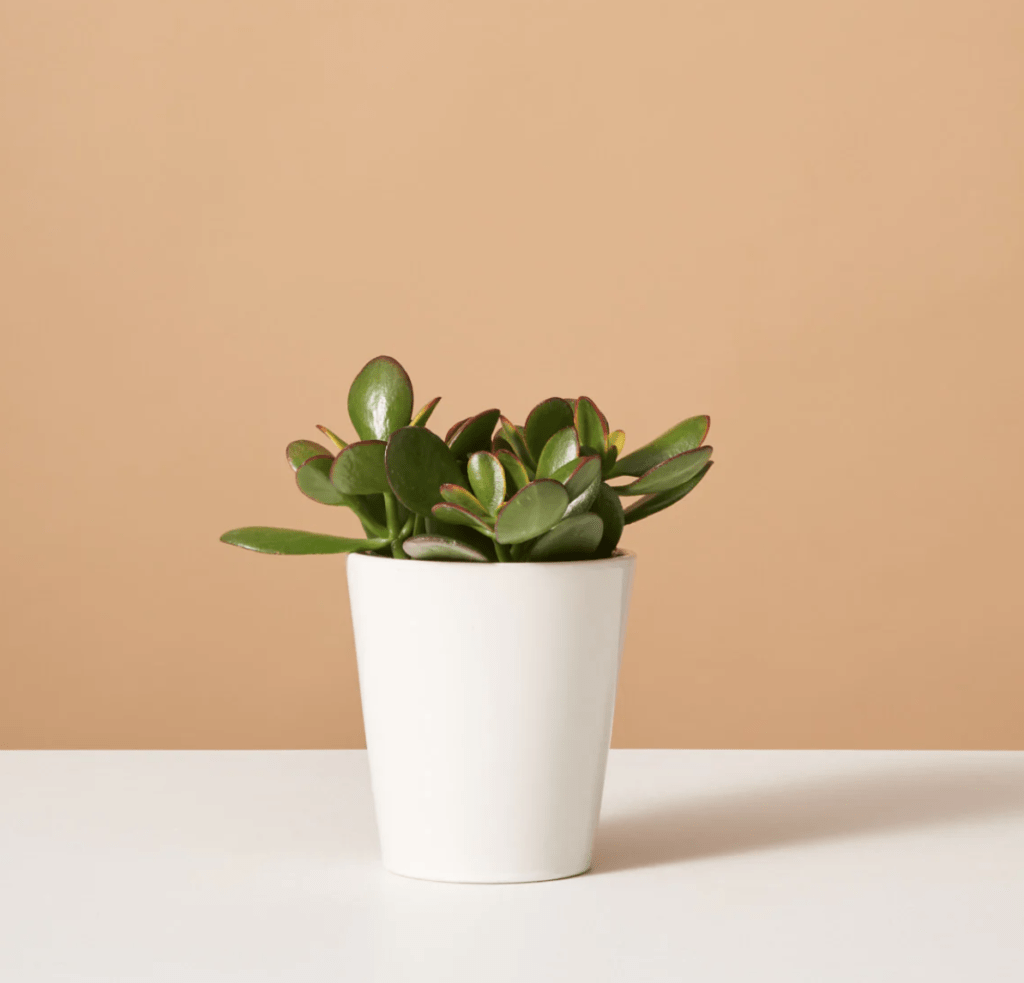
($58)
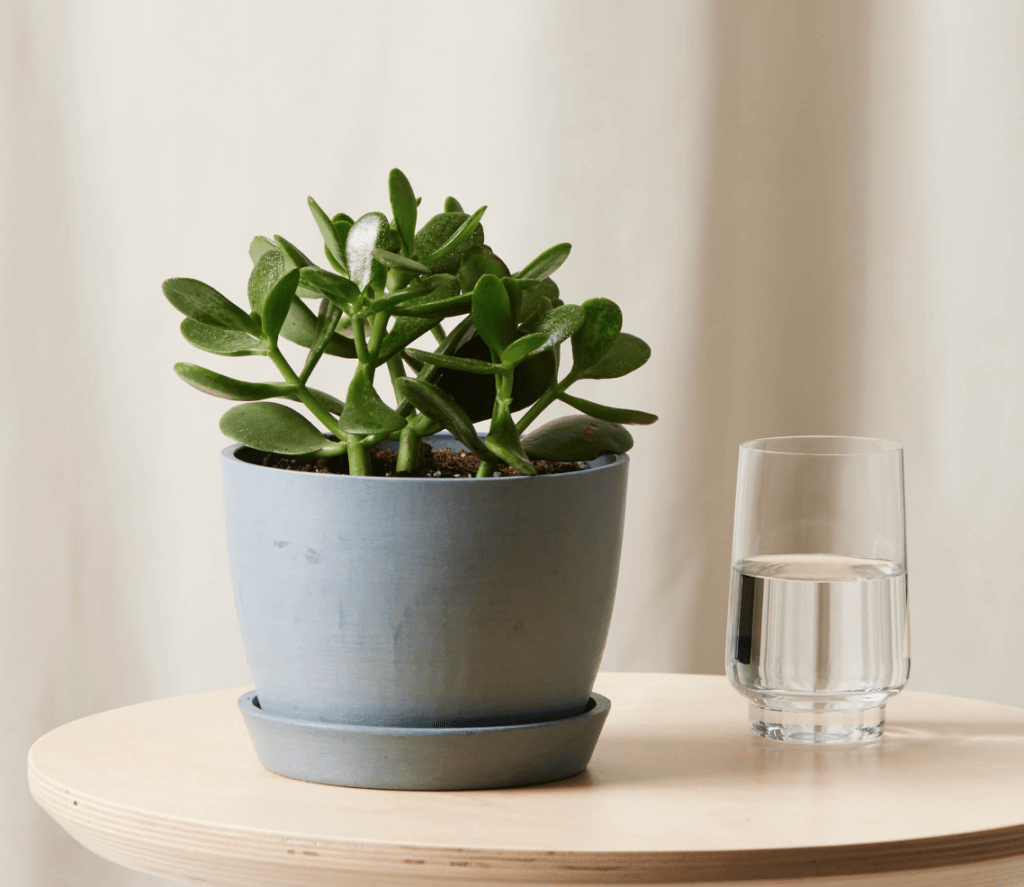
($35)
$10
“Jade plant flowers sometimes and it is just best surprise ever!
13. Money tree
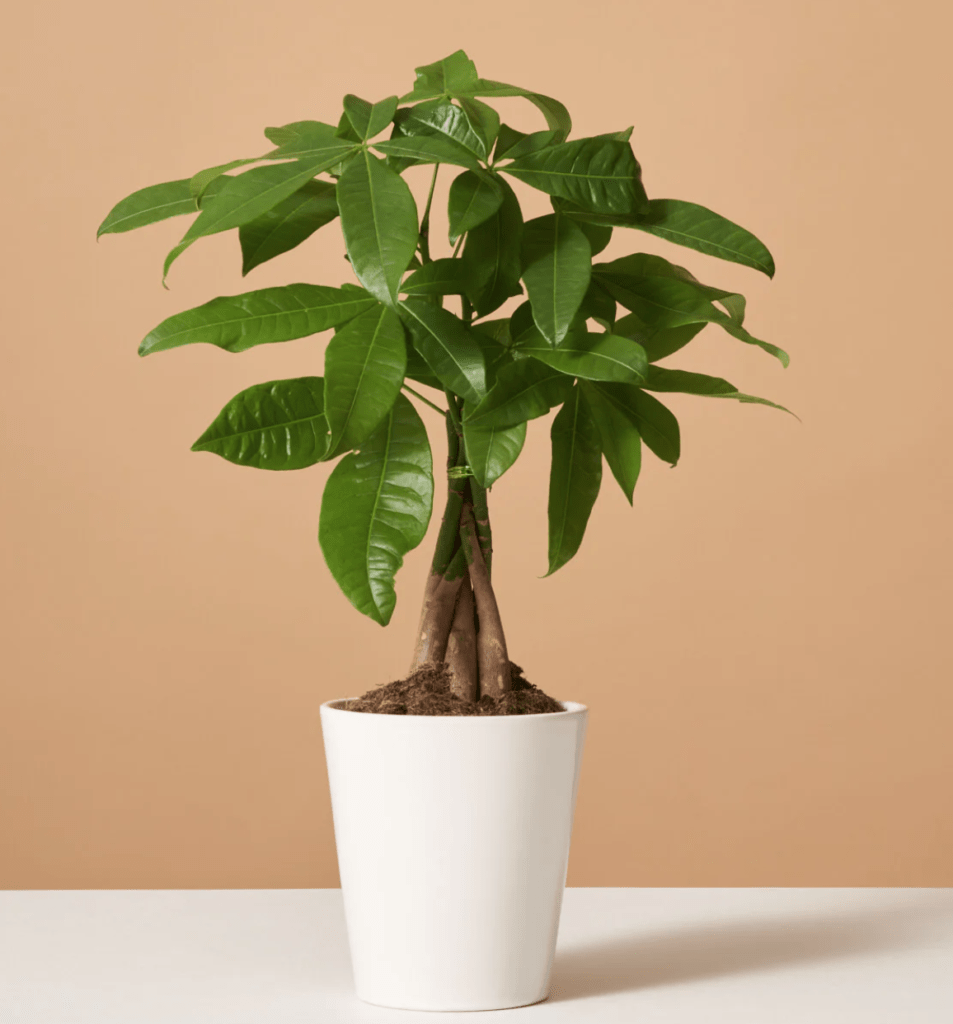
Safe
Low light
Grows upto 8 feet
East/west facing windows
Safe
Low light
grows to 8 feet
East/west facing windows
The Money Tree (aka Pachira aquatica) is one of the low light indoor trees from the Malvaceae family. Its distinctive braided trunk and lush, green leaves fanning out like a plume, adds a visual punch to any room. But is also famed for bringing good luck and prosperity.
We’ve placed ours in the west-facing room on the first floor where our cats roam free. This hardy plant is wonderfully easy to care for. It thrives with just moderate watering and can grow up to six to eight feet tall. We’ve chosen a sleek, golden planter that complements its vibrant green leaves – this one no doubt is a house favorite!
Care tip:
- Aim to water it every 1-2 weeks, allowing the soil to dry out slightly between waterings.
- Keep an eye out for yellowing leaves, which might indicate overwatering.
- A standout feature of this plant is its braided trunk that helps the tree store moisture, so occasional neglect in watering is often forgiven 🙂
Propagation tip:
- Select a healthy stem and cut a 6-inch piece just below a leaf node.
- Remove the leaves near the cut to prevent rotting.
- Place the stem in a glass of water, ensuring no leaves are submerged.
- Refresh the water weekly and keep the glass in a spot with indirect sunlight. Roots typically appear in about 4 weeks
Symbolism and zodiac signs:
- Symbolizes prosperity, good fortune, and financial success. Capricorns, known for their practicality, patience, and ambition, are particularly well-suited to nurture this plant.
Pros and cons
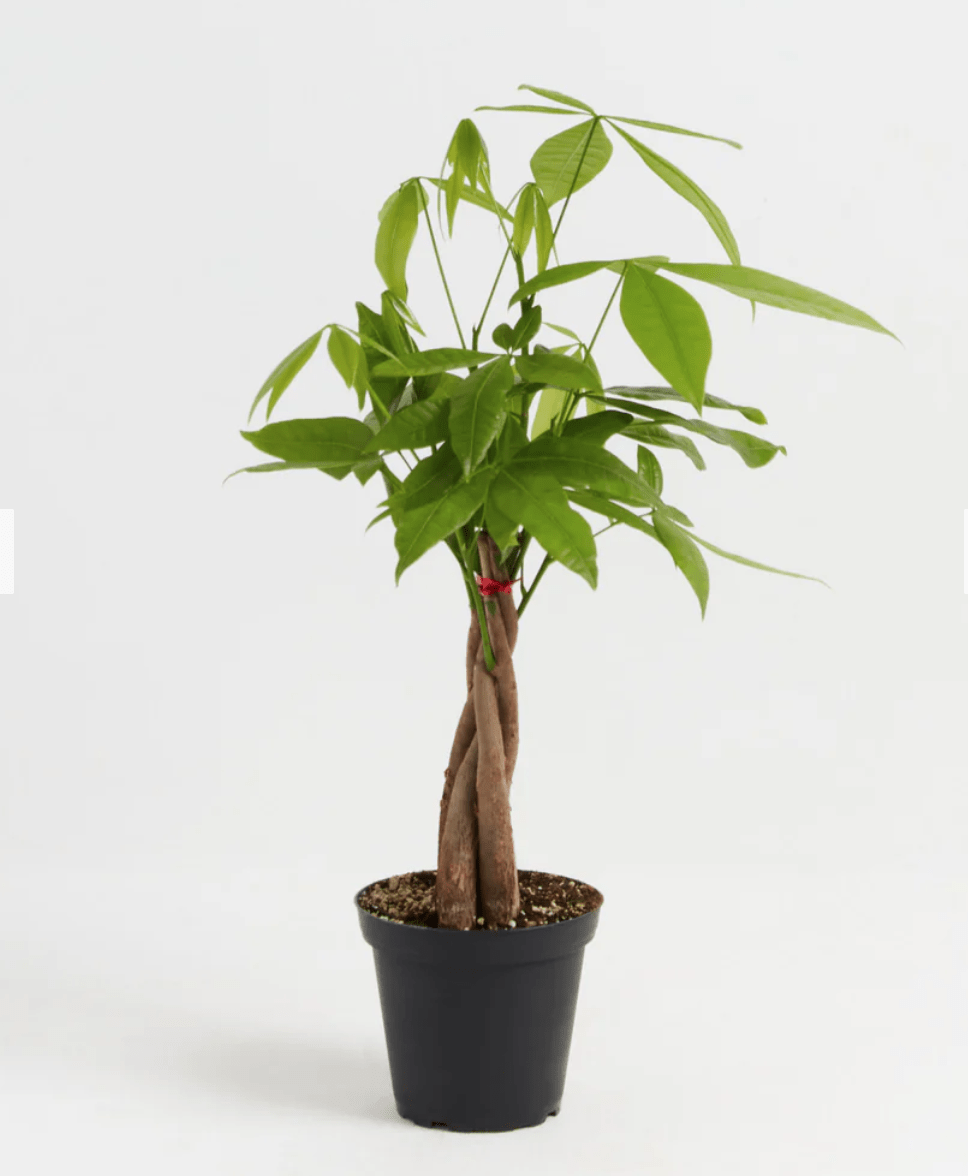
($43)
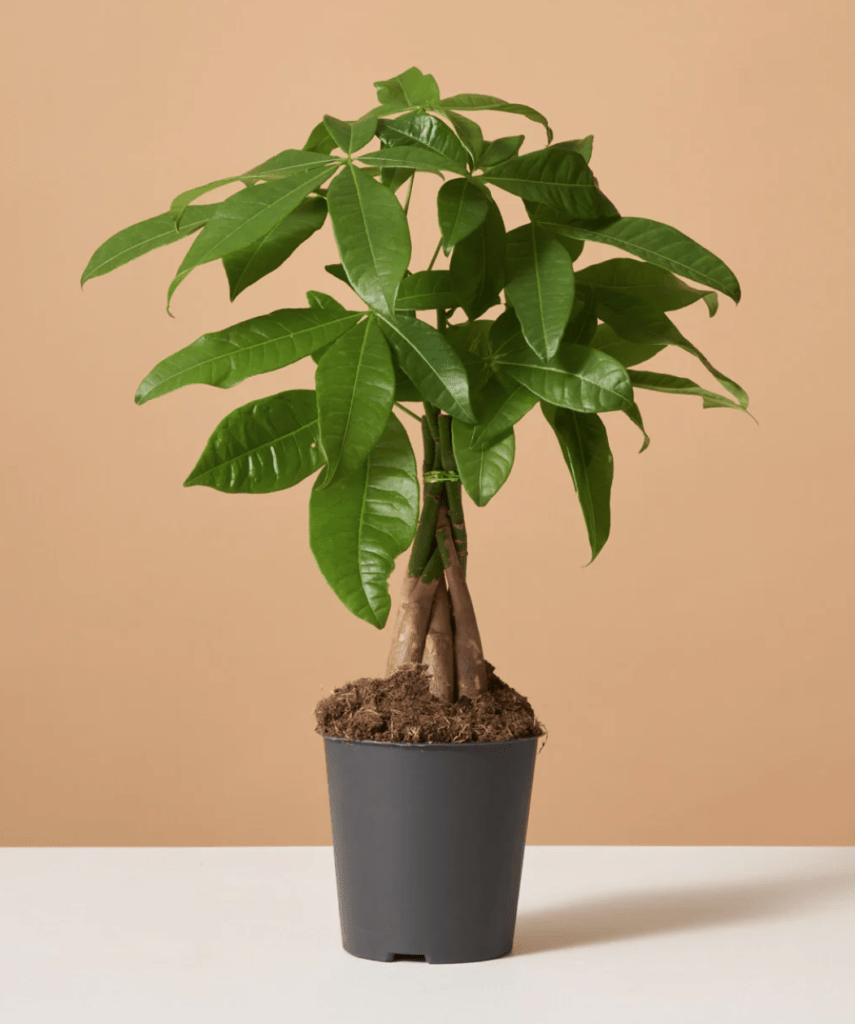
($48)
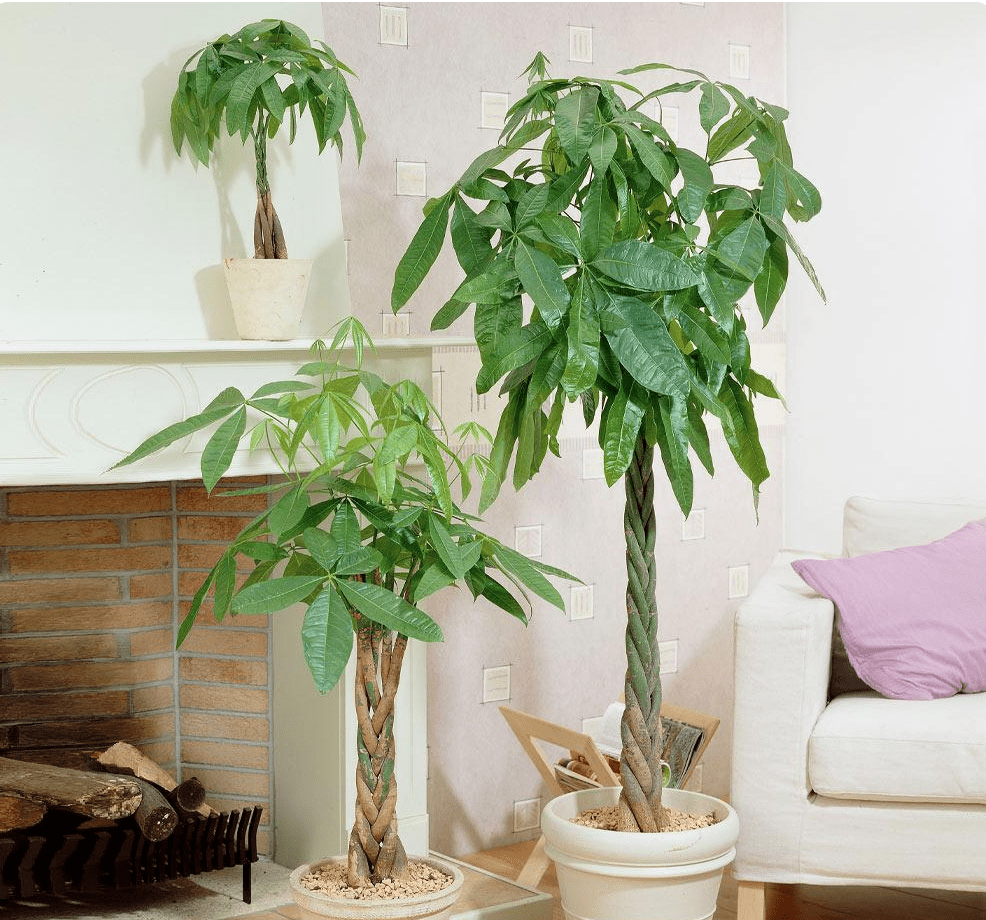
($39)
$33
“For over five years, this plant has been such a resilient and forgiving addition to my living room”
14. English Ivy
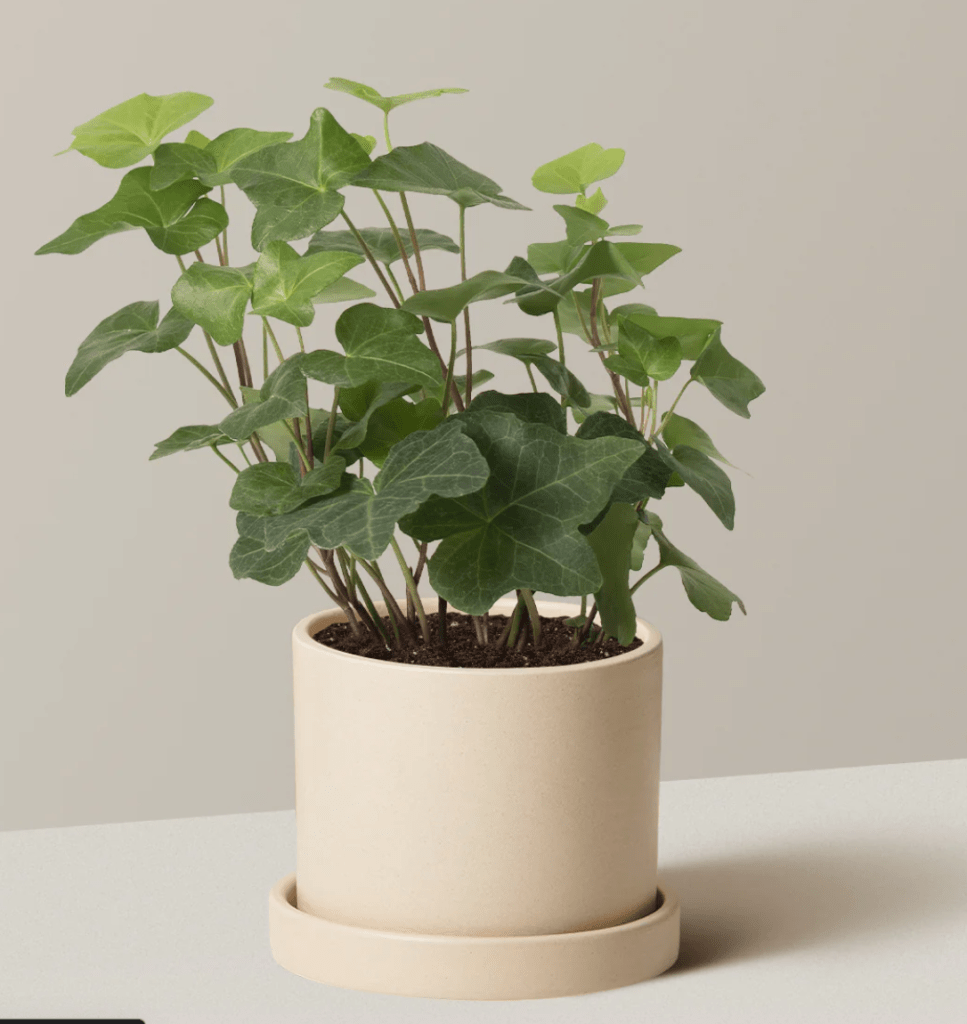
Toxic
Medium light
Grows upto 8 feet
East/west facing windows
Toxic
medium light
grows to 8 feet
East/west facing windows
The English Ivy (aka Hedera helix): This easy care indoor plant belongs to the Araliaceae family. It has charming lobed leaves and variegated patterns of green and white. It thrives in medium light so we have place it in our east-facing room on the top floor.
We’ve styled it cascading from a hanging planter, which drapes around a chair by the window under which one of our roommates loves to read! This one is easy to maintain — only needing moderate watering and occasional trimming. It’s toxic to pets, so keep it out of reach of curious cats and dogs. When mature, it can trail up to 8-10 feet long, creating a lush, indoor vine effect.
Care tip:
- Thrives in bright, indirect light — needs watering when the top inch of soil is dry.
- Mist regularly to maintain humidity and watch for yellow leaves which is a sign of overwatering.
- No direct sunlight for this one — its leaves scorch..
Propagation tip:
- Cut a 4-6 inch stem with at least three leaves, place it in water until roots are 1-2 inches long (about 4-6 weeks), then transplant into well-draining soil..
Symbolism and zodiac signs:
- English Ivy symbolizes fidelity and eternal life — well-suited for Capricorns for their dedication and perseverance
Pros and cons

($58)

($33)

($19)
$24
“Great plant for beginners. It’s hardy and does well in indirect light”
15. Rubber plant
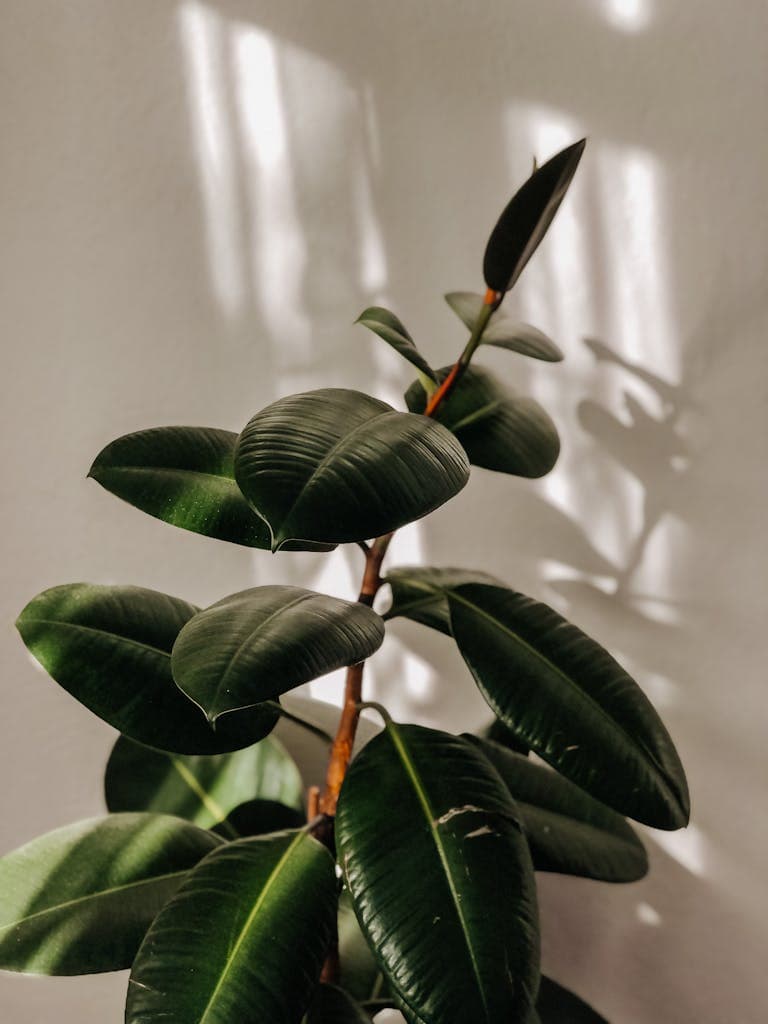
mildly Toxic
Medium light
Grows upto 10 feet
east/west/North facing windows
Toxic
Medium light
grows to 10 feet
East/west facing windows
The English Ivy (aka Hedera helix): This easy care indoor plant belongs to the Araliaceae family. It has charming lobed leaves and variegated patterns of green and white. It thrives in medium light so we have place it in our east-facing room on the top floor.
We’ve styled it cascading from a hanging planter, which drapes around a chair by the window under which one of our roommates loves to read! This one is easy to maintain — only needing moderate watering and occasional trimming. It’s toxic to pets, so keep it out of reach of curious cats and dogs. When mature, it can trail up to 8-10 feet long, creating a lush, indoor vine effect.
Read also: Burgundy rubber plant care
Care tip:
- The Rubber Plant thrives in low to medium indirect light.
- Needs watering when the top inch of soil is dry. Avoid direct sunlight to prevent leaf scorch.
- Mist occasionally to keep its bold foliage glossy!.
Propagation tip:
- Cut a 6-inch stem with at least two leaves, place it in water until roots are 1-2 inches long (about 4-6 weeks), then transplant into well-draining soil
Symbolism and zodiac signs:
- Symbolizes abundance and good fortune — perfect for Taurus, known for their patience and love for nurturing greenery
Pros and cons
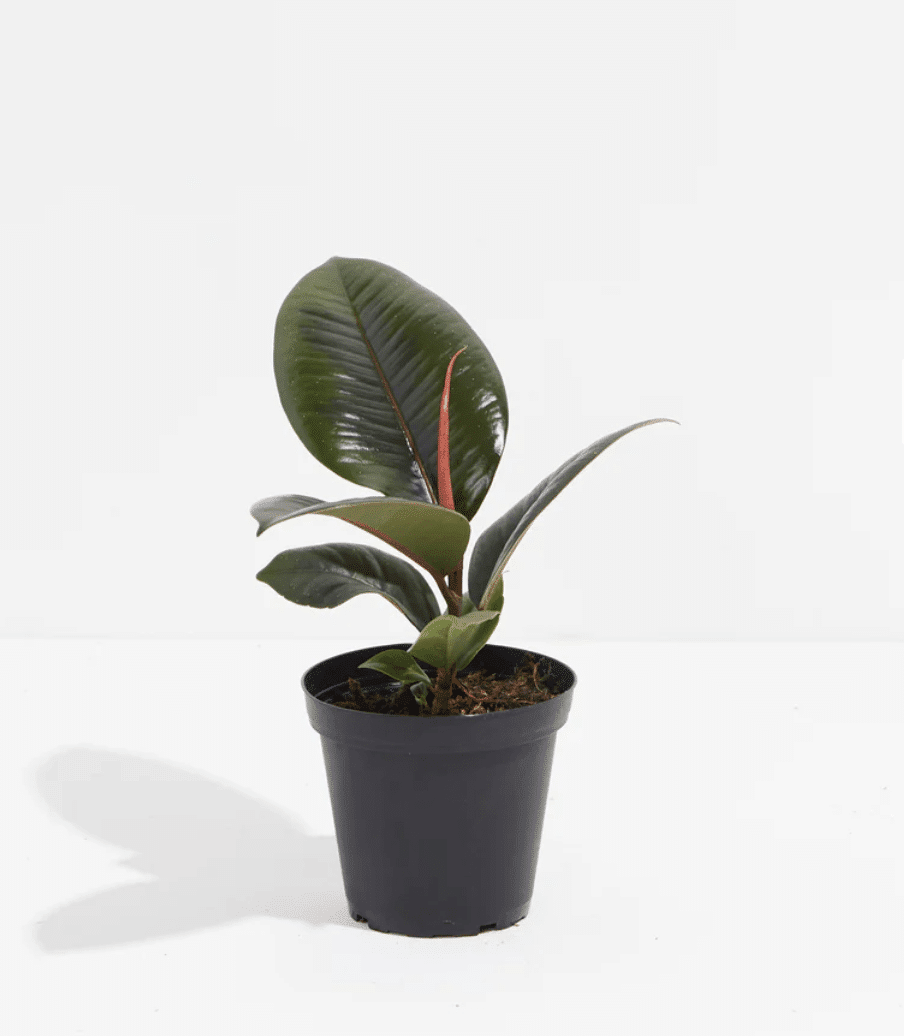
($43)
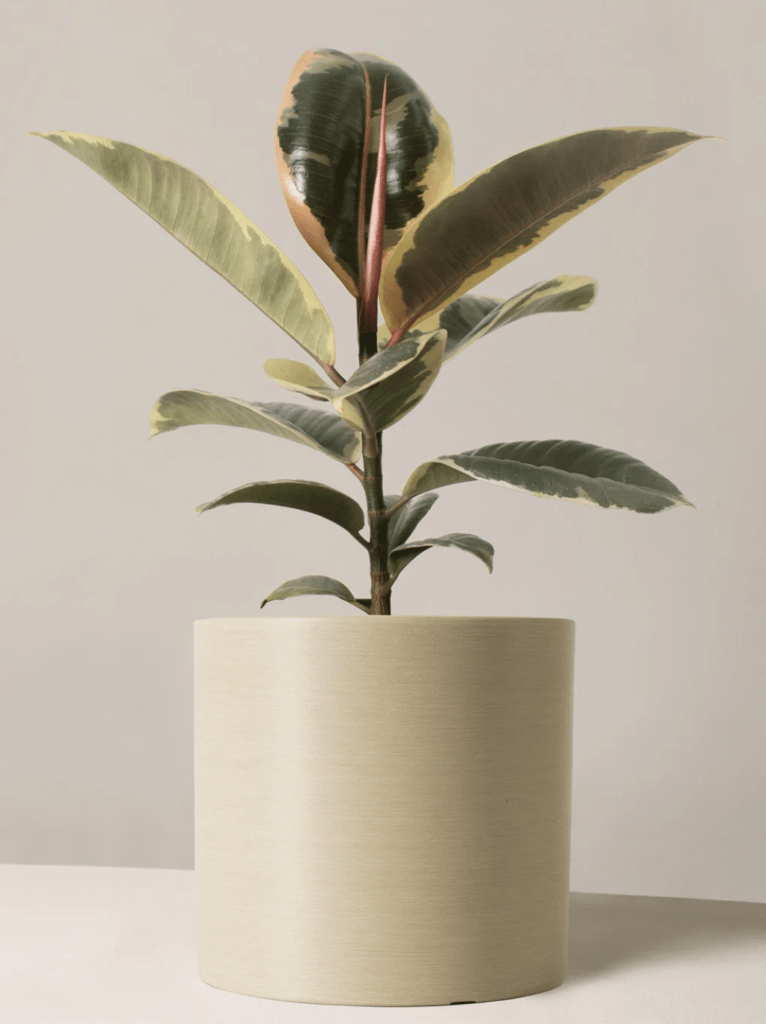
($48)

($19)
$43
“The Ficus is a statement piece in my living room. The variegated leaves are stunning and it’s very easy to care for”
16. Dracaena
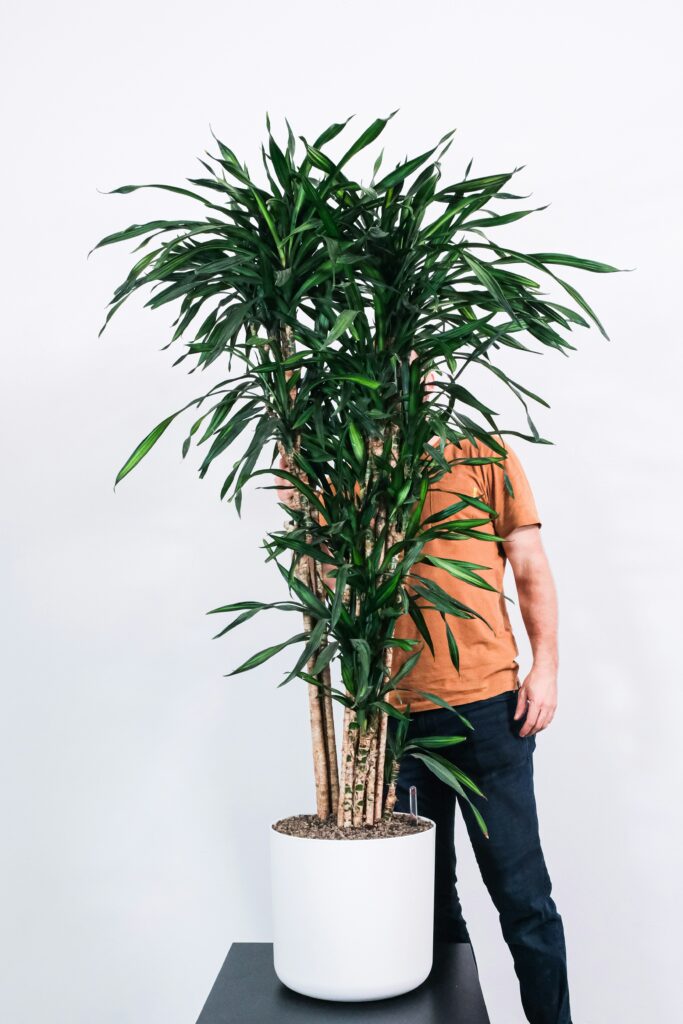
mildly Toxic
Medium/low light
Grows upto 10 feet
east/west windows
Mildly toxic
medium light
grows to 10 feet
East/west facing windows
The Dracaena (aka Dracaena spp.): This easy care indoor plant, a member of the Asparagaceae family, has sword-like leaves that come in various shades of green, and often accented with red or yellow edges. This plant brings a touch of the tropics to our home! We have placed it in the east-facing room in top floor, where it gets bright, indirect light.
Dracaena is easy to care for — needs moderate watering and low humidity. Just be cautious if you have pets, it is toxic to cats and dogs. When mature, Dracaena can reach up to 10 feet tall indoors. We’ve styled ours in a big, gray pot that complements and enhances its modern, dramatic aesthetic.
Care tip:
- Thrives in bright, indirect light — water when the top inch of soil is dry.
- Avoid direct sunlight to prevent leaf burn and watch for brown tips – a sign of overwatering or fluoride sensitivity.
- Prefers low humidity — not good for bathroom.
Propagation tip:
- Cut a 6-inch stem with a few leaves, place it in water until roots are 1-2 inches long (about 4-6 weeks), then transplant into well-draining soil.
Symbolism and zodiac signs:
- Dracaena is generally associated with resilience and adaptability — perfect for Capricorn!
Pros and cons
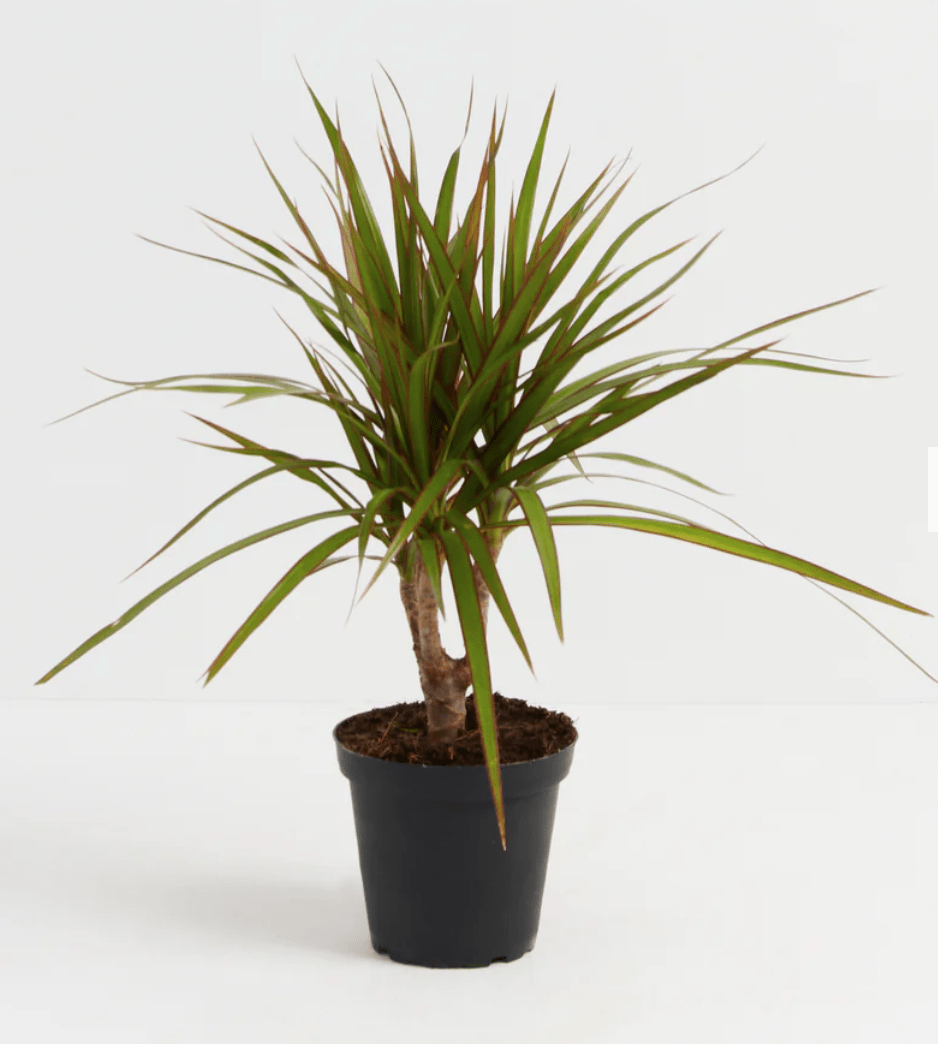
($43)
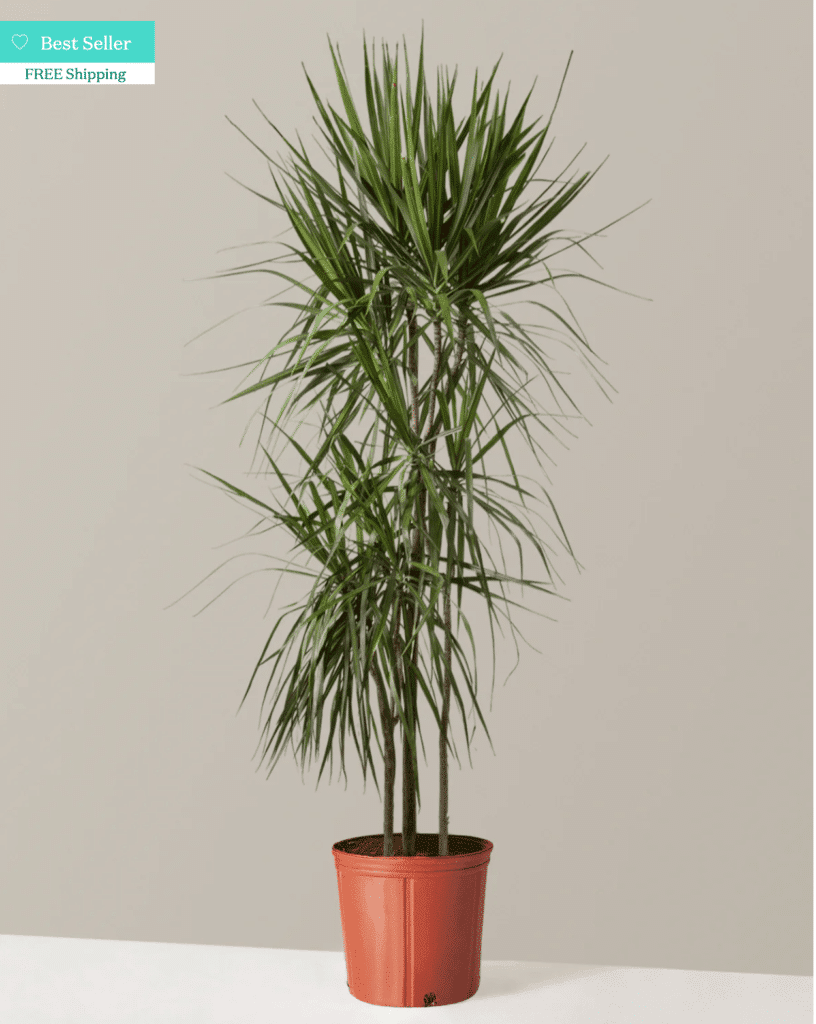
($140)

($35)
$43
“I love how the Dracaena Golden Heart brightens up my living room with all of its pointy foliage”
17. Calathea (peacock plant)

pet safe Toxic
Medium/low light
Grows upto 3 feet
east/north windows
Pet safe
medium light
grows to 3 feet
East/north facing windows
The Peacock Plant (aka Calathea makoyana) is from the Marantaceae family. This easy care indoor plant is a true eye-catcher. Each leaf looks like a piece of art, a blend of green, white, and purple patterns that resemble a peacock’s feathers. This plant thrives in low to medium, indirect light, making it perfect for our east-facing room where it enjoys gentle morning sunlight.
We have placed our Peacock Plant in a beautiful ceramic planter that highlights its vibrant leaves. It grows up to 2 feet tall, and though it’s safe for pets, it does require high humidity and consistent watering to keep its foliage looking its best. Keep an eye out for drooping leaves, which can indicate it’s thirsty or lacking humidity. This one is our house favorite, sometimes we inadvertently tend to overwater because each of us want this plant to thrive :p
REad also: Calathea purple and Calathea rufibarba care
Care tip:
- Water it when the top inch of soil feels dry, usually once a week, and maintain high humidity by misting regularly or using a humidifier.
- Watch for curling or browning leaf edges, which indicate it needs more humidity.
- Keep it in a warm spot away from drafts and AC and heaters please!
Propagation tip:
- Divide the root clump during repotting, ensuring each division has several leaves and roots.
- Plant the divisions in well-draining soil and keep them in indirect light with high humidity.
- New growth should appear within a few weeks. Water propagation is not recommended for this plant!
Symbolism and zodiac signs:
- Symbolizes renewal and creativity, making it a perfect match for Pisces, who are known for their artistic and nurturing nature.
Pros and cons
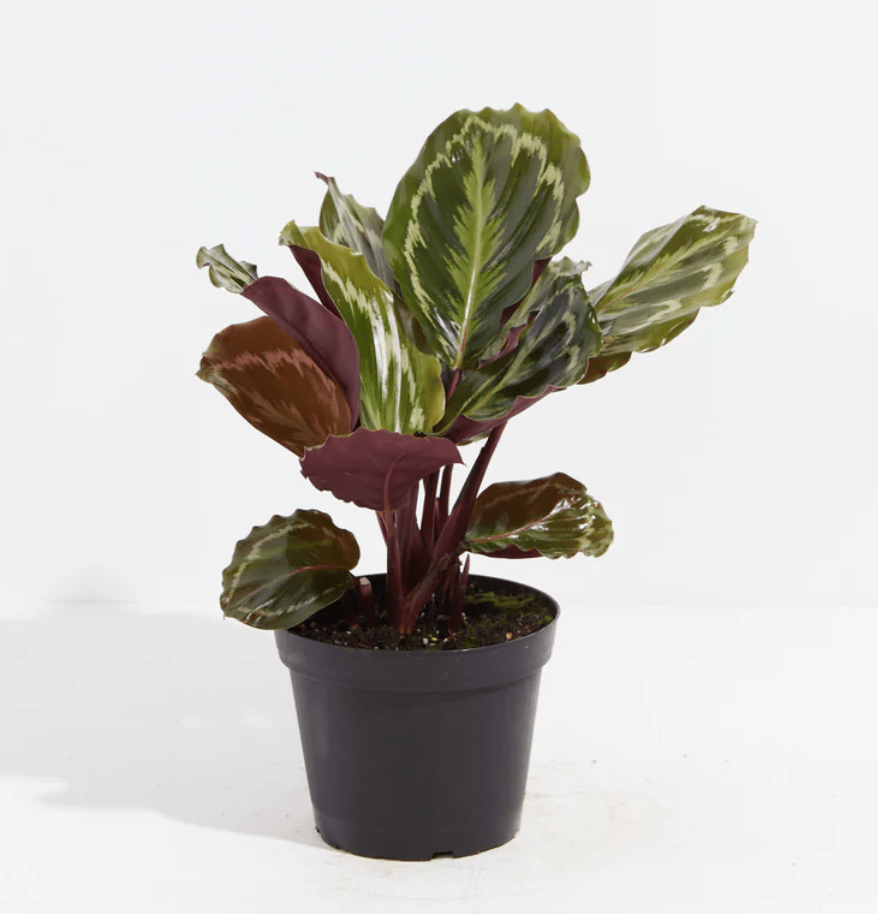
($58)

($48)
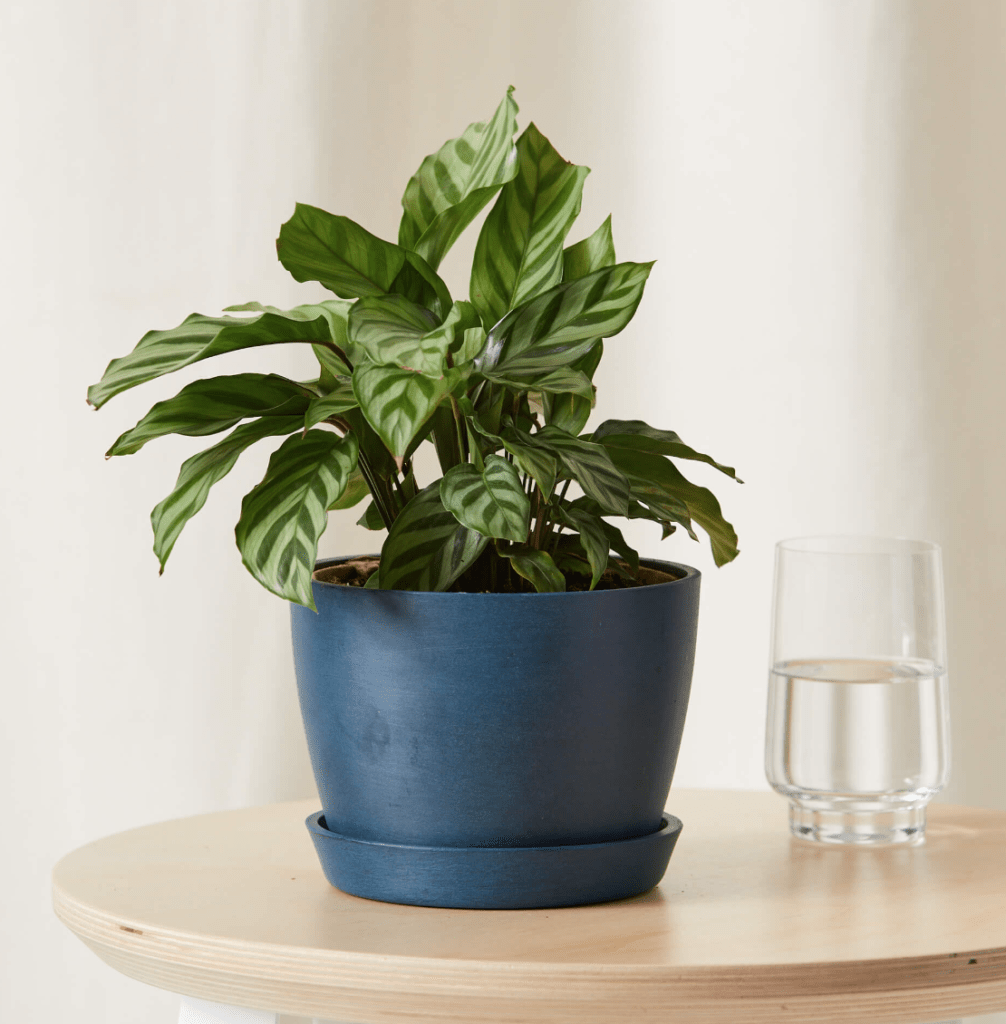
($32)
$36
“The Calathea is stunning with its vibrant patterns. It does require a bit more humidity but it’s worth it.”- Amazon customer
18. Fiddle leaf fig
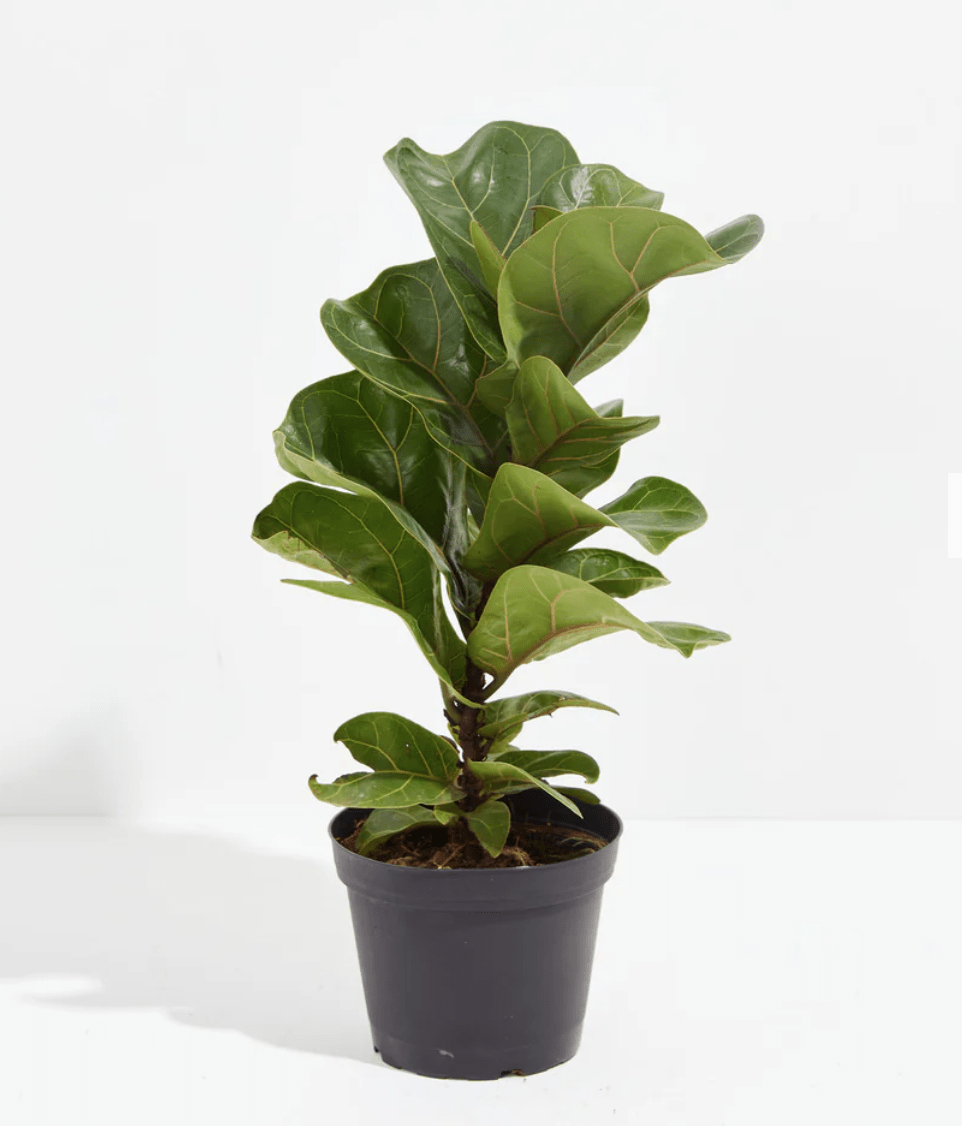
mildly Toxic
Medium/low light
Grows upto 10 feet
east/west windows
Mildly toxic
medium/ low light
grows to 10 feet
East/west facing windows
The Fiddle Leaf Fig (aka Ficus lyrata) belongs to the Moraceae family. This easy care indoor plant has charmed plant enthusiasts worldwide, and is one of the top 5 large floor plants bought online! Its lush, violin-shaped leaves create a bold and dramatic visual. The leaves boast a glossy texture and a deep, vibrant green hue that breathes life into any space.
We have placed ours in the east-facing room where it thrives in indirect light – be careful these plants are prone to leaf scorch is a lot of direct light is upon its leaves for a long time. These plants will grow upto 10 feet, making it a stunning natural add to fill the vertical space. In terms of maintenance, this plant lands on the manageable side of the spectrum. Regular watering and occasional fertilizing will keep it happy and healthy.
It’s worth noting that while it’s a stunner, the Fiddle Leaf Fig is toxic if ingested, so it’s best kept away from pets and children – although if your pets are not used to eating harder leaves, its still fine just make sure they don’t drop to the ground and your pets inadvertently munch on it. For styling, we’ve chosen a large cream ceramic planter that complements its grandeur. The simplicity of the ceramic allows the intricate leaf patterns to stand out. Whether it’s used to anchor a lonely corner or as a vibrant participant in a reading nook, the Fiddle Leaf Fig transforms the room
Care tip:
- Thrives in medium to bright, indirect sunlight—ideal for a spot near an east-facing window where it gets morning light. Can tolerate lower light.
- Water it when the top inch of soil feels dry, typically once a week, less often in winter.
- Drooping or browning leaves usually signal over- or under-watering.
- Rotate your plant every few months and definitely to prevent it from leaning towards the light.
Propagation tip:
- Select a healthy leaf with about 1 inch of stem, and make a clean cut just below a node (where leaves attach to the stem).
- Place the cutting in a glass of water, ensuring the node is submerged.
- Change the water weekly and keep the glass in bright, indirect light.
- Roots typically appear in 4-6 weeks, after which you can pot it in well-draining soil.
Symbolism and zodiac signs:
- Symbolizes growth and abundance. Well-suited for Taurus, known for their affinity for stability and aesthetic pleasures.
Pros and cons

($58)
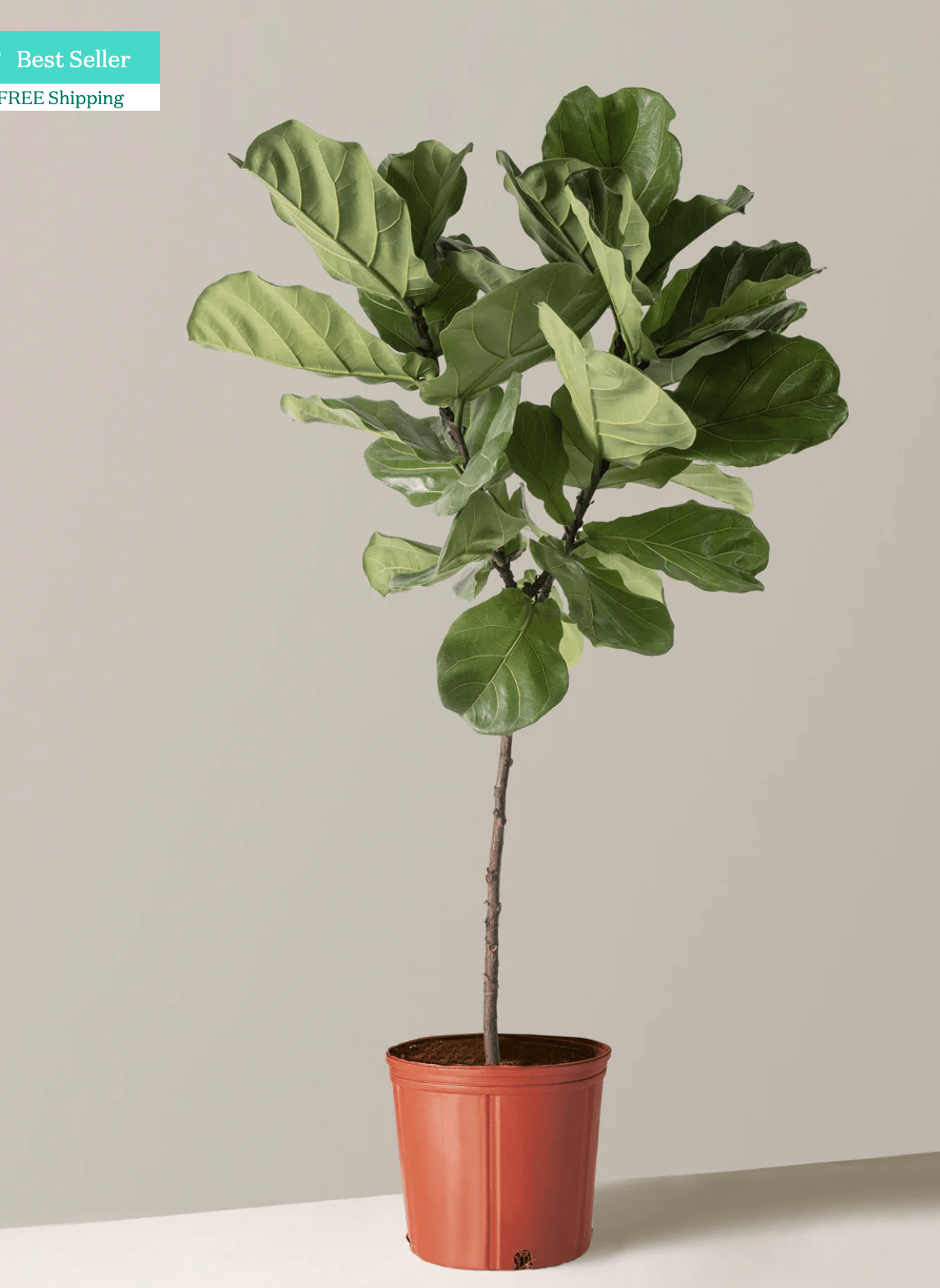
($98)
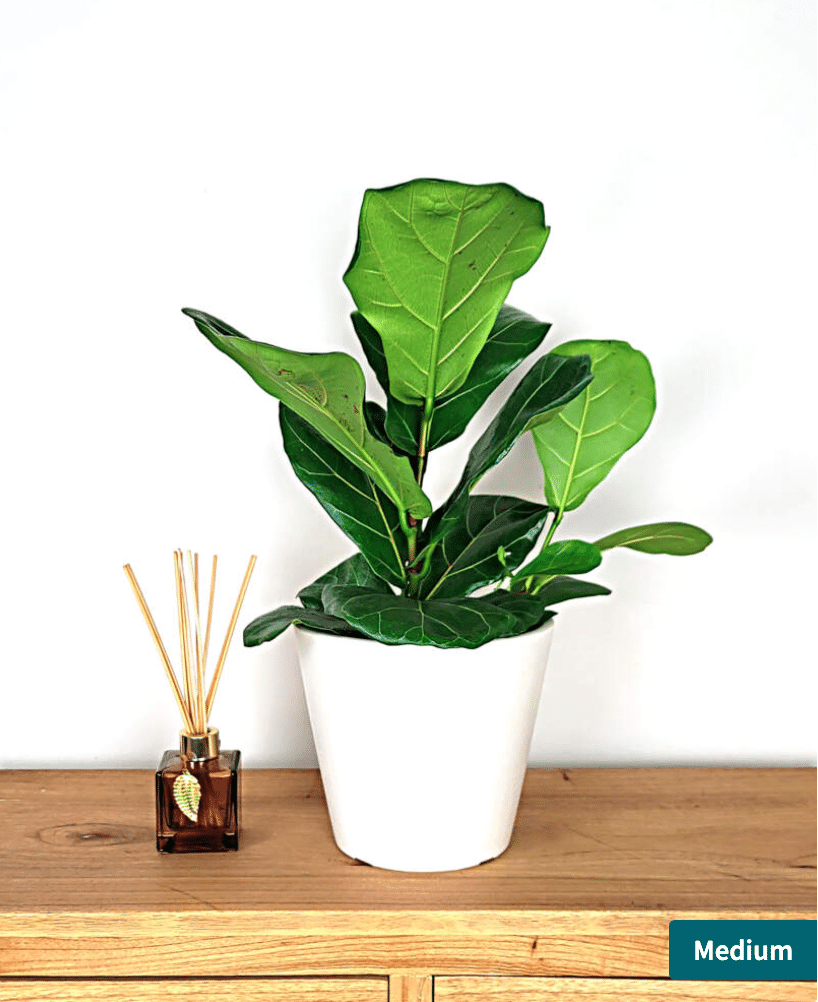
($36)
($31)
“It was tiny when i got it and it has now grown at least 5 feet taller in the past two years” – LivelyRoot customer
19. Cactus
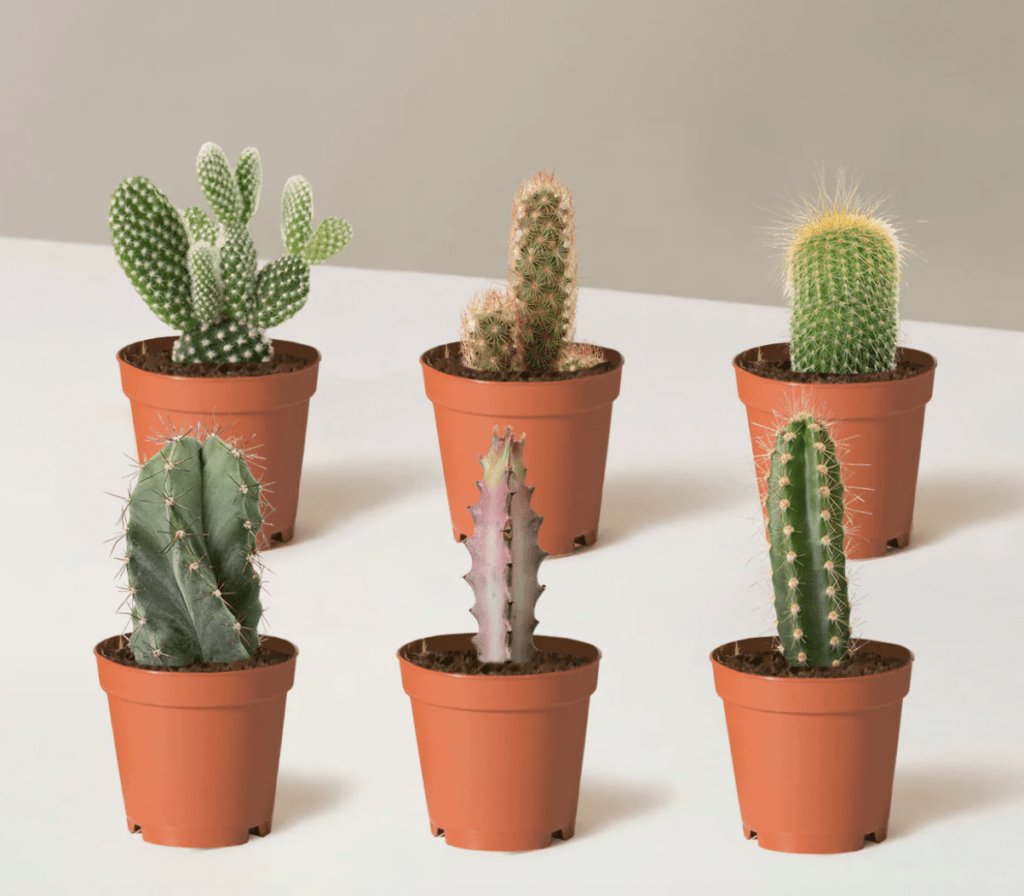
Pet safe
Medium/Bright light
Grows upto 3 feet
South/west windows
Pet safe
medium/bright light
grows to 3 feet
South/west facing windows
The Cactus Plant (aka Cactaceae), hailing from the Cactaceae family, is an easy care indoor plant that is a charming and practical addition to any home. We’ve nestled our little Golden Barrel Cactus (aka Echinocactus grusonii) in a terracotta pot in our south-facing living room. Its rounded, ribbed body with golden spines adds a striking, sculptural touch. This one’s light requirement is high. It’s pet-friendly too!
Our cactus blooms gorgeous yellow flowers that add a delightful pop of color, typically during spring. When mature, it can grow up to 3 feet tall and 2 feet wide!
Care tip:
- Place it in a spot with plenty of direct sunlight, ideally a south-facing window.
- Water sparingly—once every three to four weeks during the growing season and even less in winter.
- Watch for firm, plump stems as a sign of health. Wrinkling indicates it’s time to water
Propagation tip:
- Cut an offset (about 1-2 inches in diameter) from the base, let it dry for a few days until the cut end calluses, then plant it in a sandy cactus soil mix.
- It takes about 2-3 weeks for roots to develop
Symbolism and zodiac signs:
- Symbolizes endurance and protection, making it perfect for practical and resilient Taurus individuals
Pros and cons
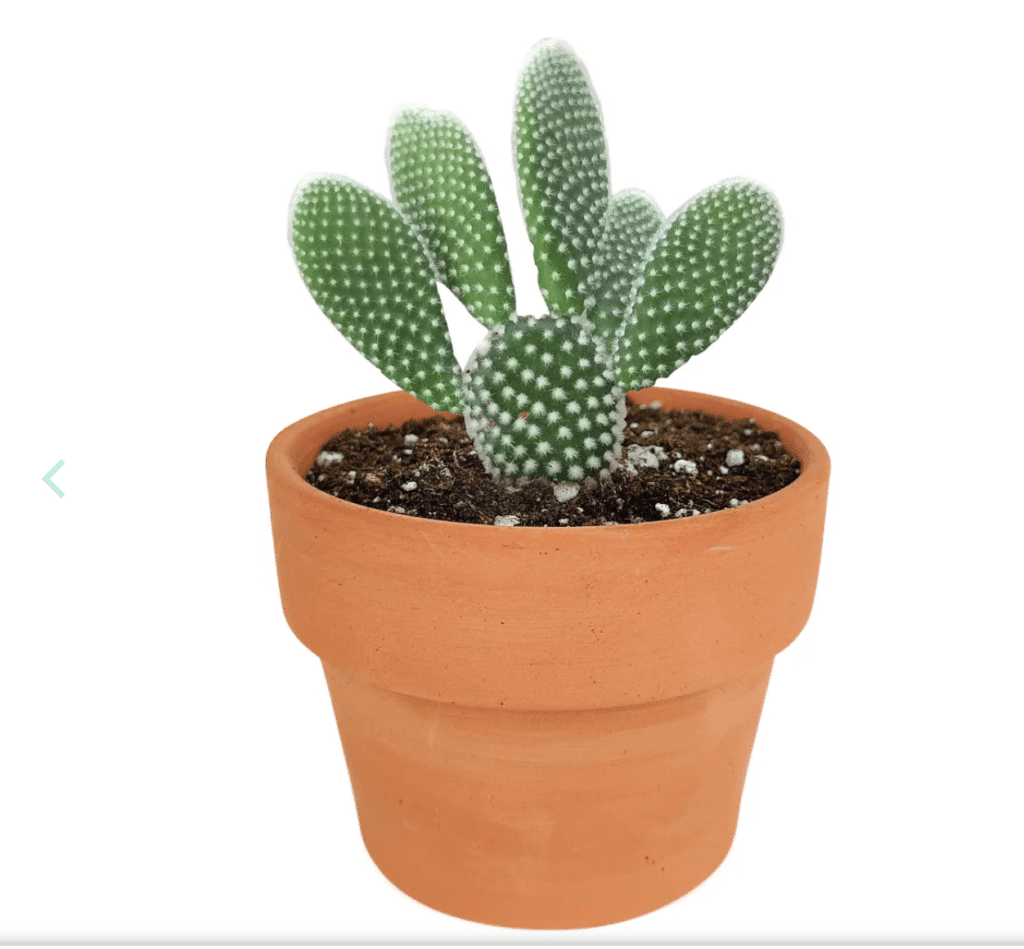
($18)

($48)
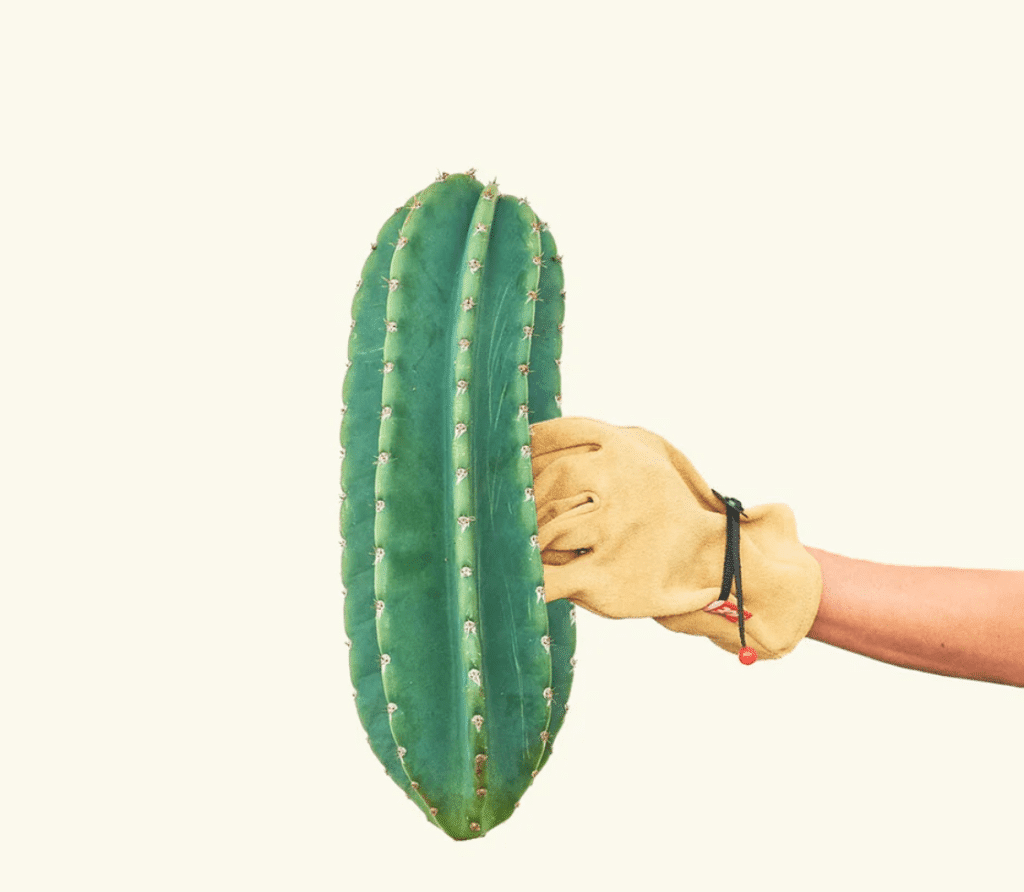
($37)
$16
“The Calathea is stunning with its vibrant patterns. It does require a bit more humidity but it’s worth it.”
Other low maintenance indoor plants
24. Birds Nest Fern

Pet Safety: Non-Toxic
Size: 2.0 ft
Window: East / West
Care tip: Water around the center, not into it—avoiding the rosette when watering prevents crown rot in this fern.
25.Pink Princess Philodendron

Pet Safety: Toxic
Size: 4 ft
Window: East / West (Bright/Medium light)
Care tip: Give it plenty of indirect light to keep those pink patches vibrant – if new leaves come in mostly green, it may need a brighter spot (but no harsh direct sun, which can scorch the variegation). This climber loves to vine, so provide a moss pole or stake; you’ll get larger leaves and more pink if it can climb. Water when the top inch of soil is dry (it doesn’t like soggy feet).
26. Monstera Thai Constellation

Pet Safety: Toxic
Size: 8 ft
Window: East / South (Bright light)
Care tip: Loves light – just avoid intense midday sun on its leaves (the pale marbling can burn). Let it climb a moss pole for support; a supported Monstera will reward you with bigger, hole-filled leaves. Prefers higher humidity, so consider a pebble tray or occasional misting. Water when the top 2 inches of soil are dry; it dislikes overwatering (watch for drooping or yellowing leaves as signs of too much water).
27. Black ZZ plant

Pet Safety: Toxic
Size: 3
Window: East / North (Low light)
Care tip: The ultimate low-maintenance plant – it actually prefers you forget to water it now and then. Let the soil fully dry out between waterings; its thick rhizomes store water, so overwatering is the only way to really upset it. New growth emerges bright green and then slowly deepens to near-black, so don’t be alarmed if young leaves are a different color – that’s part of its charm!
28. String of pearls

Pet Safety: Toxic
Size: 2 ft
Window: East / south (Bright indirect light)
Care tip: This delicate succulent stores water in its “pearls,” so be careful not to overwater. Wait until the beads just start to wrinkle slightly before giving it a drink – that’s its way of saying it’s thirsty. Give it plenty of bright light (a sunny window is great), and trim the strands if they get too long or sparse (it will encourage fuller new growth). Handle gently; the little pearls can fall off if bumped (you can poke fallen ones back into soil to propagate new plants!).
29. Lady Palm

Pet Safety: Safe
Size: 6 ft
Window: East / North
Care tip: xtremely adaptable to low light and indoor air—an easy, pet-safe palm that tolerates dry air and shady corners with ease.
30 Pineapple plant
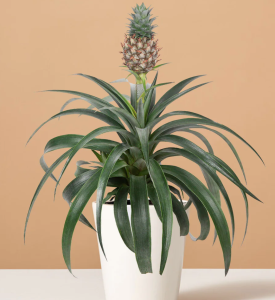
Pet Safety: Safe
Size: 4 ft
Window: East / South (Bright light)
Care tip: This bromeliad loves sun – give it the brightest spot you have so it can potentially produce its little pineapple fruit. If your humidity is low, you can pour a bit of water into its leaf cup (center “tank”) – just refresh that water every week or so to prevent stagnation. After fruiting, the mother plant will slowly die back, but don’t worry — it usually produces baby pups around its base that you can pot up for a brand new pineapple plant.
31. Burros Tail
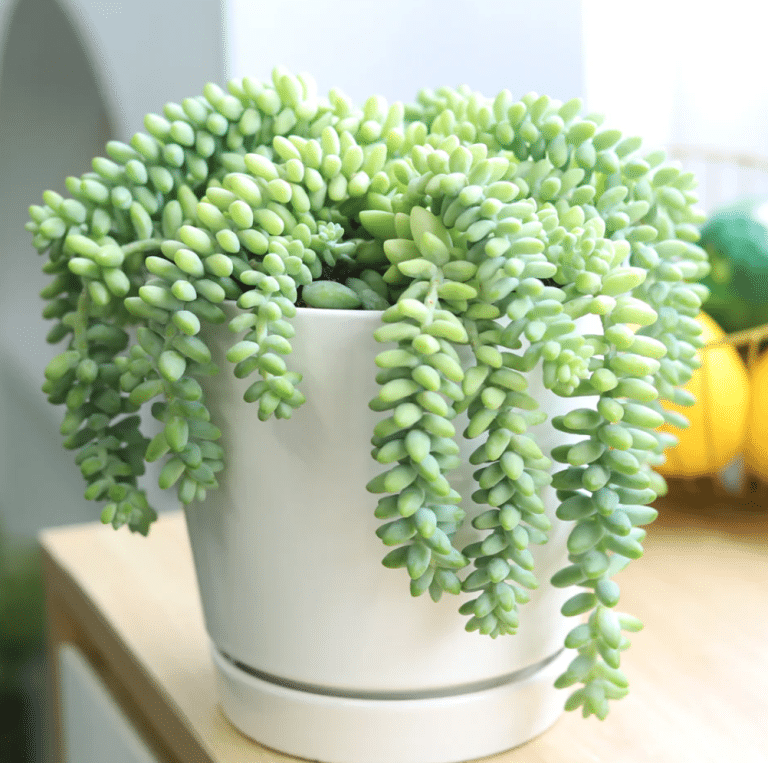
Pet Safety: Safe
Size: 2 ft
Window: East / South (Bright light)
Care tip: Handle this plant with care – its plump little leaves fall off at the lightest touch! (Tip: if some do drop, lay them on top of soil – many will sprout new babies). It craves sunshine, so give it a bright spot. Water sparingly. Overwatering will cause those fat leaves to rot or drop. If stems start looking bare or stretched, it may be craving more light
32. Chinese Money Plant
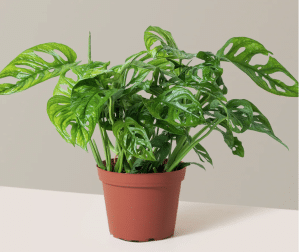
Pet Safety: Toxic
Size: 1 ft
Window: East / West (Medium light)
Care tip: Those pancake-shaped leaves will all lean towards the light – give the pot a quarter turn every week so it grows nice and balanced (otherwise it may become one-sided). Water about once a week or when the top inch of soil is dry — it doesn’t like to stay soggy (yellow, droopy leaves can indicate overwatering). Often produces little “pup” plants at its base – you can leave them for a fuller pot or pluck and pot them separately to share with friends!
33. African Violet
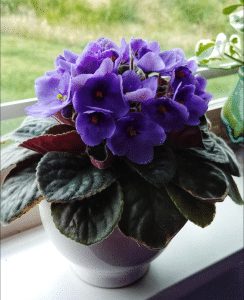
Pet Safety: Safe
Size: 2 ft
Window: East / West
Care tip: Avoid splashing water on its fuzzy leaves—bottom-watering or watering with room-temperature water keeps those leaves spot-free.
34. Chinese Evergreen

Pet Safety: Toxic
Size: 1 ft
Window: East / North
Care tip: Low-light superstar—this plant stays vibrant even in dim areas. Keep it out of direct sun to avoid scorching its colorful leaves.
35. Croton
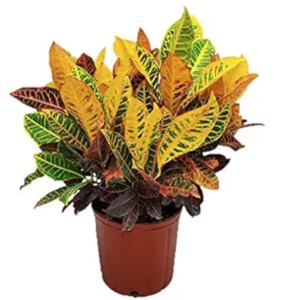
Pet Safety: Toxic
Size: 4 ft
Window: East / West (Bright indirect)
Care tip: Once you’ve got it in a bright spot it likes, avoid moving it around too much; it may drop some leaves in protest to changes in light or temperature. If it gets leggy or too tall, pinch back the tips – this encourages bushier growth. (Wear gloves when pruning, coz its sap can irritate skin.)
36. Dumb cane
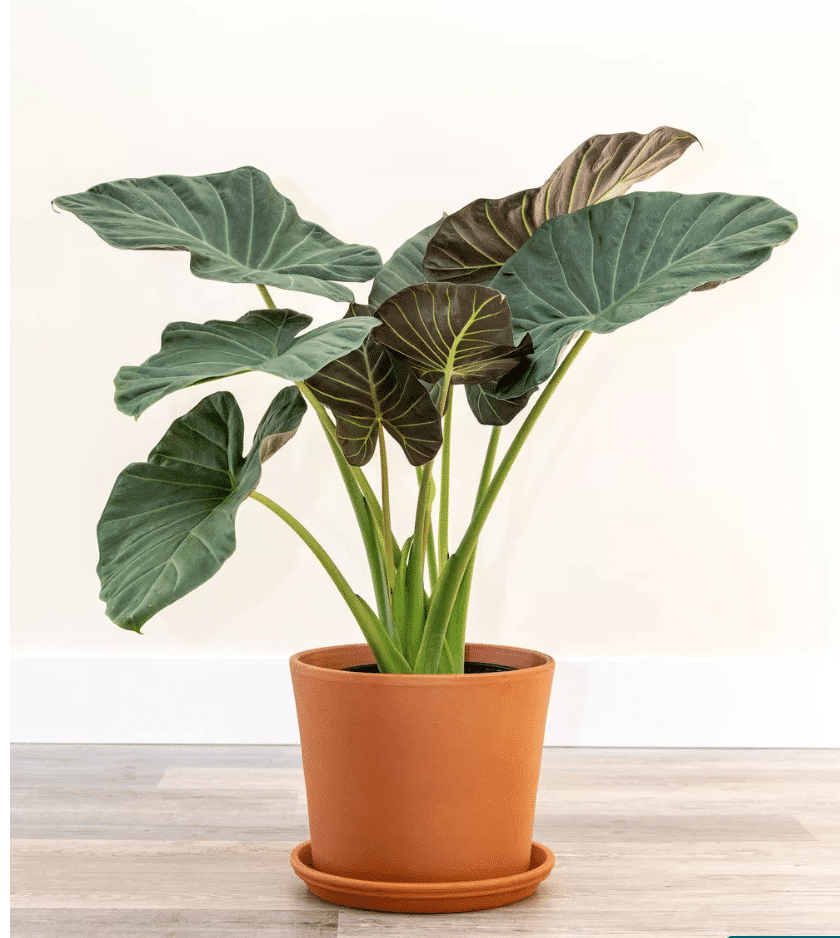
Pet Safety: Toxic
Size: 5 ft
Window: North / West (Low light)
Care tip: . Keep it in indirect light – too much sun can scorch its leaves, but too little can cause it to grow leggy. Don’t hesitate to prune it back – cut the cane and it will often sprout new growth from the cut stem base. You can even root the top you cut off to start a new plant.
37. Areca Palm

Pet Safety: safe
Size: 6 ft
Window: East / South
Care tip: Remove any brown fronds as they appear and provide bright light—this elegant palm is low-maintenance, but appreciates the occasional grooming to look its best.
38. Echeveria
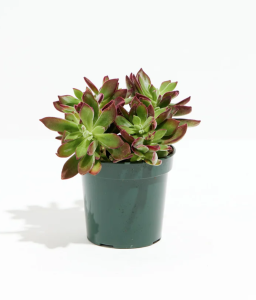
Pet Safety: Safe
Size: 1 ft
Window: East / south (Bright direct light)
Care tip: Sun-loving and low-water – a true desert type. Give it the brightest light you can. Plant in very well-draining soil and water only when the soil is bone dry. It’s better to underwater than overwater an Echeveria (soggy soil will quickly lead to rot). Gently pull away any dead, dried leaves at the bottom of the rosette occasionally to keep things clean! Prevents fungus!
39. Marble queen pothos
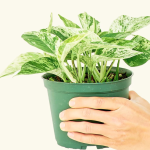
Pet Safety: Toxic
Size: 10 ft
Window: East / North (Low light)
Care tip: Water when the top 50% of the potting mix is dry — it’s quite drought-tolerant and will bounce back if you forget occasionally. If the vines get leggy, feel free to trim them back – pruning encourages bushier growth, and you can stick the cuttings in water to easily propagate new plants!
40. oxalis

Pet Safety: Toxic
Size: 1 ft
Window: East / north (Medium light)
Care tip: Its quirky clover-like leaves fold up at night and open by day – a fun plant to watch. If your oxalis suddenly starts to look shabby or loses all its leaves, don’t panic – it often goes dormant for a few weeks. When this happens, stop watering and let it “rest” in its pot (keep it in a cool, dark spot). After a short dormancy, you’ll see new leaves sprout! Resume watering.
41 Wax Plant
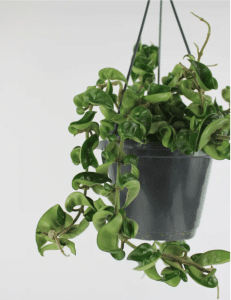
Pet Safety: Non-Toxic
Size: 6 ft
Window: East / South
Care tip: Don’t cut off the old flower spurs – your Hoya will often rebloom from those same little stubs. It also likes to dry out between waterings, so avoid overwatering.
42. Lucky Bamboo

Pet Safety: Toxic
Size: 2 ft
Window: East / north
Care tip: Can be grown in water—use distilled or filtered water and refresh it weekly. In soil, keep it evenly moist. Avoid direct sun to prevent leaf burn on this easy-care “bamboo.”
43. Money Tree
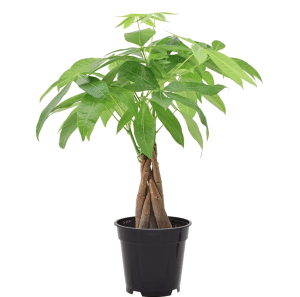
Pet Safety: Non-Toxic
Size: 6 ft
Window: East / South
Care tip: Avoid cold drafts—sudden chills can cause leaf drop. This resilient tree likes a consistent spot; turn it every so often for even growth, but otherwise let it enjoy stability.
44. Monstera (Monstera deliciosa)

Pet Safety: Toxic
Size: 8 ft
Window: East / South
Care tip: Wipe its huge, split leaves occasionally to remove dust and help it soak up light. Provide a sturdy moss pole for support – it will happily climb and reward you with larger, fenestrated leaves.
45. Moth Orchid

Pet Safety: Non-Toxic
Size: 1.5 ft
Window: East / West
Care tip: After blooming, trim the flower spike above a node to encourage a possible rebloom. Orchids prefer bright, indirect light and consistent moisture – but never let them sit in water.
46. Philodendron ‘Prince of Orange’
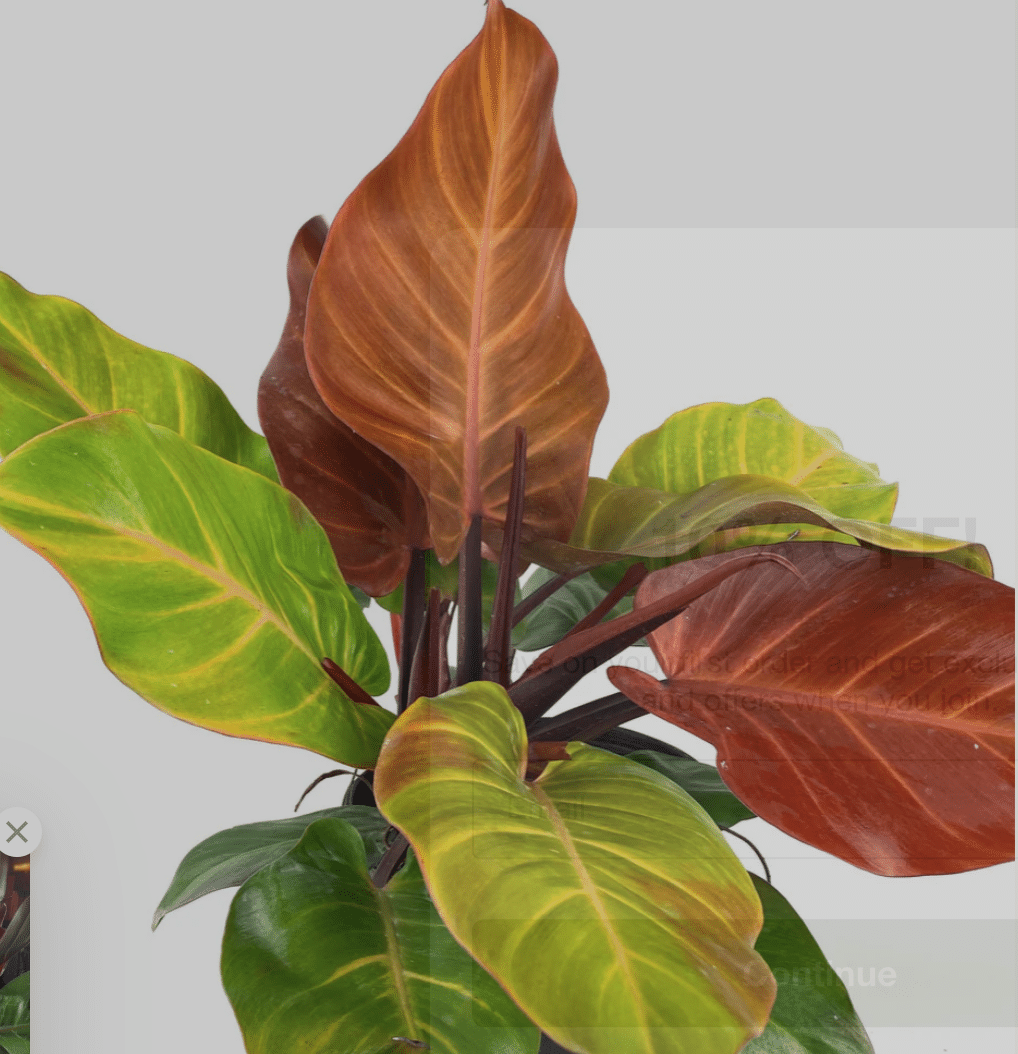
Pet Safety: Toxic
Size: 2 ft
Window: East / West
Care tip: New leaves unfurl bright orange and gradually turn green – a normal spectacle! Give it medium light for best color, and rotate the pot occasionally so it grows evenly.
47.Ponytail Palm

Pet Safety: Non-Toxic
Size: 3.5 ft
Window: West / South
Care tip: Incredibly drought-tolerant – its bulbous base stores water. When in doubt, skip watering (it truly needs water only about once a month). Give it plenty of sun for optimal growth.
48. Pothos ‘N’Joy’ (Epipremnum aureum ‘N’Joy’)

Pet Safety: Toxic
Size: 8 ft
Window: East / North
Care tip: Let its variegated vines cascade from a hanging basket for a pop of color. It’s hardy – tolerate some neglect – but thrives with an occasional pruning, which you can use to propagate new plants easily.
49. Rubber plant

Pet Safety: Toxic
Size: 6 ft
Window: East / South
Care tip: Wear gloves when pruning – the sap can irritate skin. Give it bright light for best color, and allow the top inch of soil to dry out between waterings to prevent root rot.
50. Whale fin snake plant

Pet Safety: Toxic
Size: 3-5 ft
Window: North / South
Care tip: Exceptionally slow-growing – don’t worry if it only produces a new leaf once in a long while. Like other snake plants, it prefers neglect over too much attention: infrequent watering and almost any light level will keep it happy.
How to choose the easy care indoor plants for your needs?

Here are the top 5 things to consider:
Start with Plants Known for Their Durability
As a beginner, it’s best to start with plants known for their hardiness: snake plants, pothos, or ZZ plants are incredibly forgiving and resilient, and not to mention, beautiful! In our home, these plants have been lifesavers, staying healthy even while we are still learning to coordinate the best watering and care routine for the dozens of plants we are collectively growing. In the list below, we have 21 such plants for you!
Ensure Plant Safety for Pets and Children:
If you have pets, like we do (we have two furry cats) check the ASPCA’s website to be doubly sure for what plants are safe for your pets. We also have collected the information below in the list. Some of these low maintenance indoor plants can also be hanged in case your cats aren’t as acrobatic. Our pets don’t really bother with plants that have broad rough textured leaves (fiddle leaf fig and zz plant, they don’t even go near) so we are safe there, but if your pets are prone to eating all leaves, rely on the ones that are absolutely pet safe. Don’t worry, we have got you in the list below!
Equip Yourself with Basic Tools
Invest in a few basics like a watering can with a narrow spout for precise watering. Pruning shears for trimming dead leaves, or just use your scissors. A moisture meter to check soil moisture levels before watering – or use your two fingers dipped into the soil for about 3 inches to check for its dryness. Finally a spray bottle to mist plants that prefer higher humidity, like ferns. This is it, this is all you need. less than 20 bucks perhaps, and you will do so great!
Get Familiar with Basic Care Requirements
Before bringing a plant home research its basic care needs. Understand the watering frequency, pet safety, light requirement and soil type (refer to plants that need low sunlight for more info). There are Apps and plant care reminders that would be great for beginners, but honestly, these plants below don’t require so much effort. Just follow consistent watering schedule, checking the dryness of the soil, and put them in the light that the plant needs based on our table below and you will be good. But of course, as you get more confident, you will find more resources on this website to accompany your journey of being a plant parent.
Evaluate Your Home’s Lighting
Observe the natural light in your home. Note which areas get bright light and which stay in the shade most of the day. For low-light spots, plants like snake plants and ZZ plants are ideal. In brighter areas, consider pothos or spider plants. In the table below we talk about where we have placed our plants, and also provide advice on where is the ideal location for each plant. We got you 🙂
FAQ
What are the best easy care indoor plants for low light conditions?
Snake plants, ZZ plants, and pothos are excellent choices for easy care plants good for low light environments.
How often should I water low-maintenance indoor plants?
Most easy care plants like snake plants and pothos prefer to dry out between waterings, so water when the top inch of soil is dry. Give or take 1-2 weeks between watering. But this will vary based on the seaon.
What types of pots are best for easy care indoor plants?
Use pots with good drainage: a terracotta or ceramic pots with drainage holes, to prevent overwatering.
Can easy care indoor plants improve air quality?
Yes, plants like snake plants and peace lilies are some of the best plants that produce more oxygen and are also easy care
Are there any easy care indoor plants that are safe for pets?
Yes, plants like spider plants and Boston ferns are non-toxic and safe for homes with pets.
Note on how we compile this list
This list wasn’t just pulled together—we grew it, lived with it, and double-checked it. We spoke to fellow community gardeners, including one of our own housemates, and drew from our experience caring for hundreds of houseplants in our Brooklyn community home. We also verified plant details with authoritative sources like The Spruce, Better Homes & Gardens, The Sill, ASPCA, and Garden Design to make sure every recommendation is trustworthy, accurate, and helpfu!
Conclusion
Easy care indoor plants can turn your home into a beautiful green haven with very little care. We know starting out can feel overwhelming, but we know that you’ve got this! These resilient plants will thrive even if you make a few mistakes along the way. Every plant parent starts somewhere, and though we now have a few dozens plants growing in our home, we also started out with just one plant. Let us know in the comments if you have any questions. If you have any tips for new parents, please put it in the comments as well and help the community out. Happy planting!

